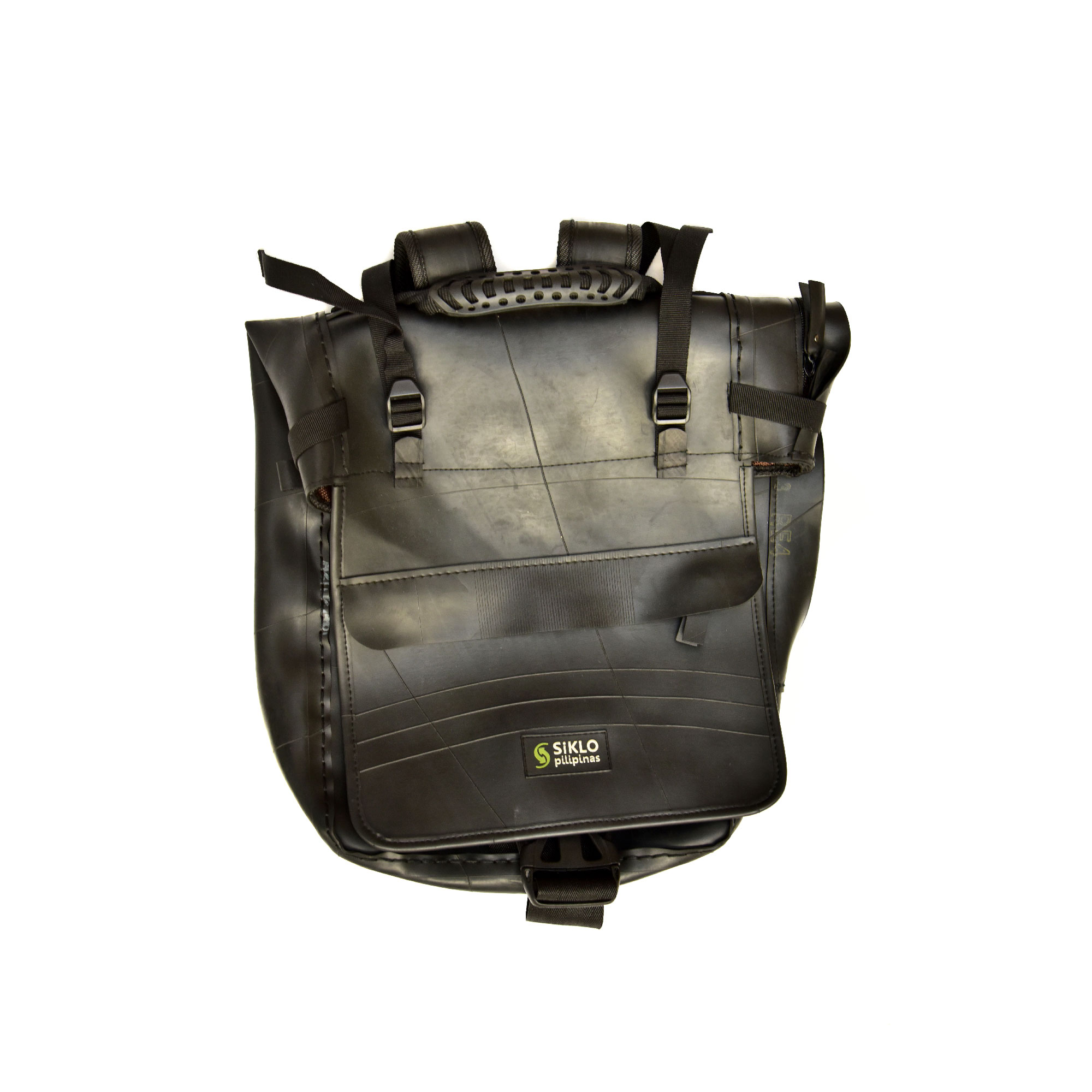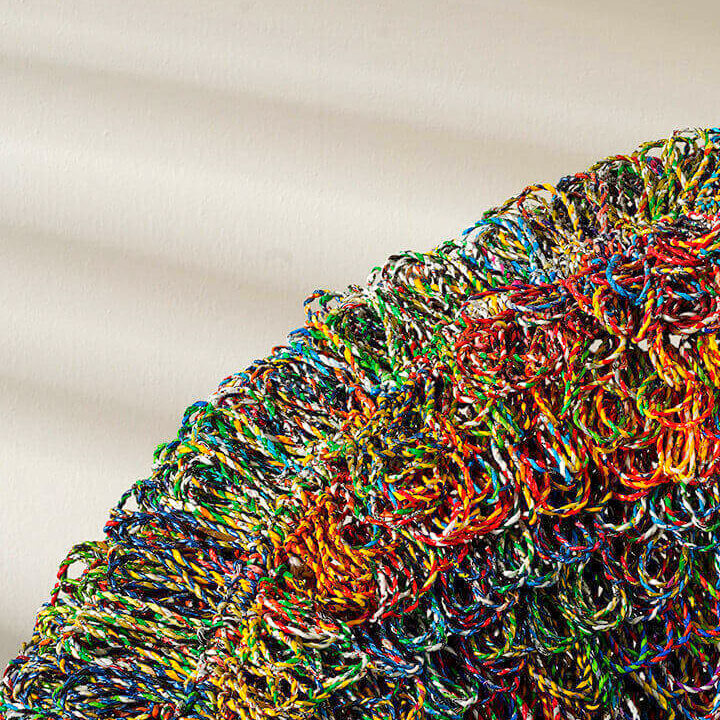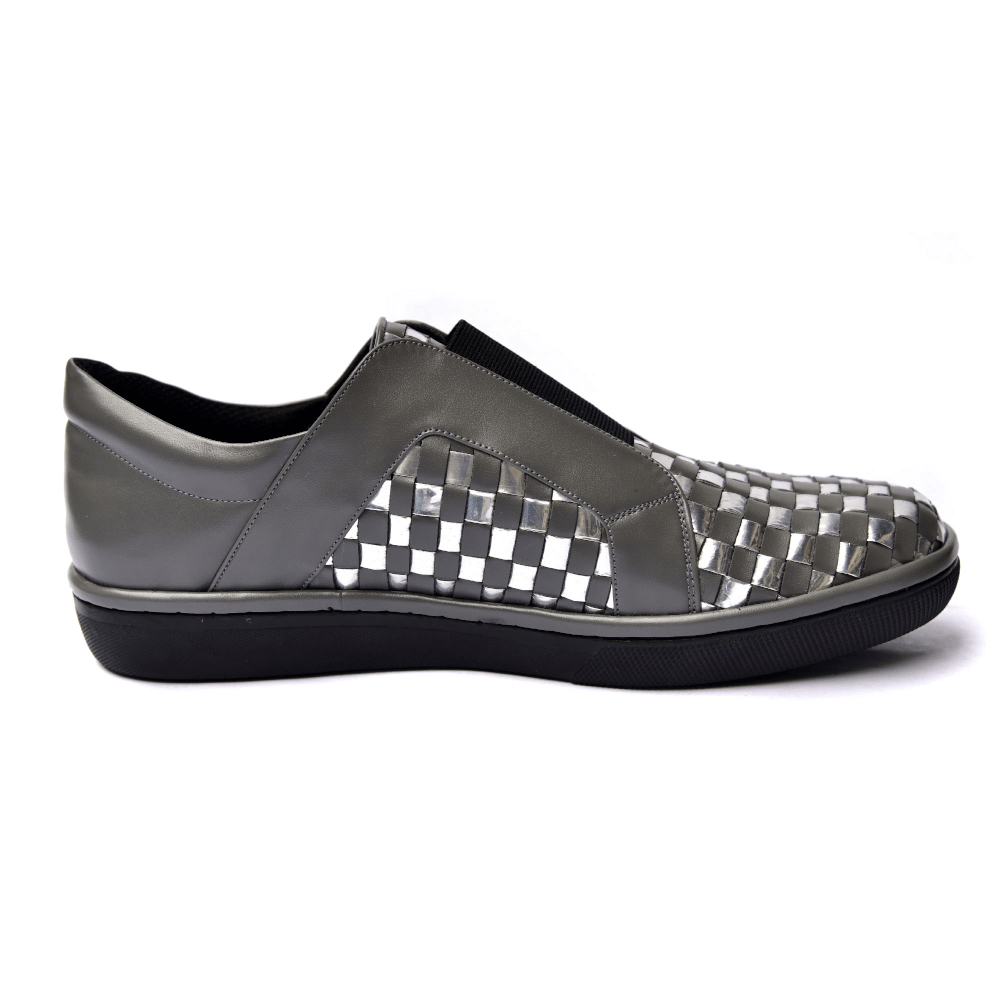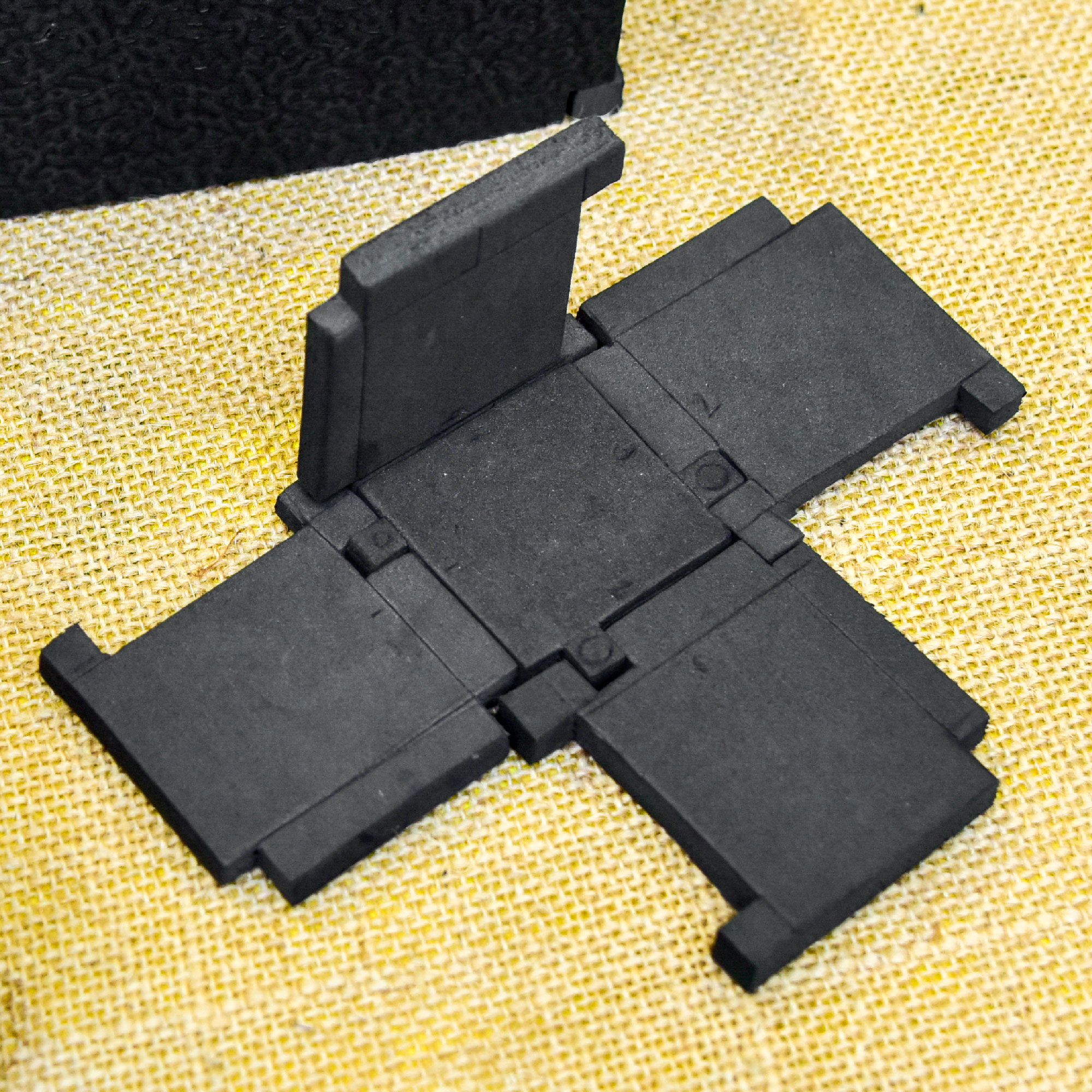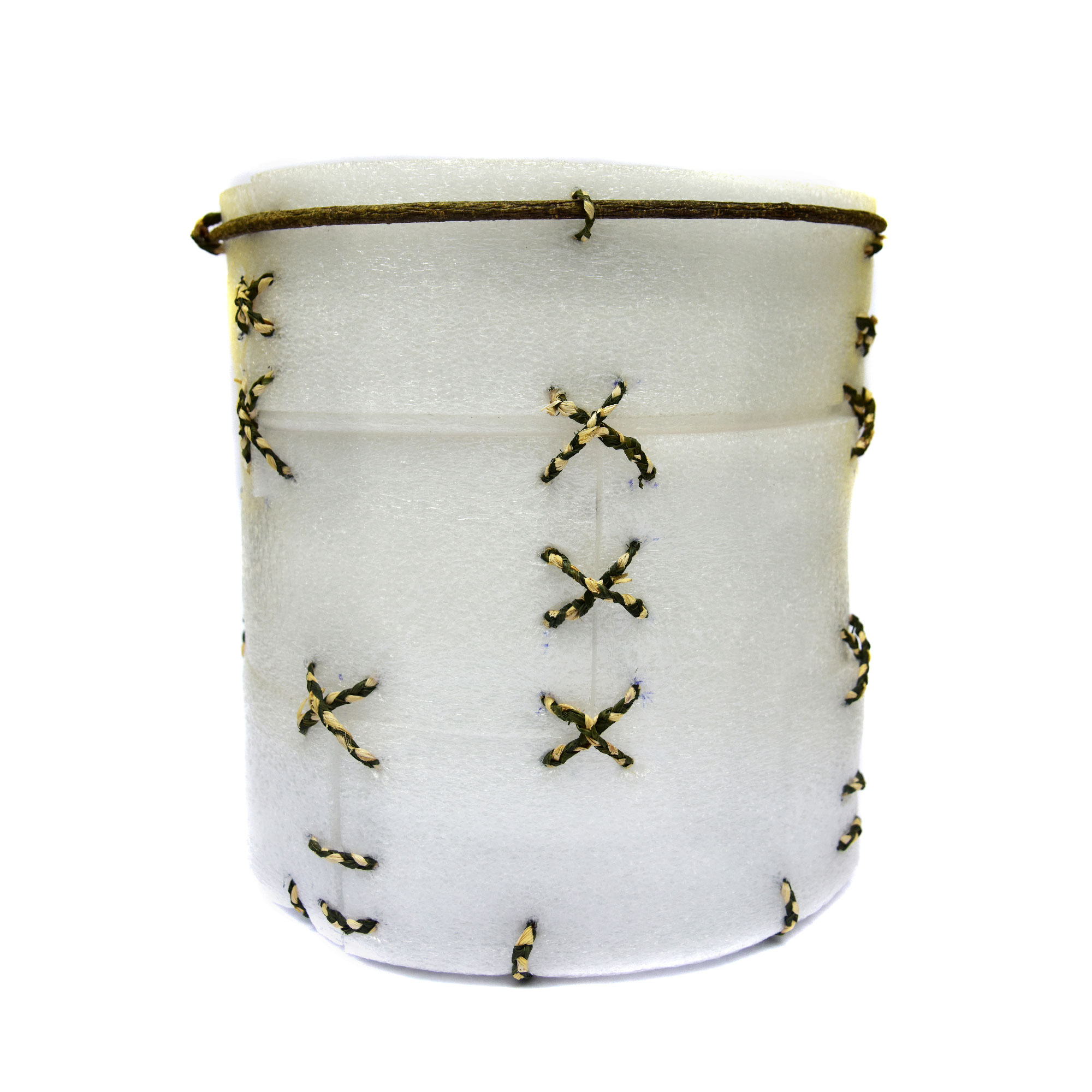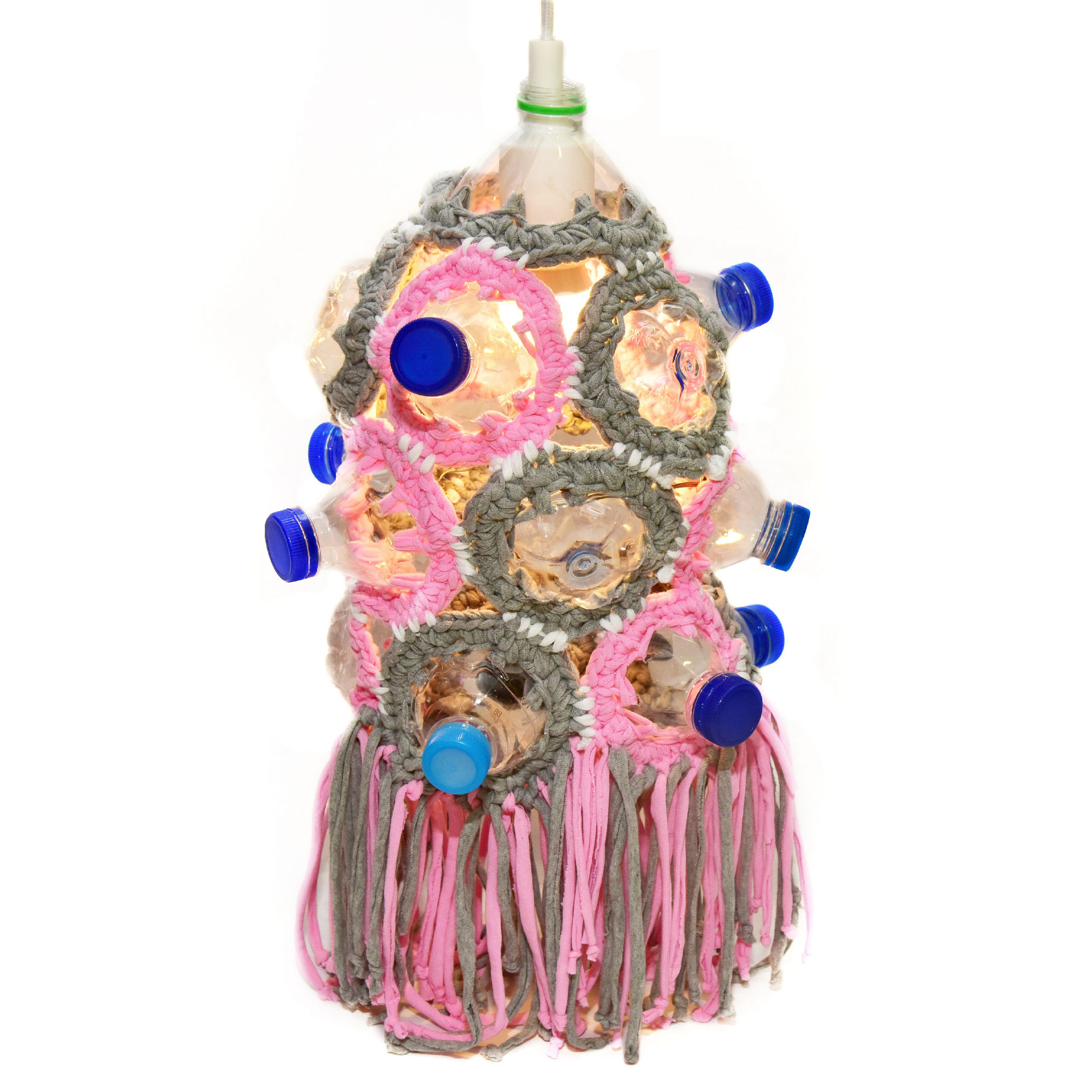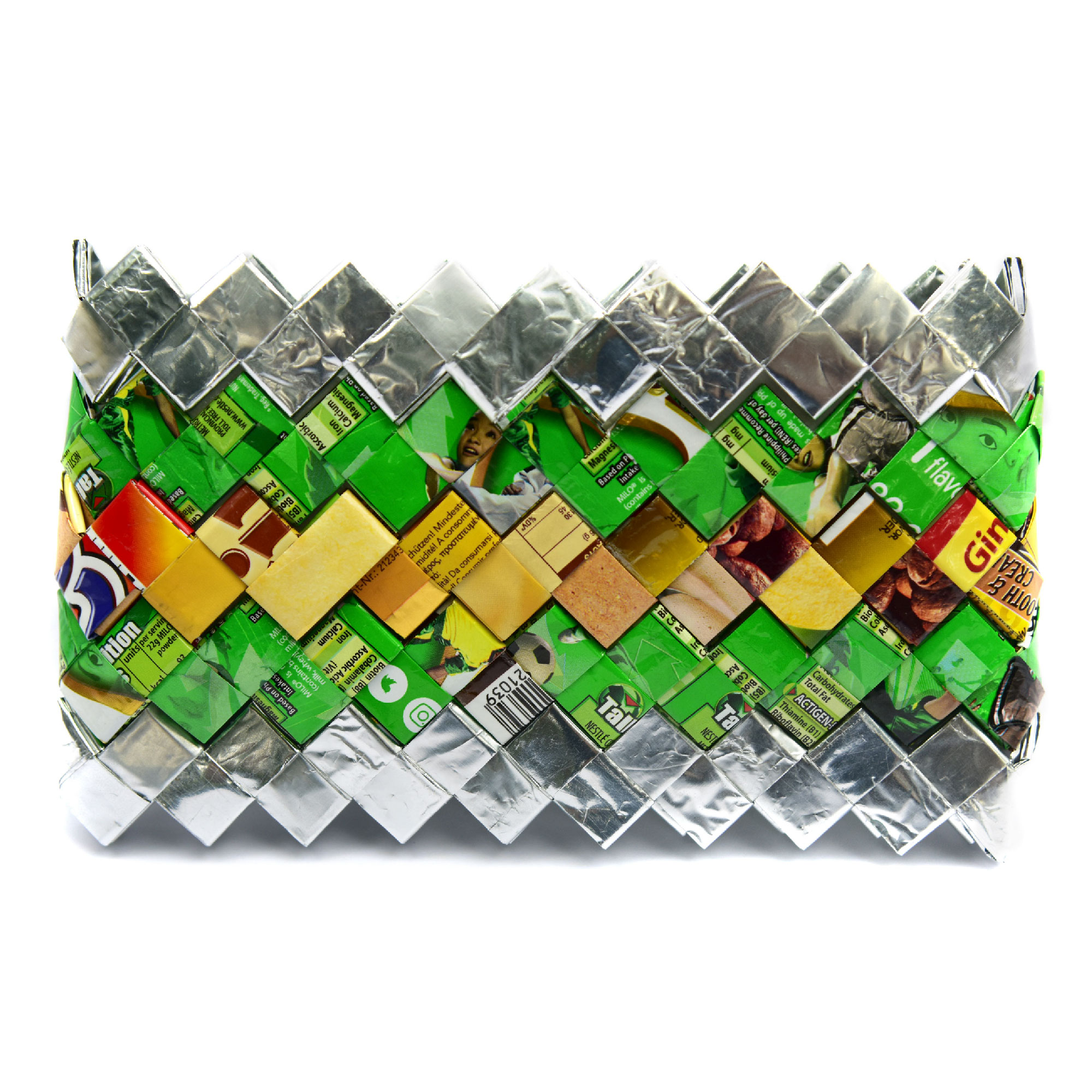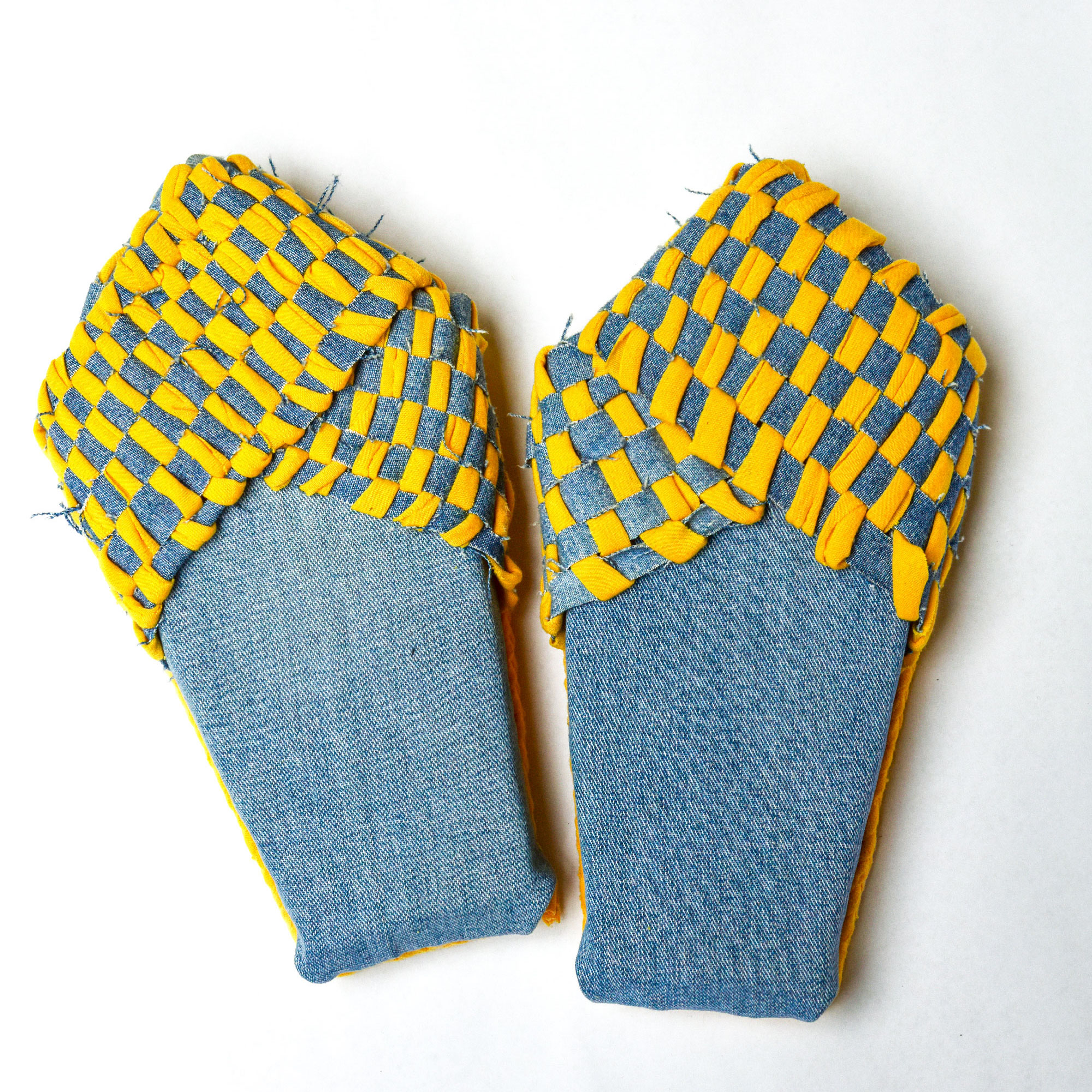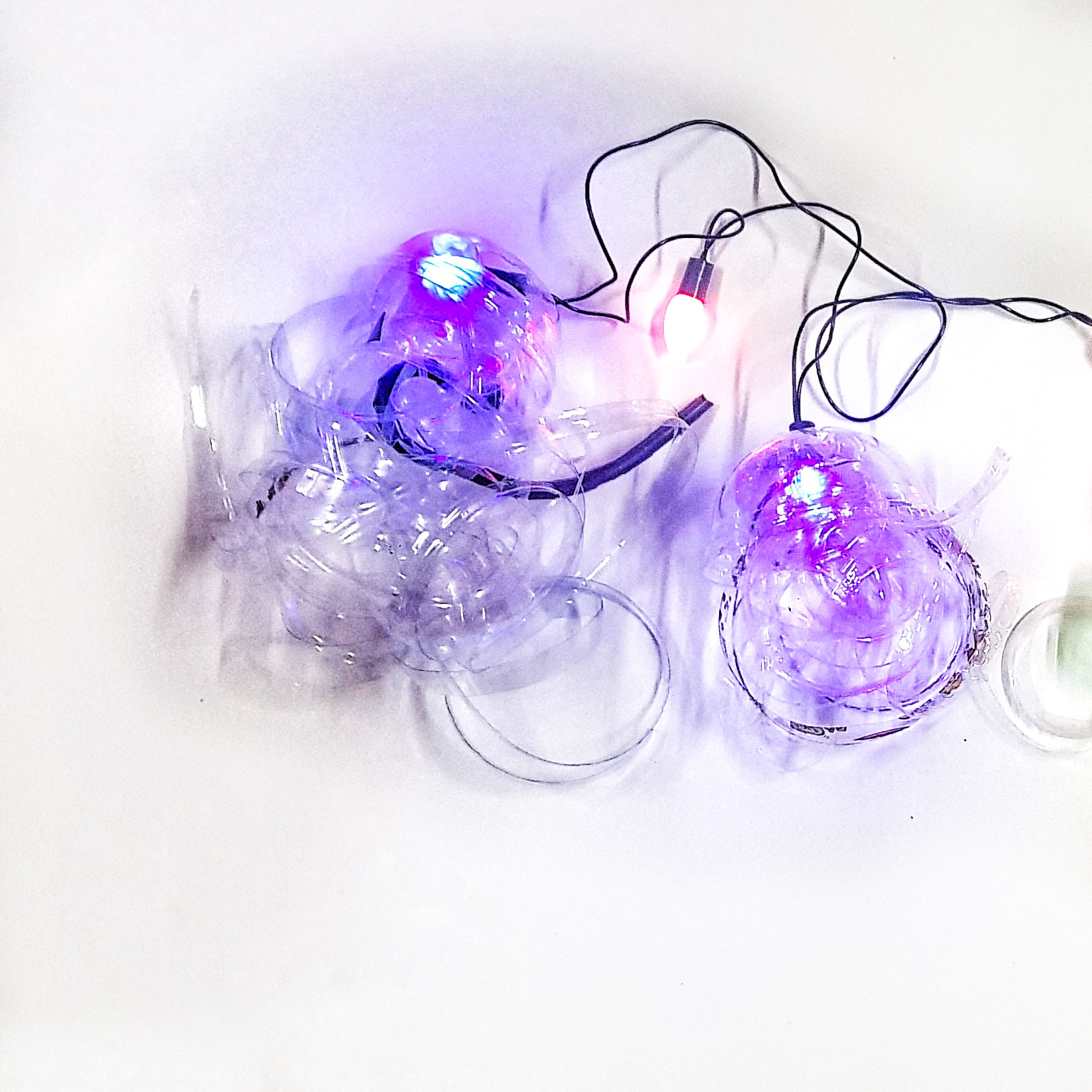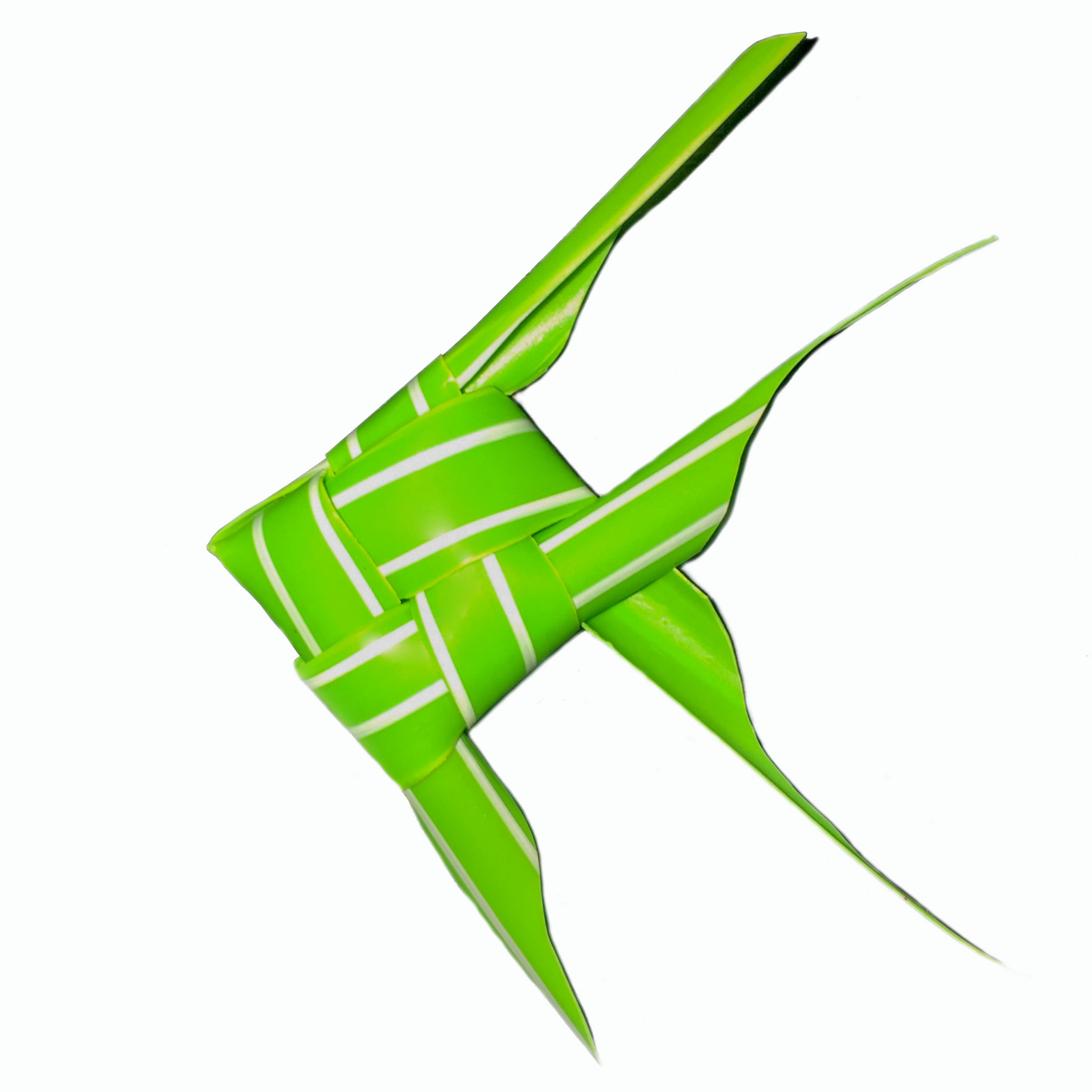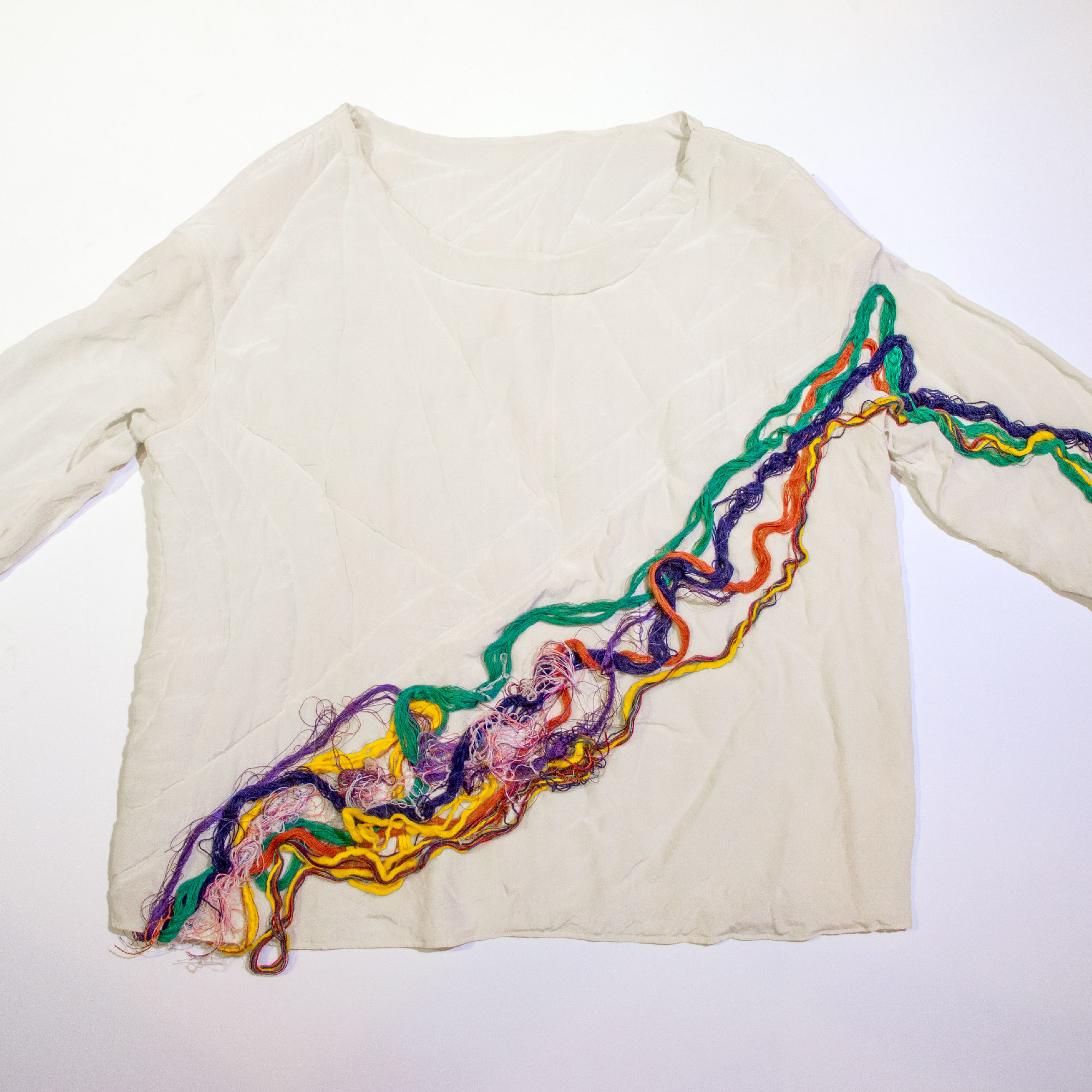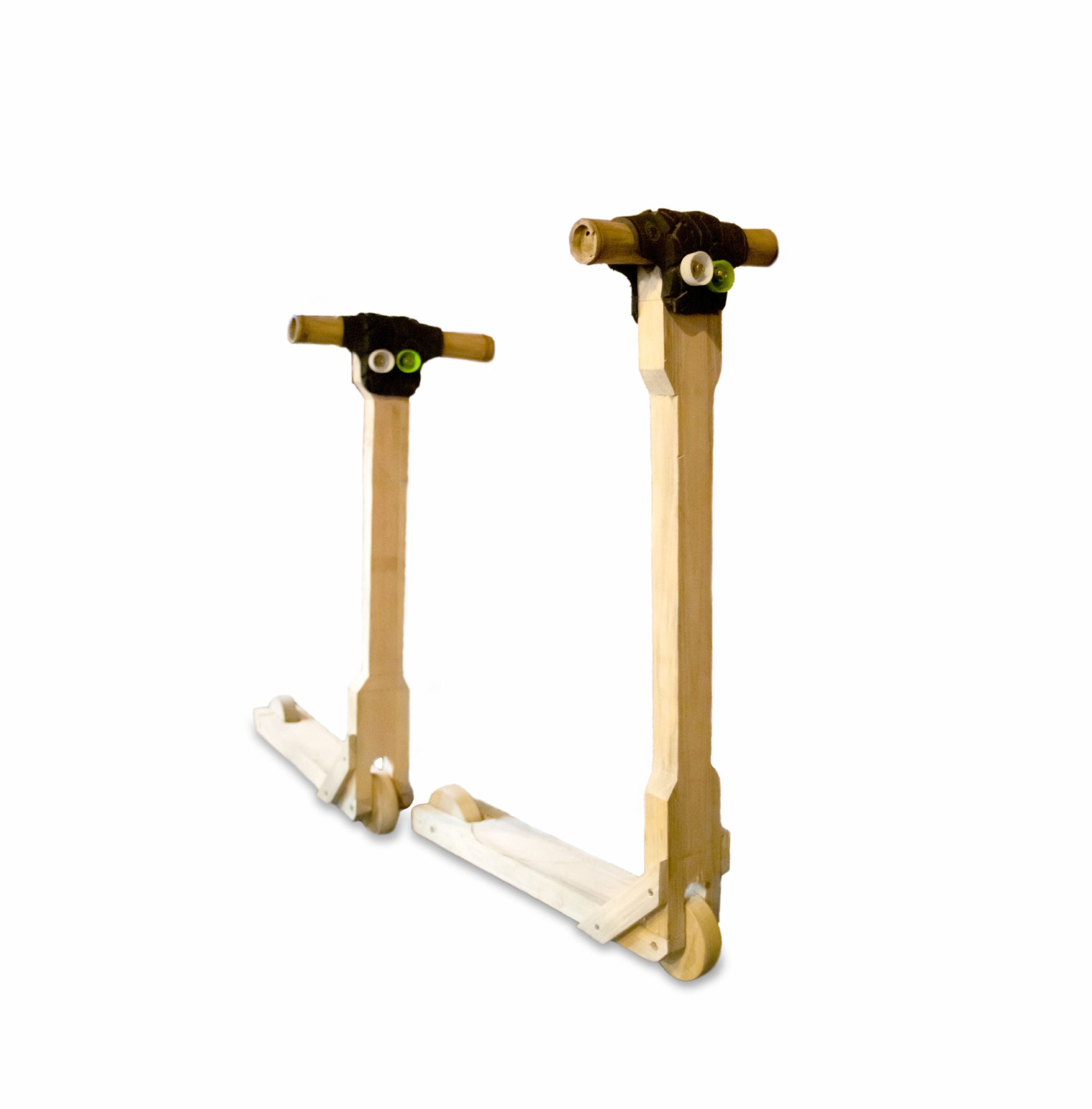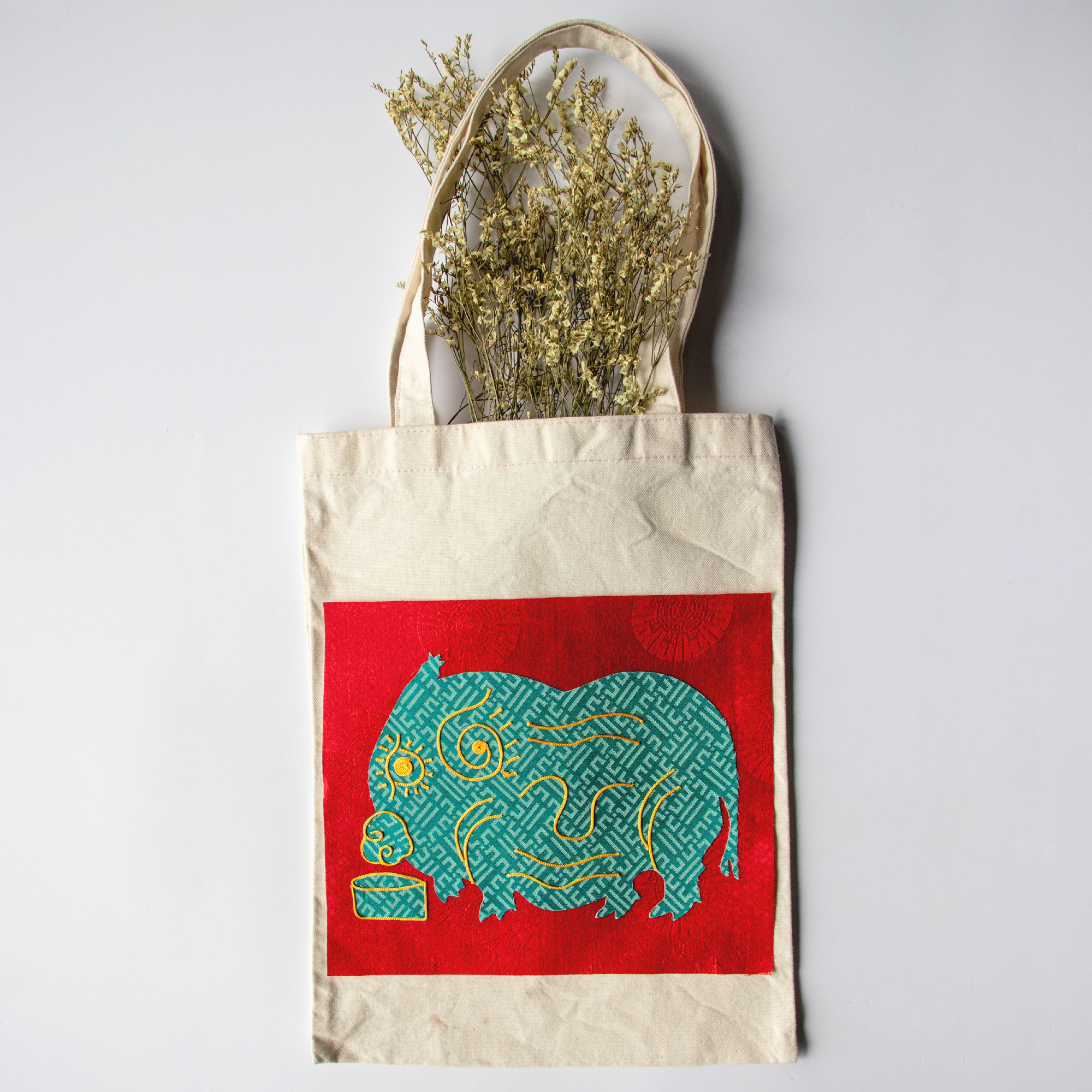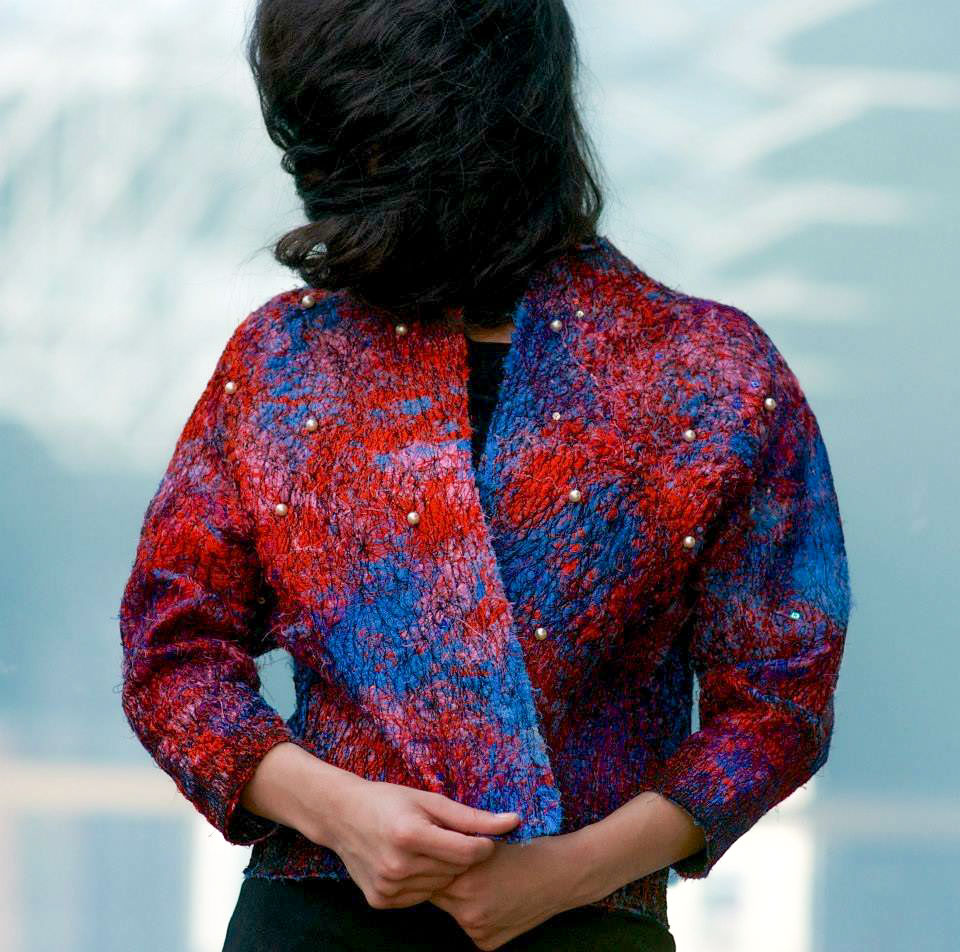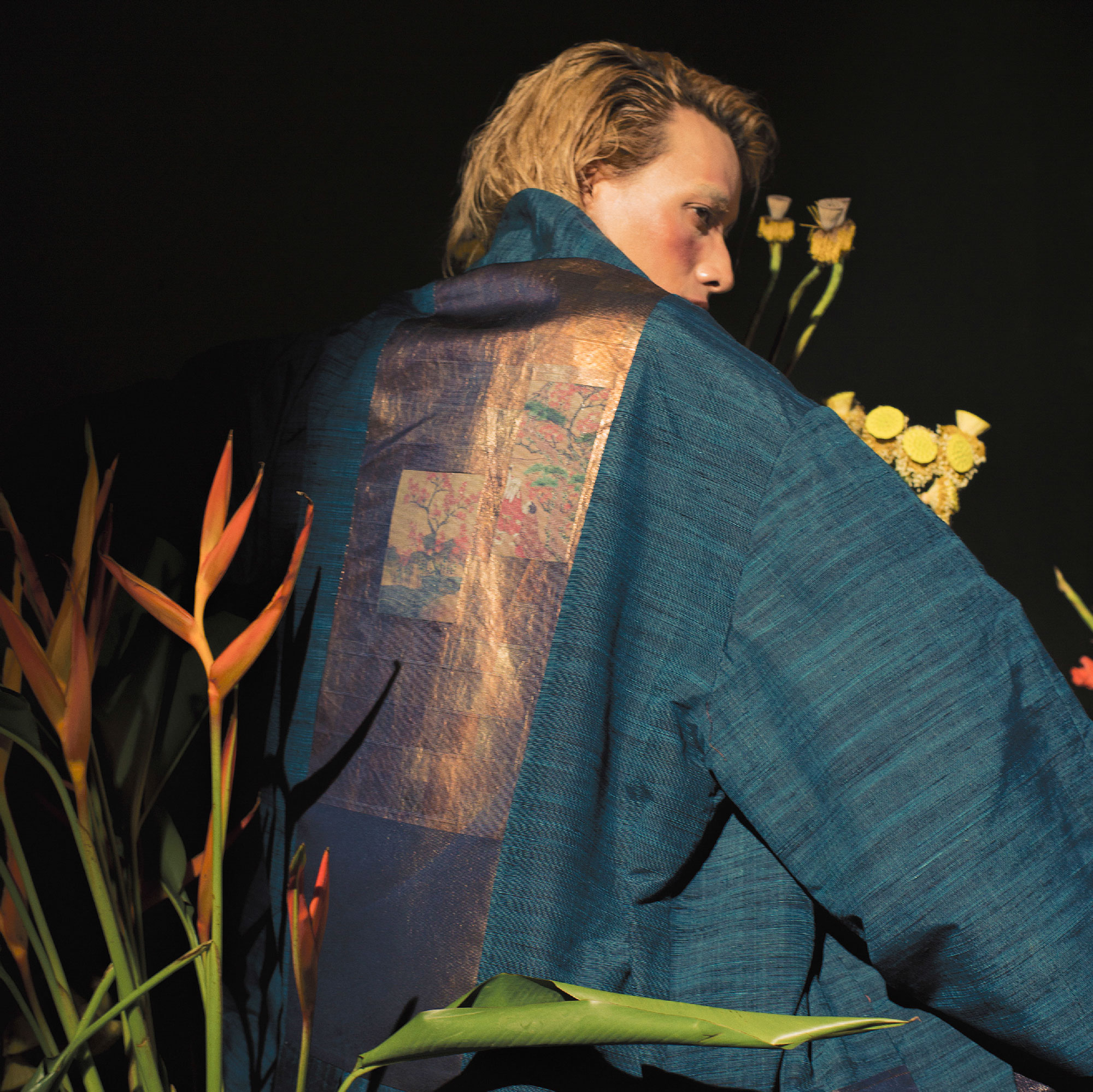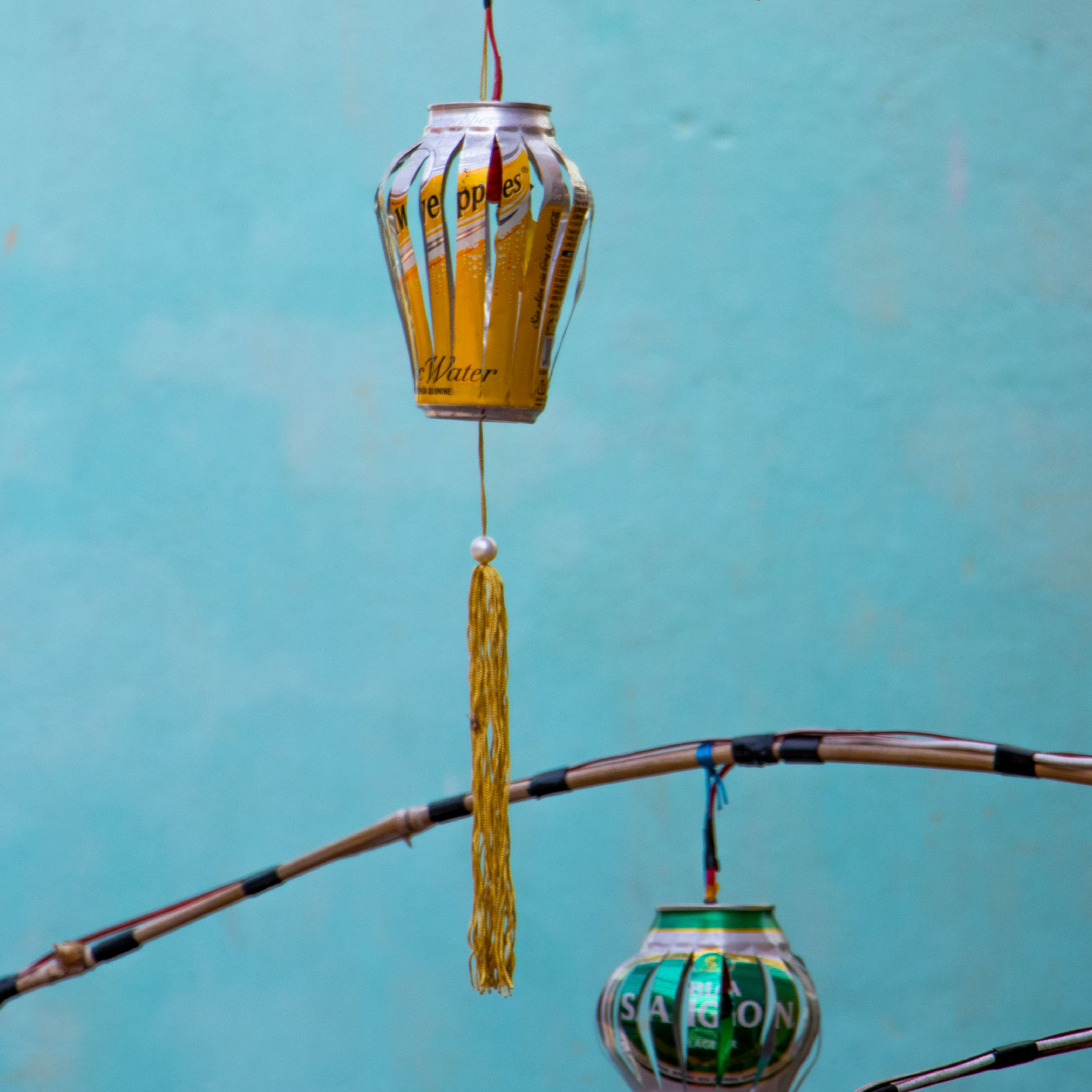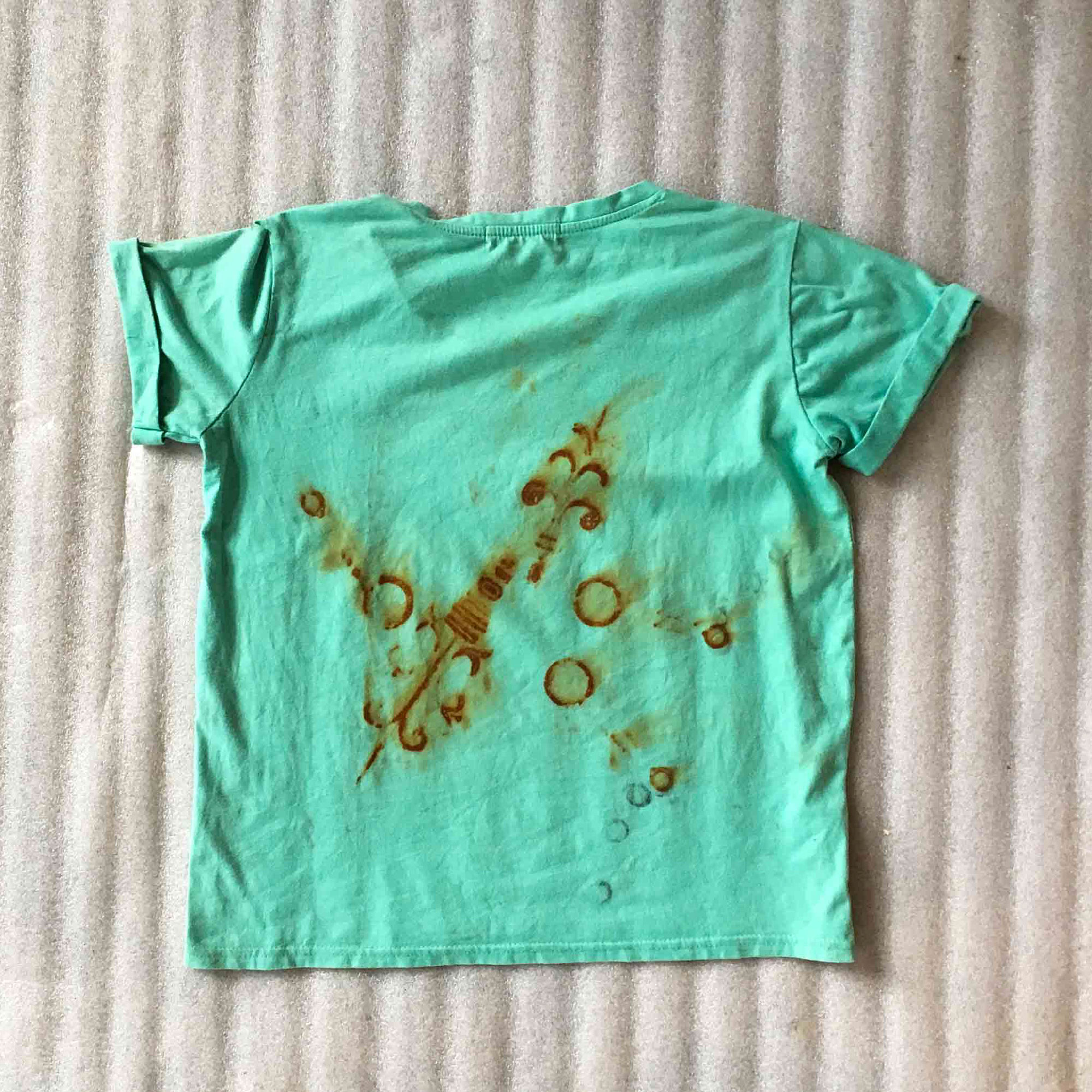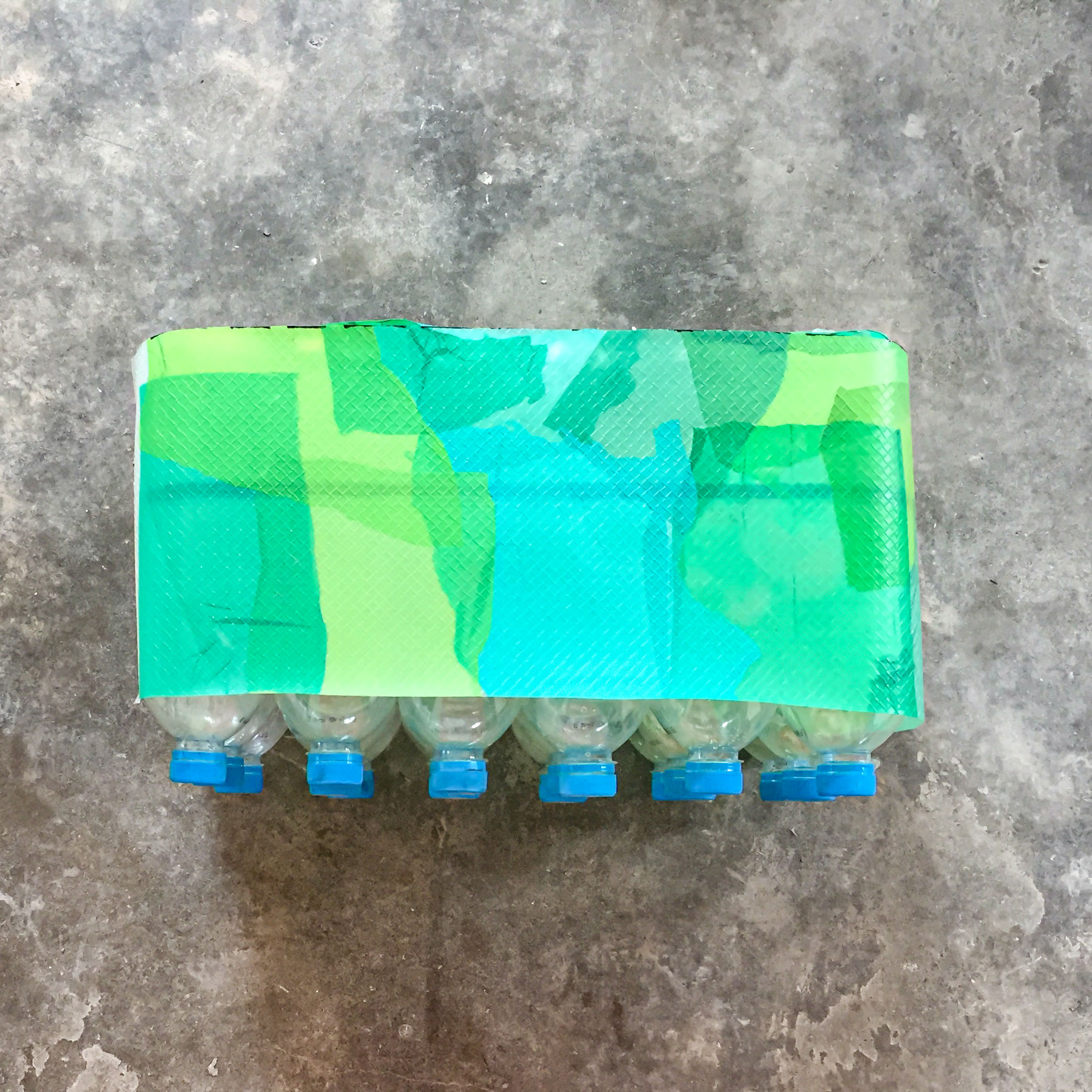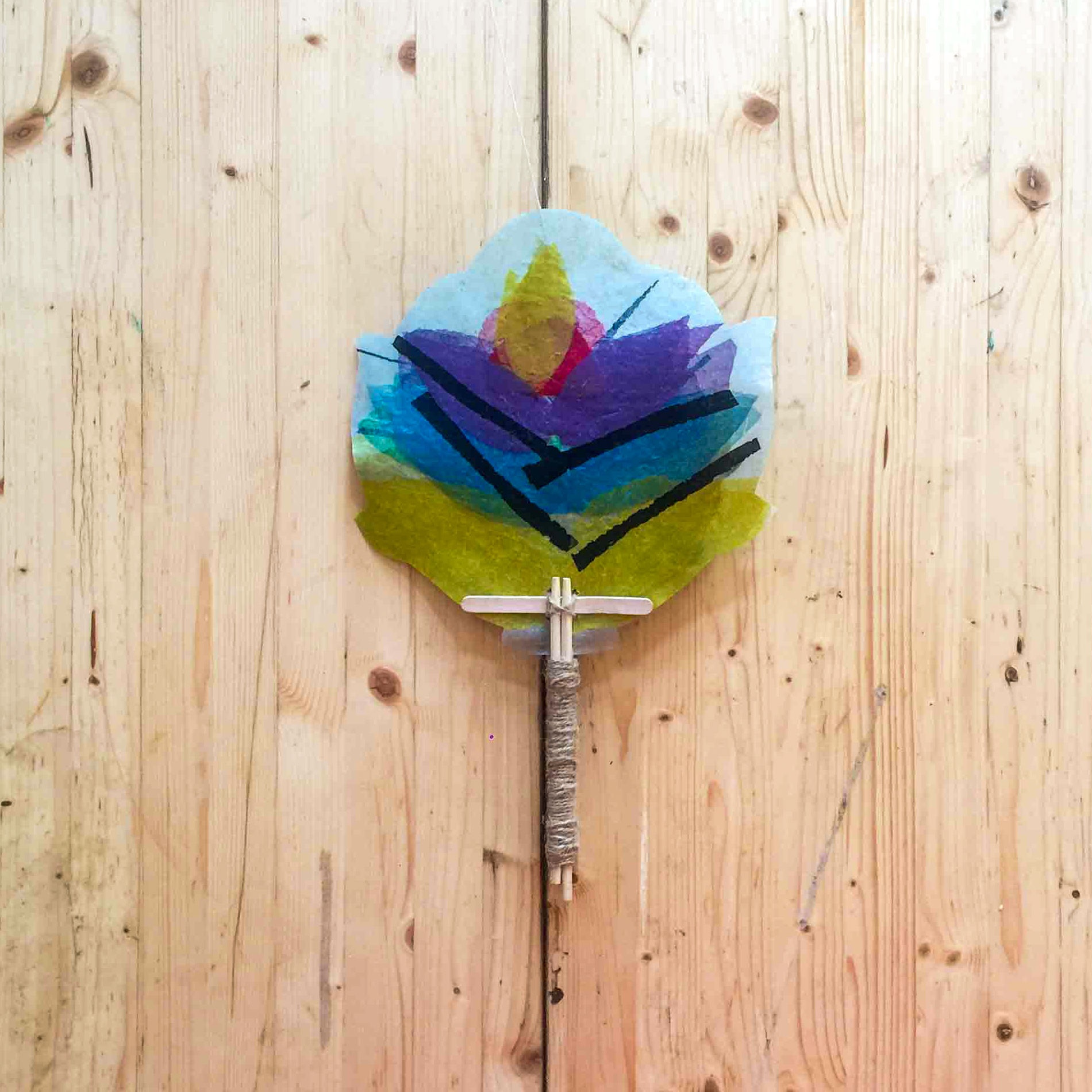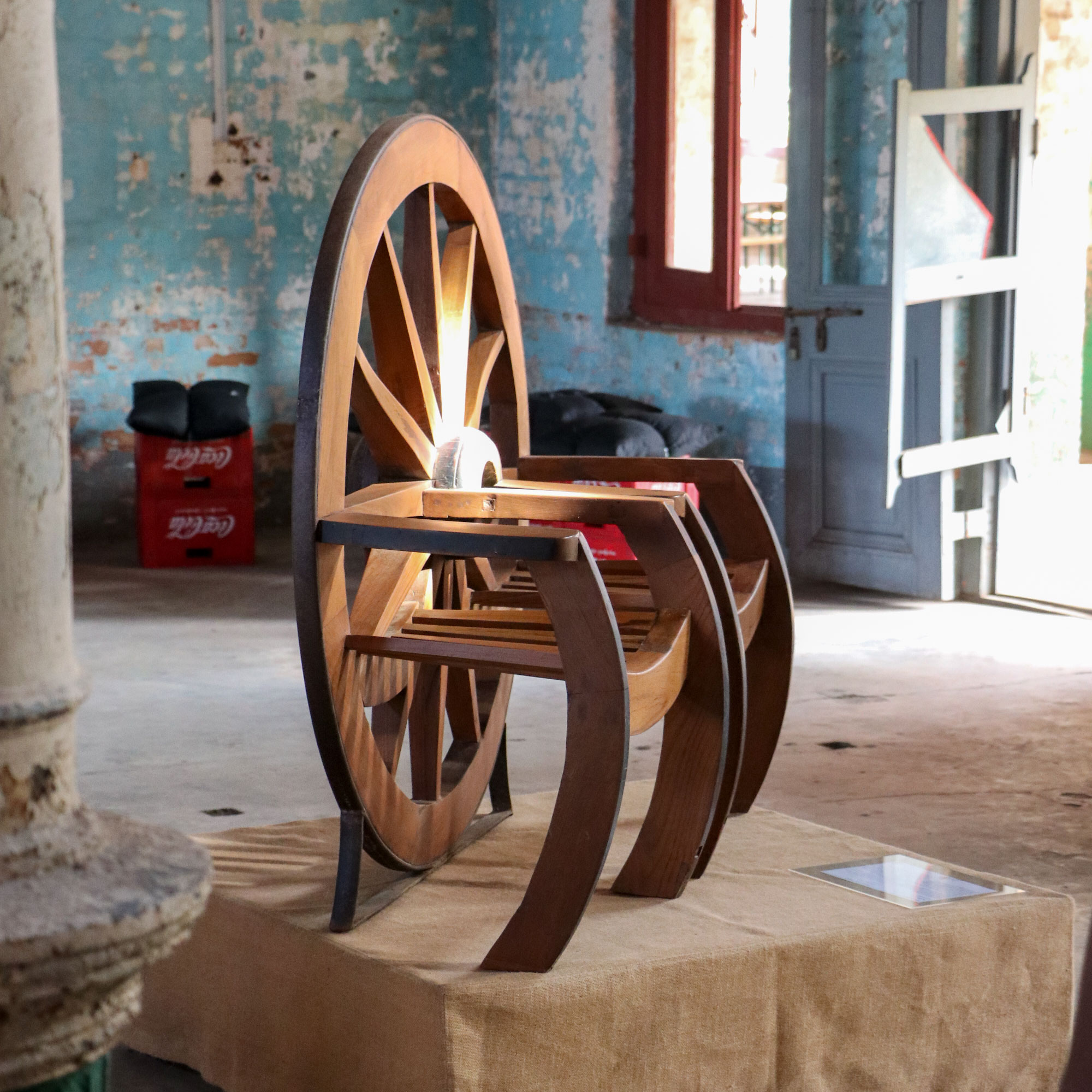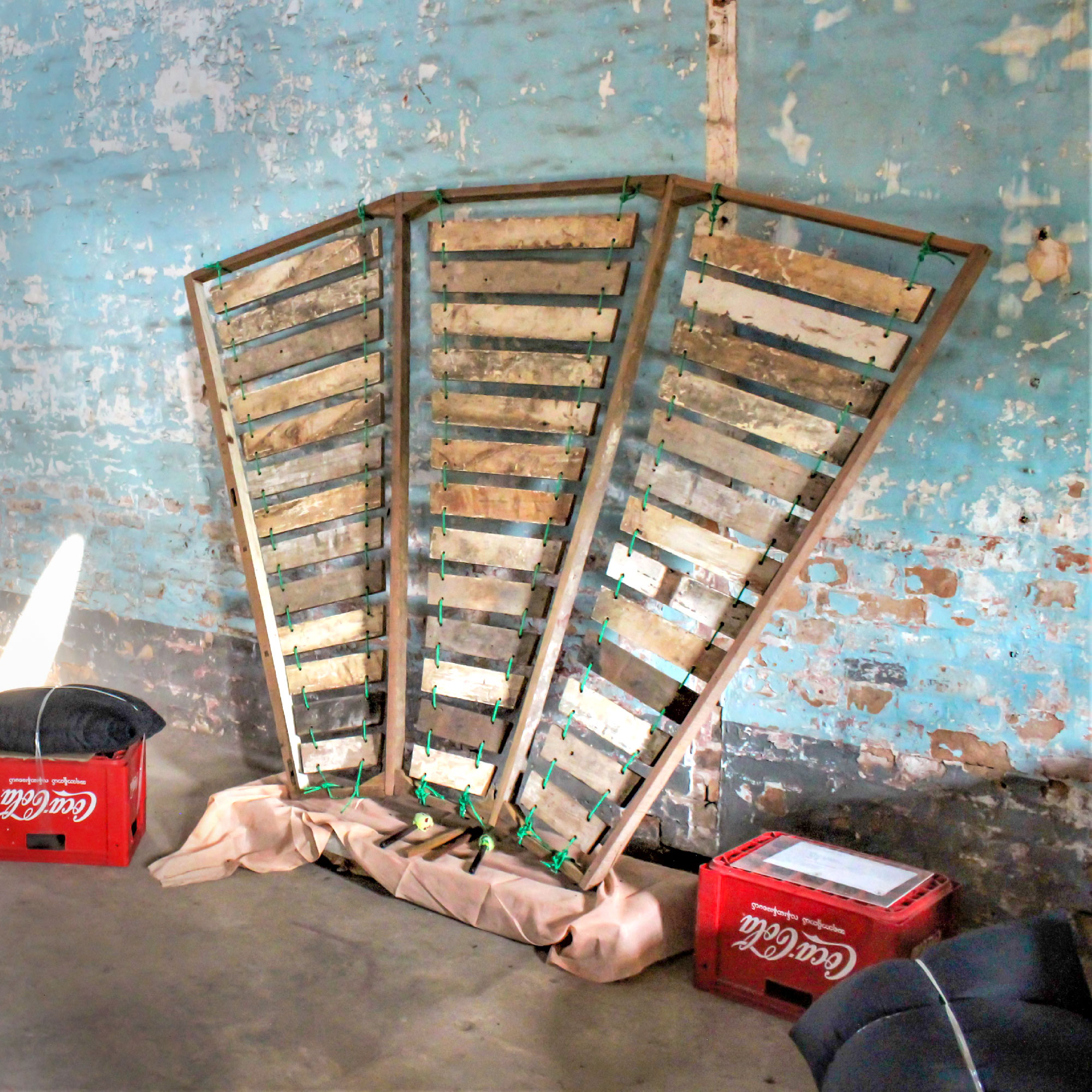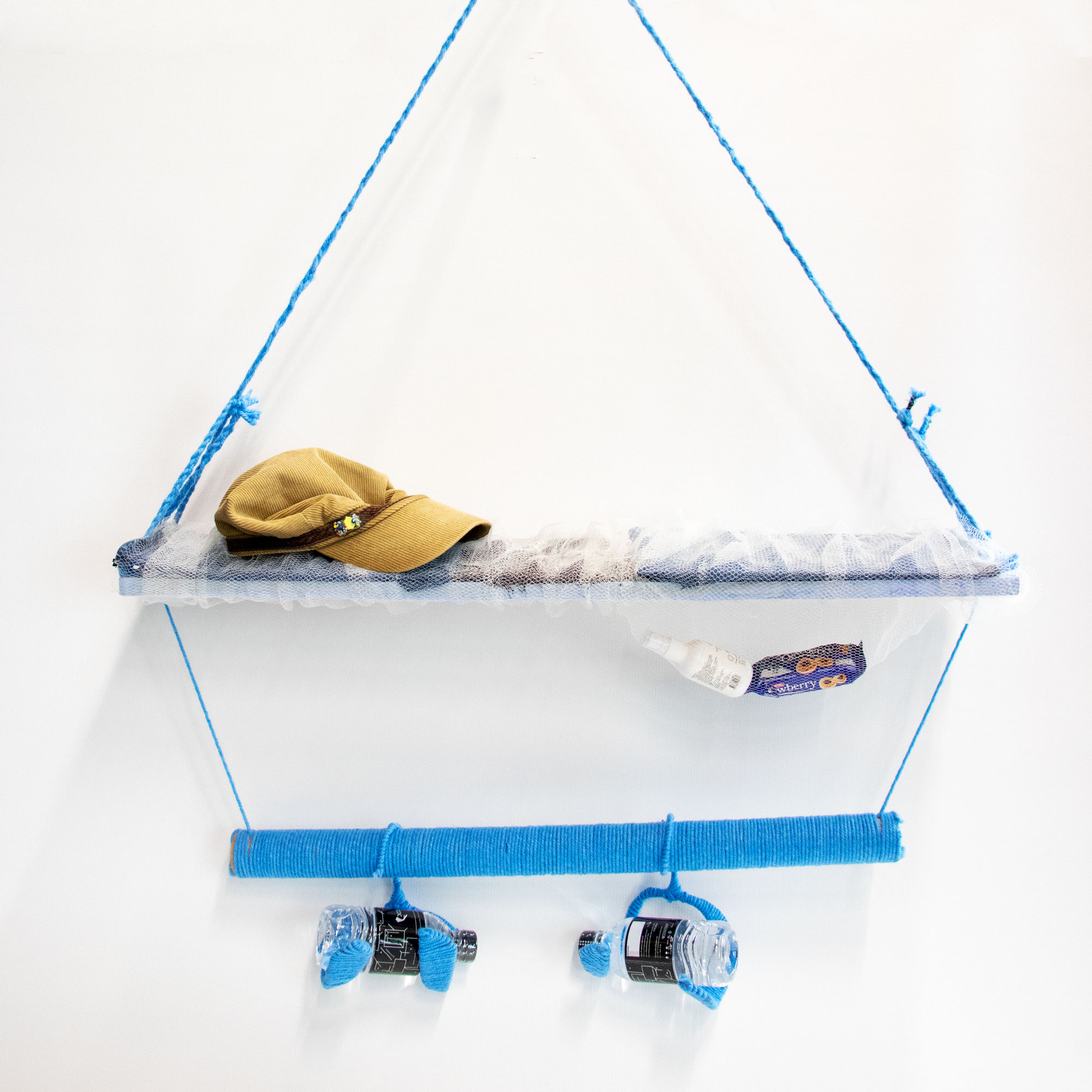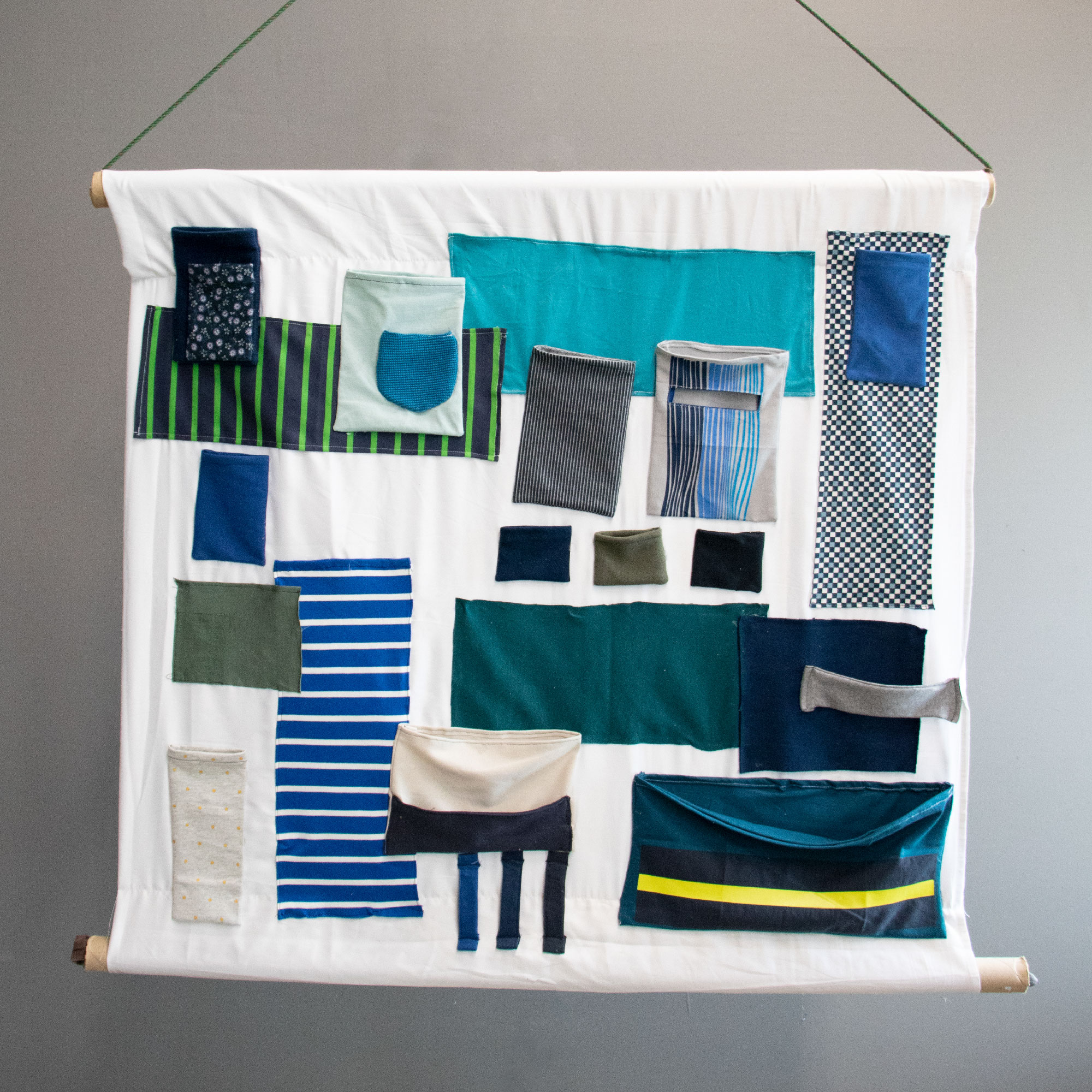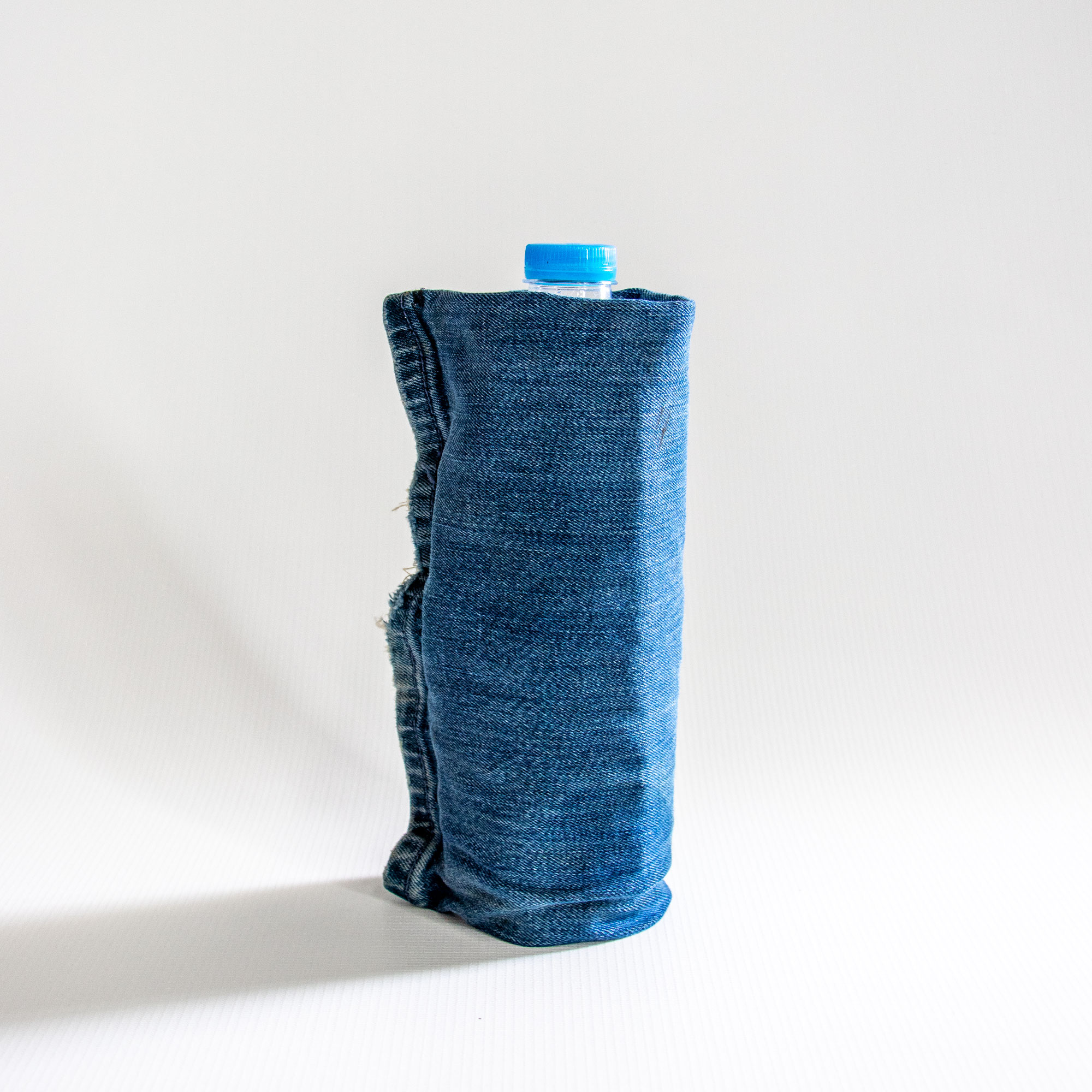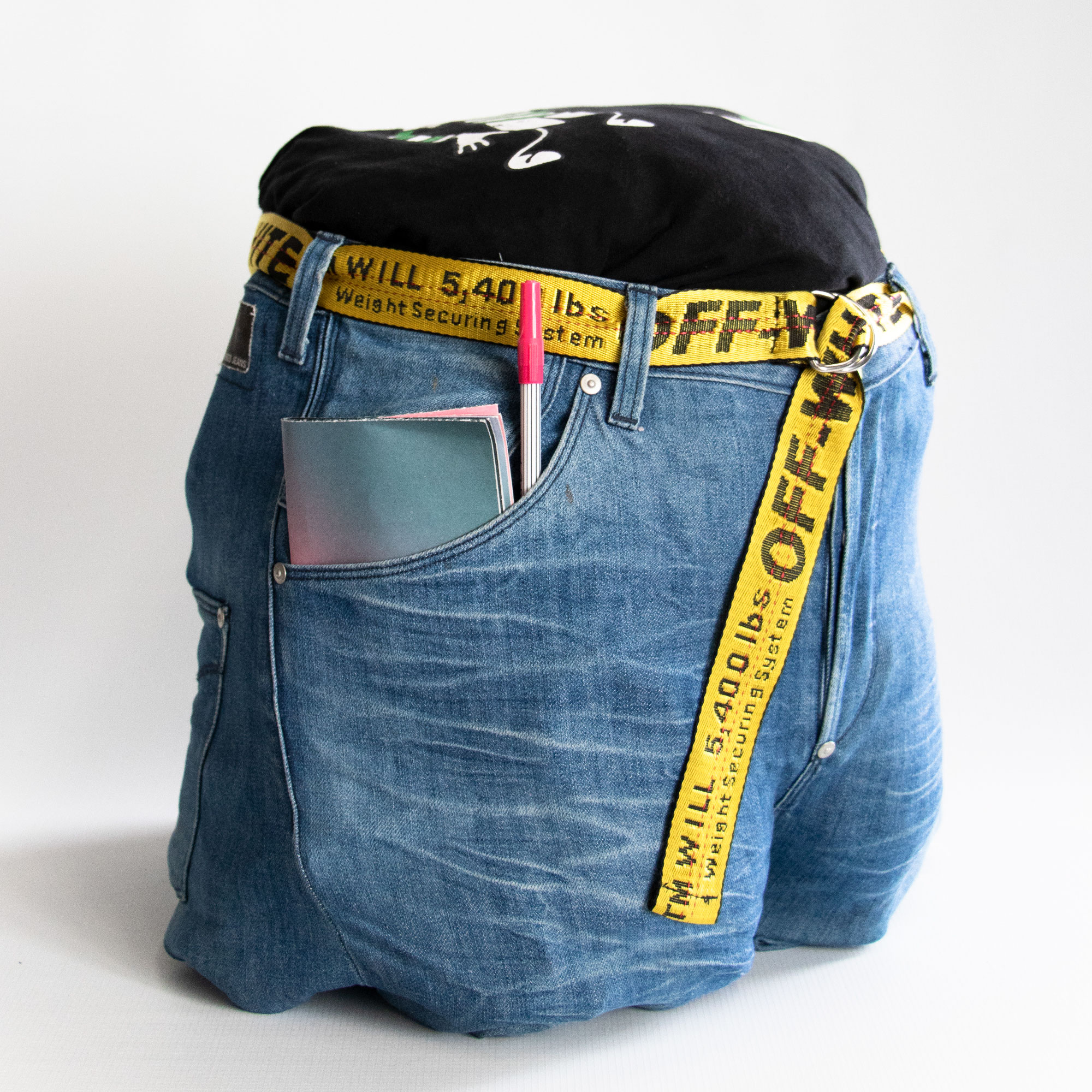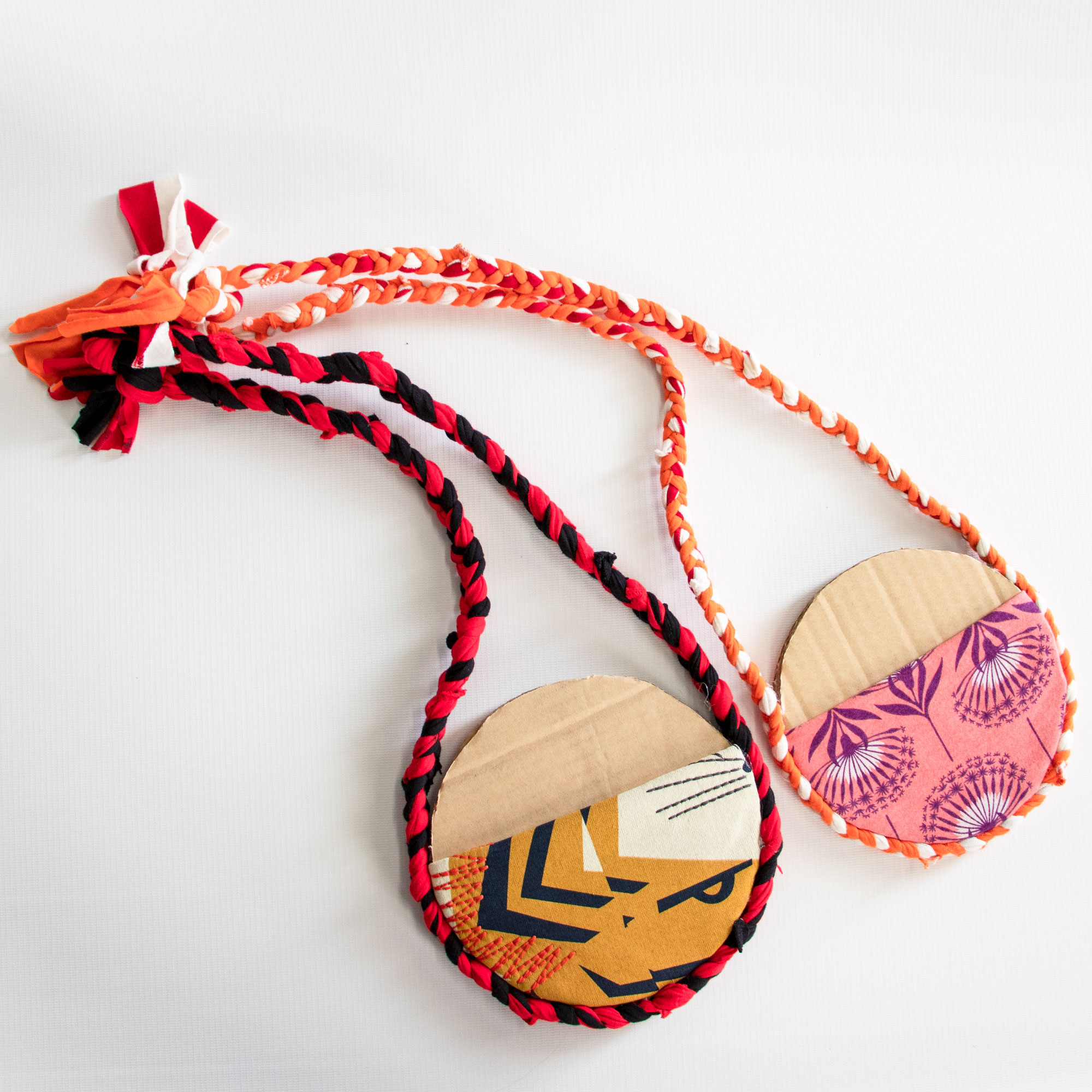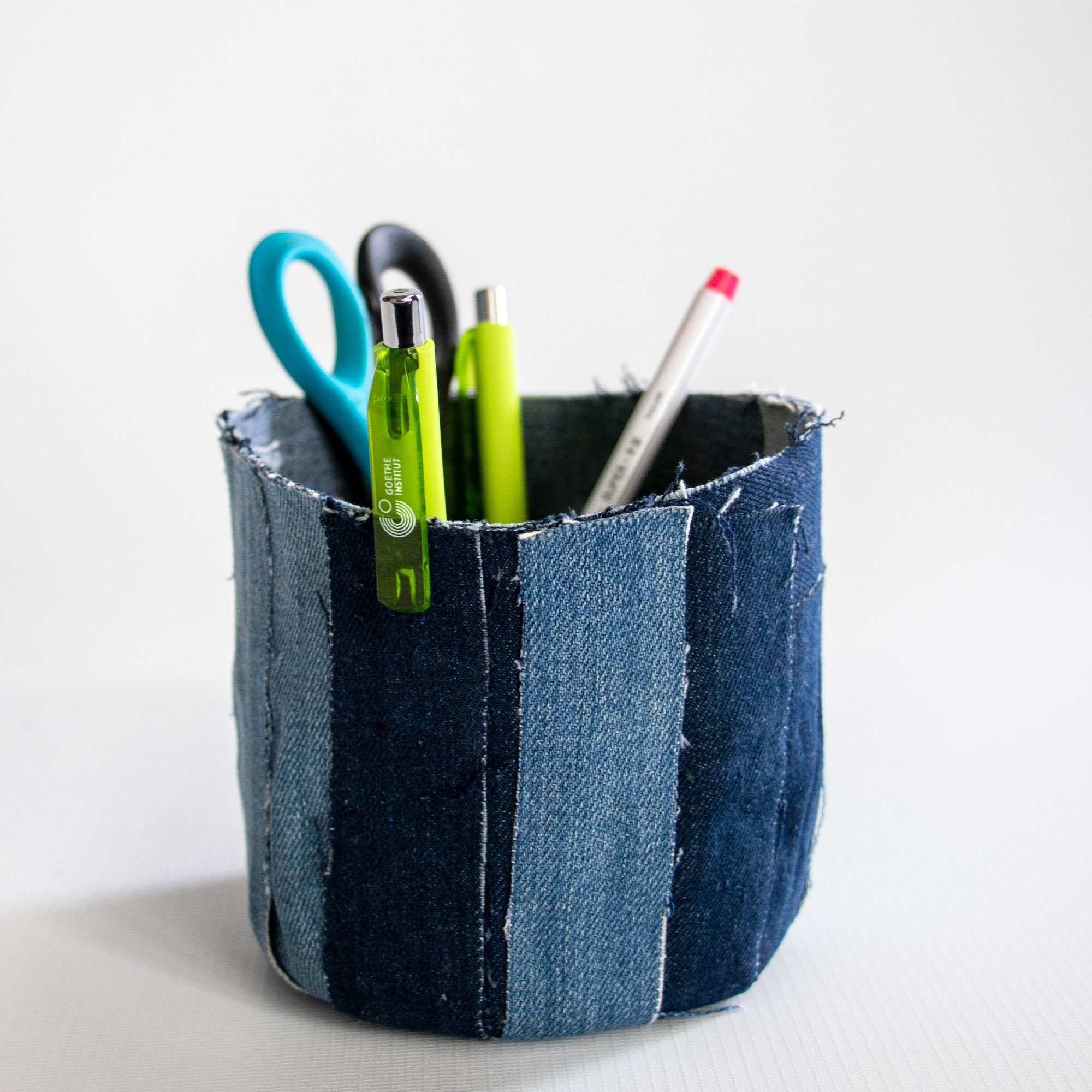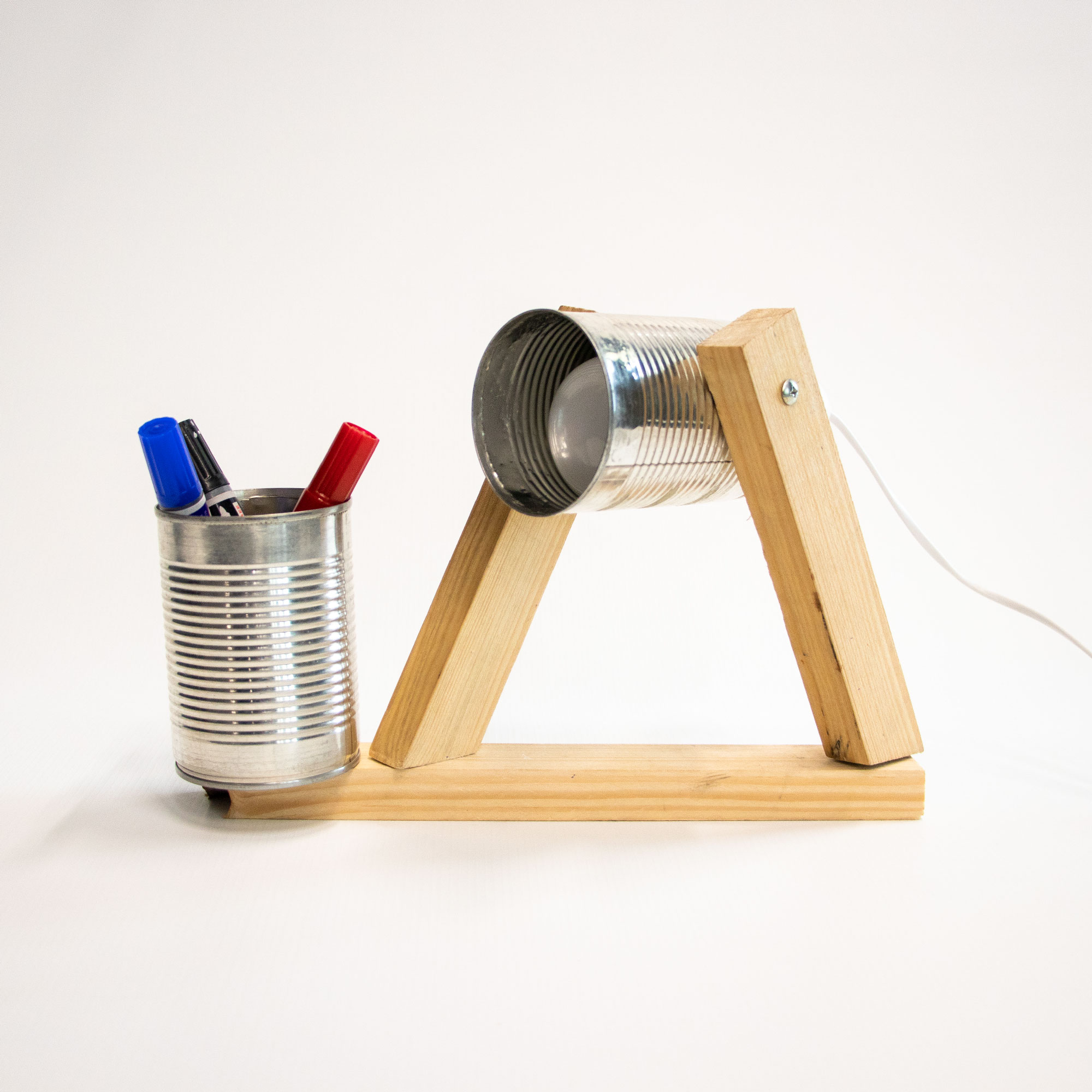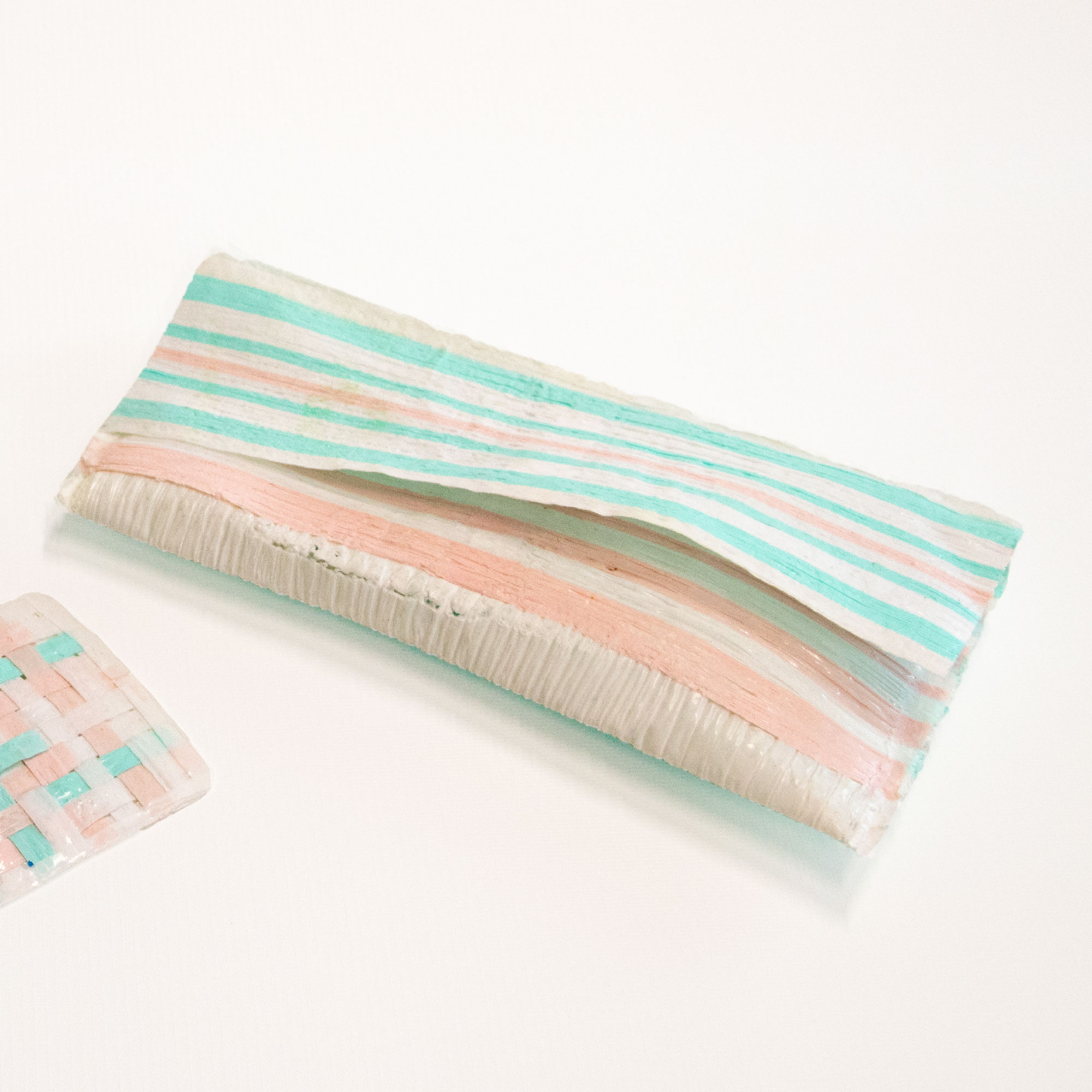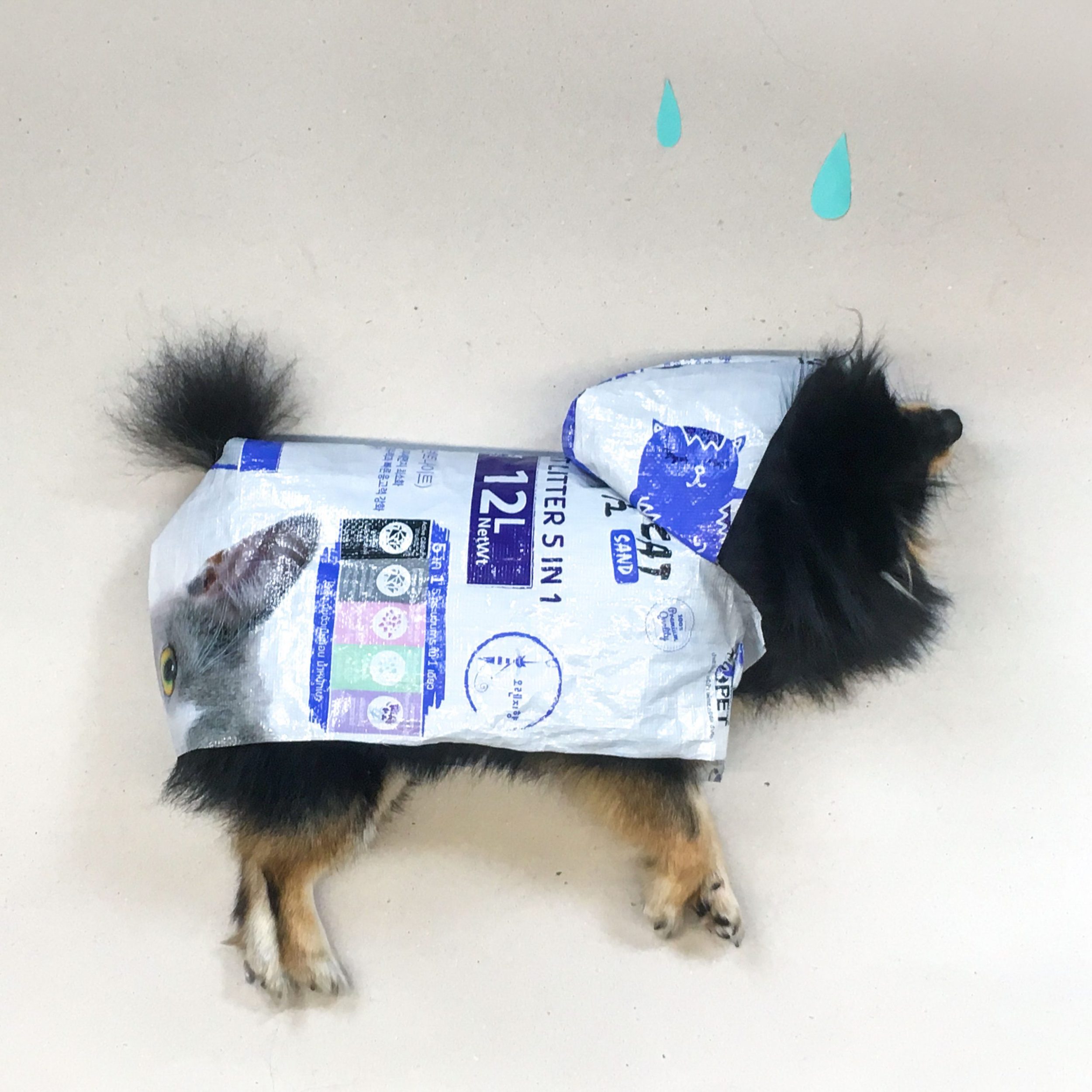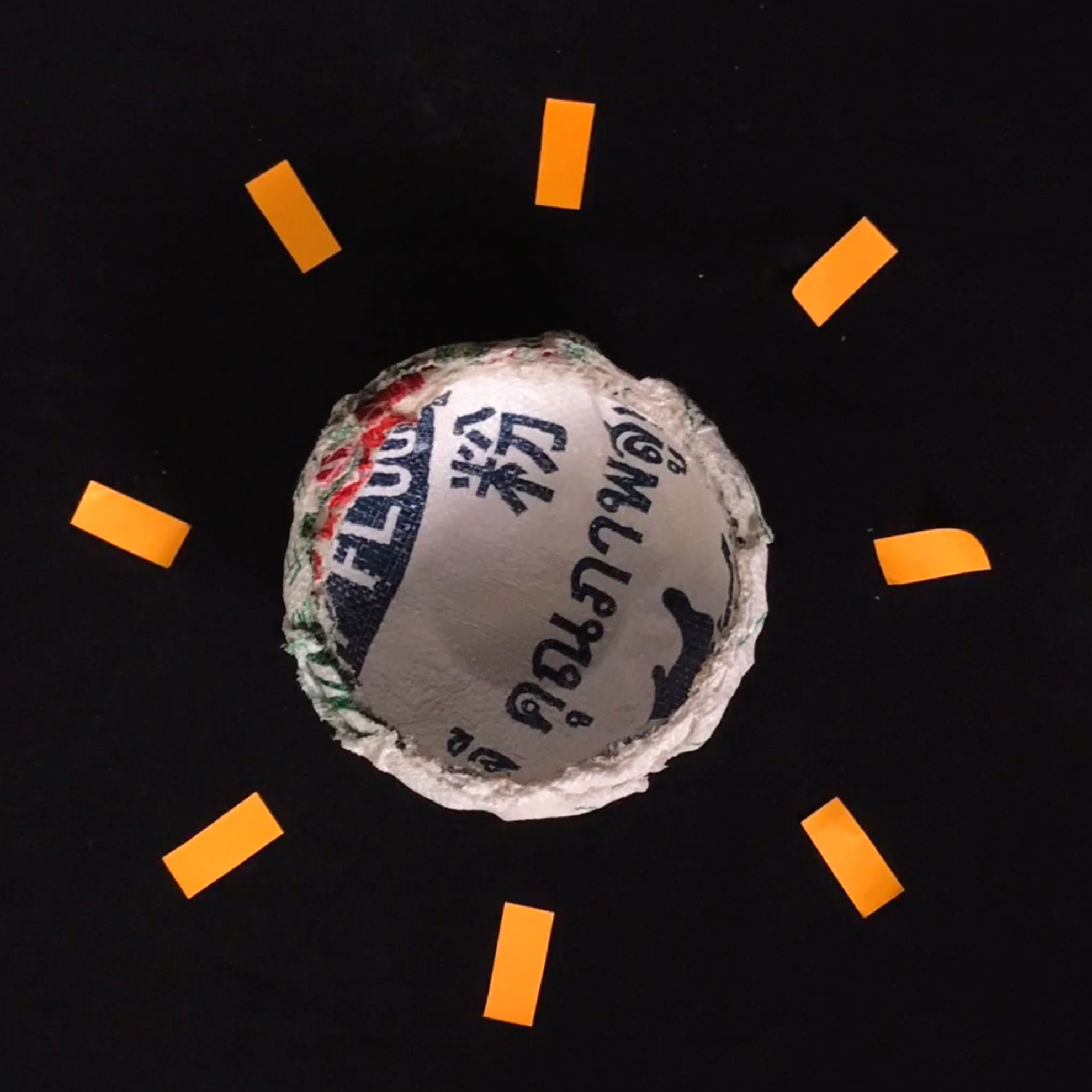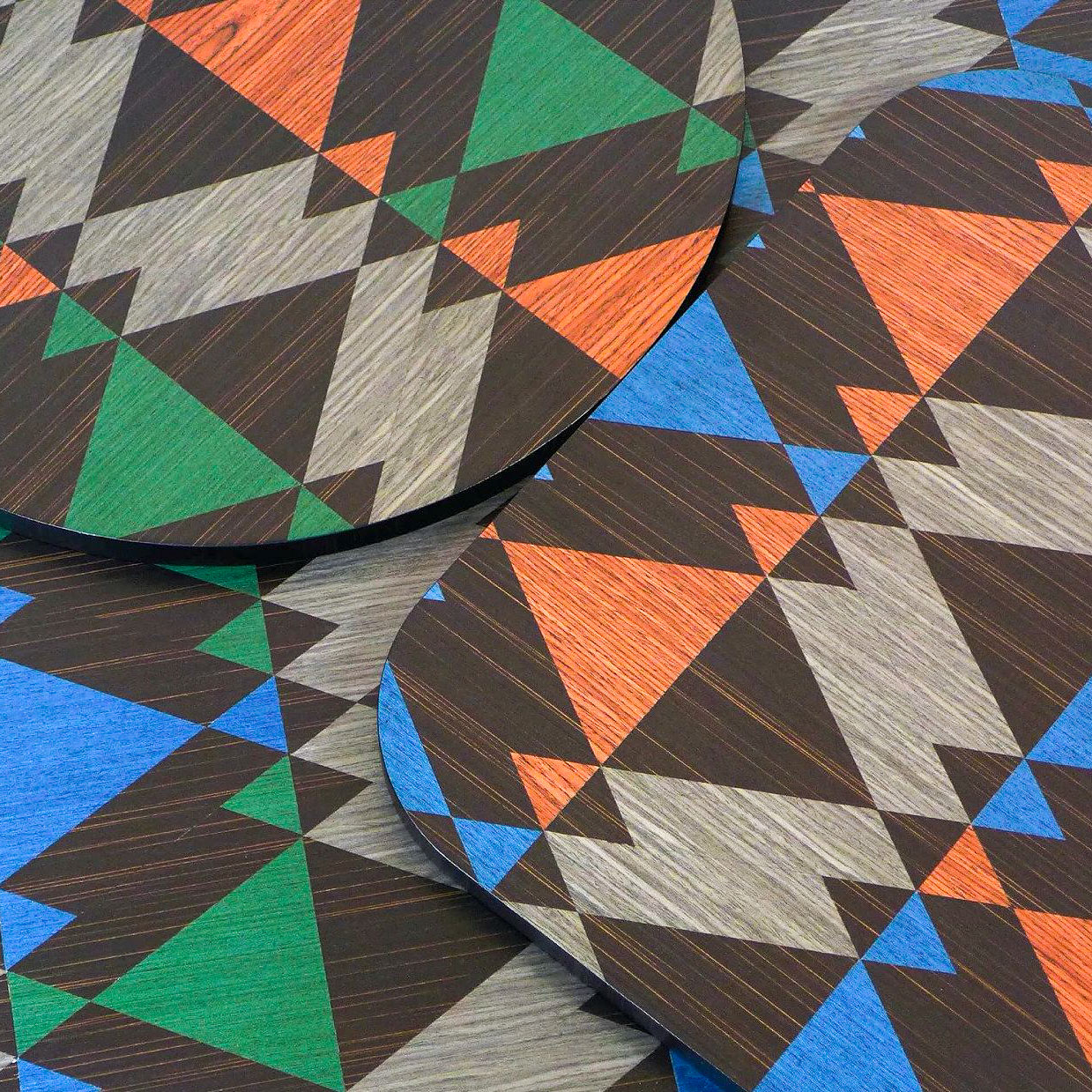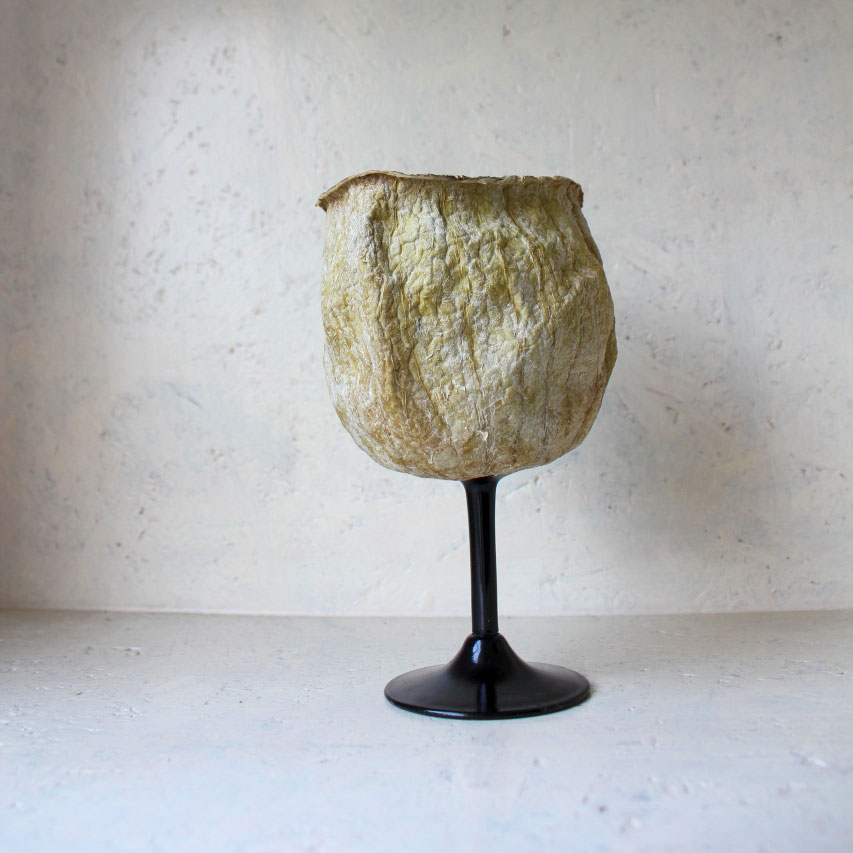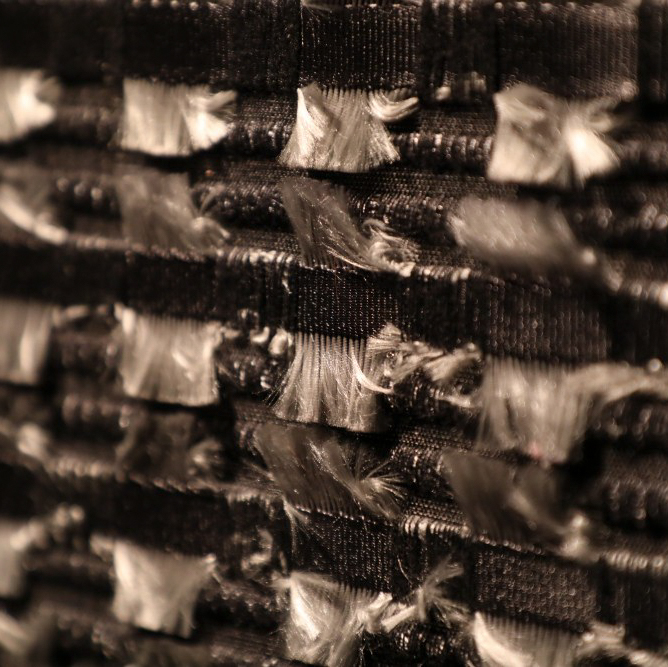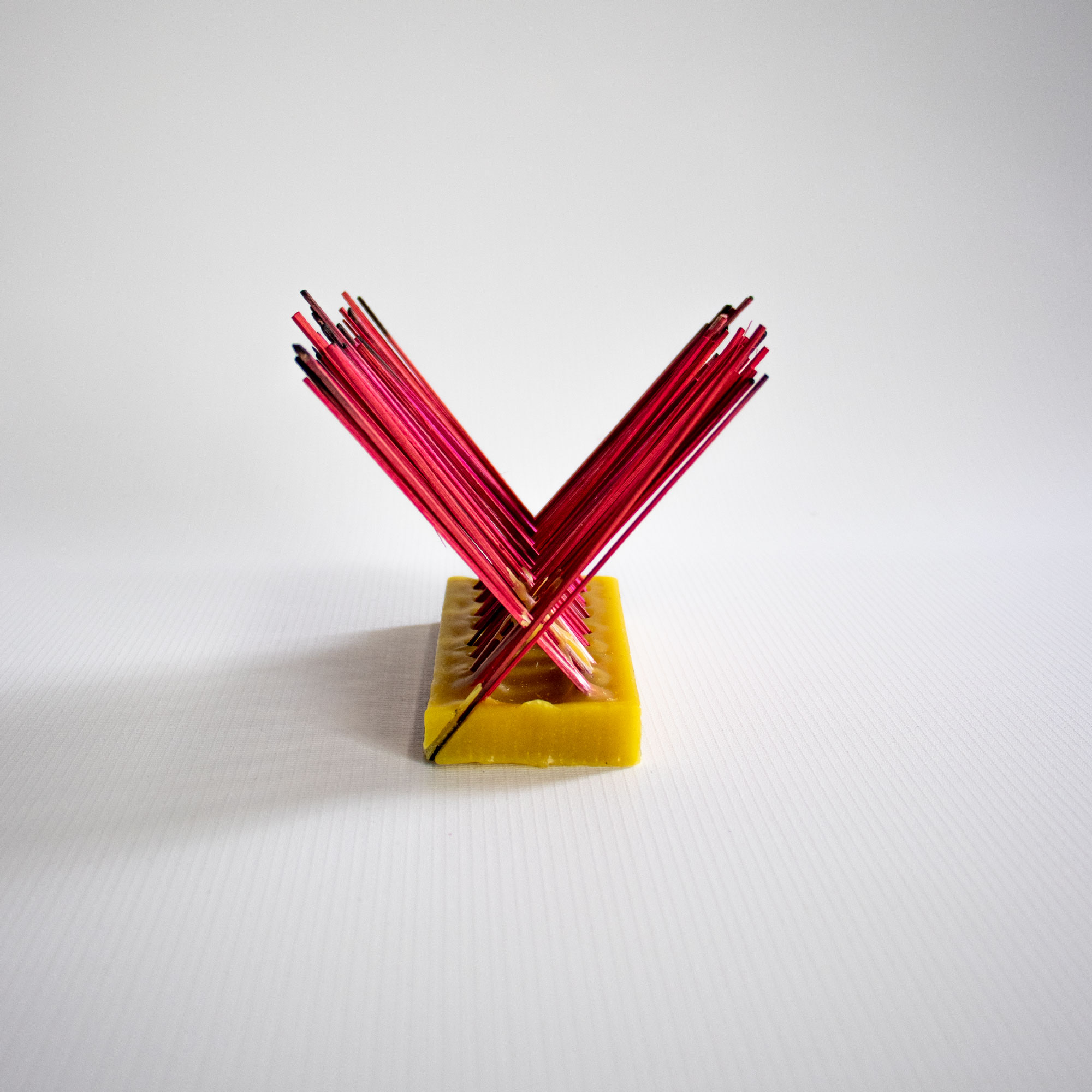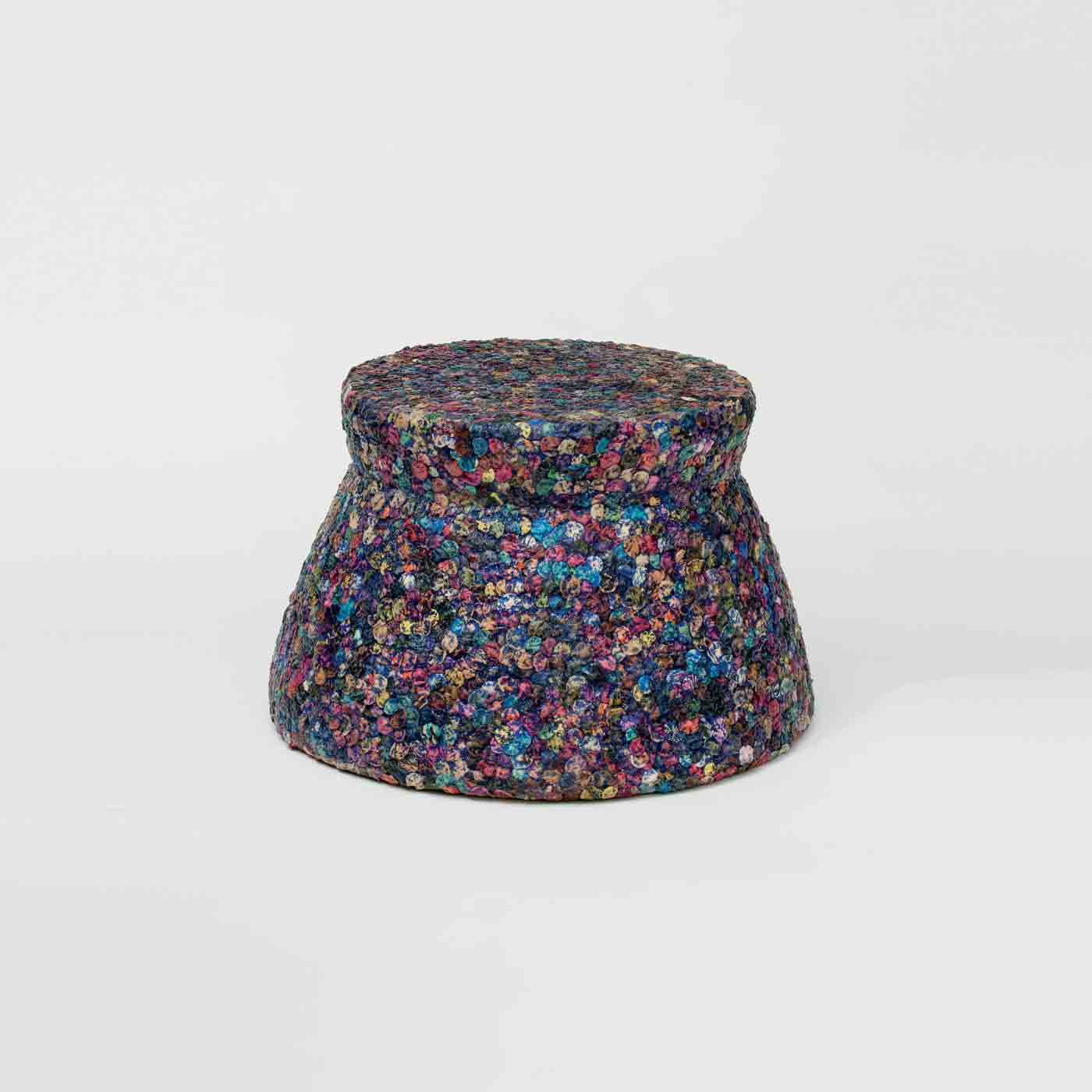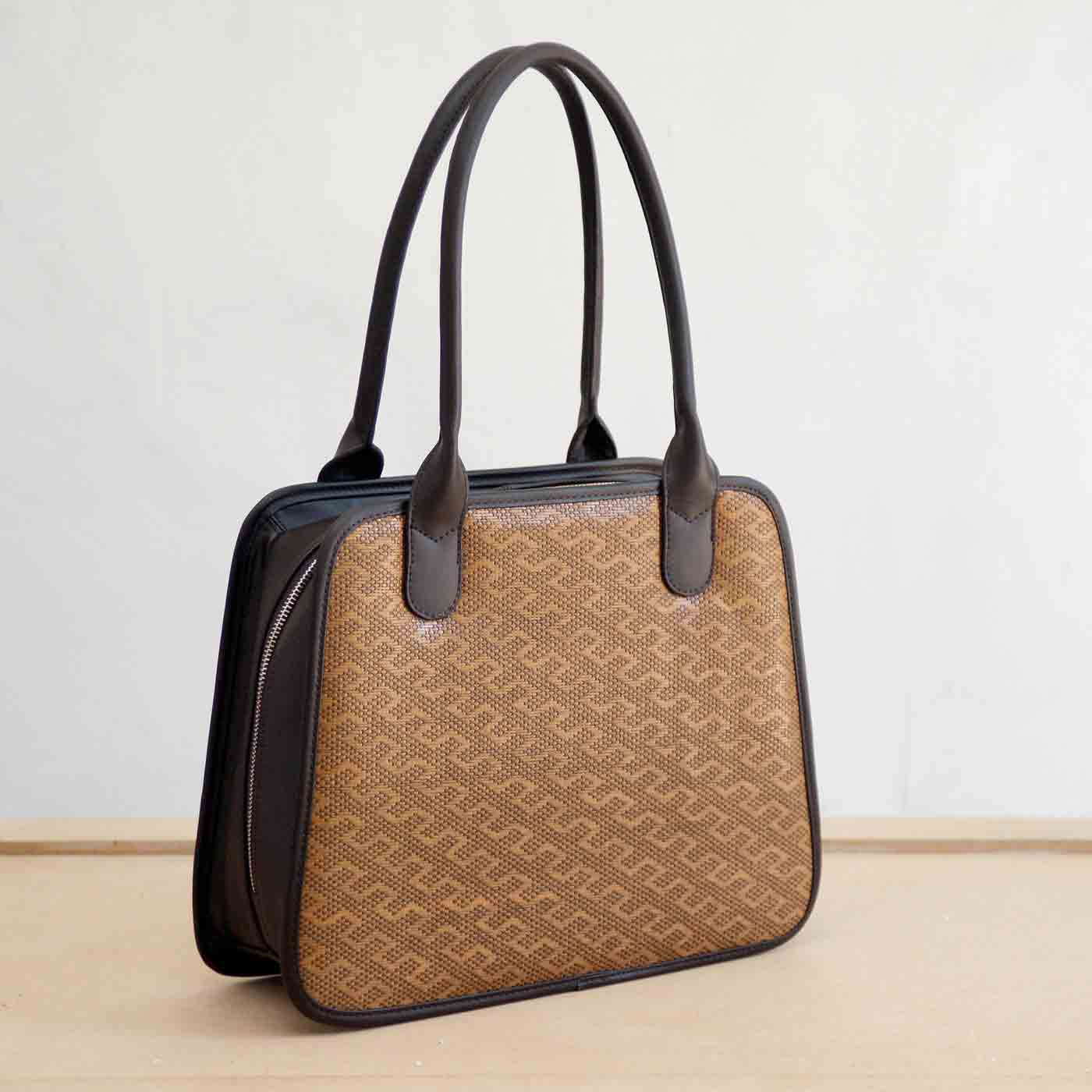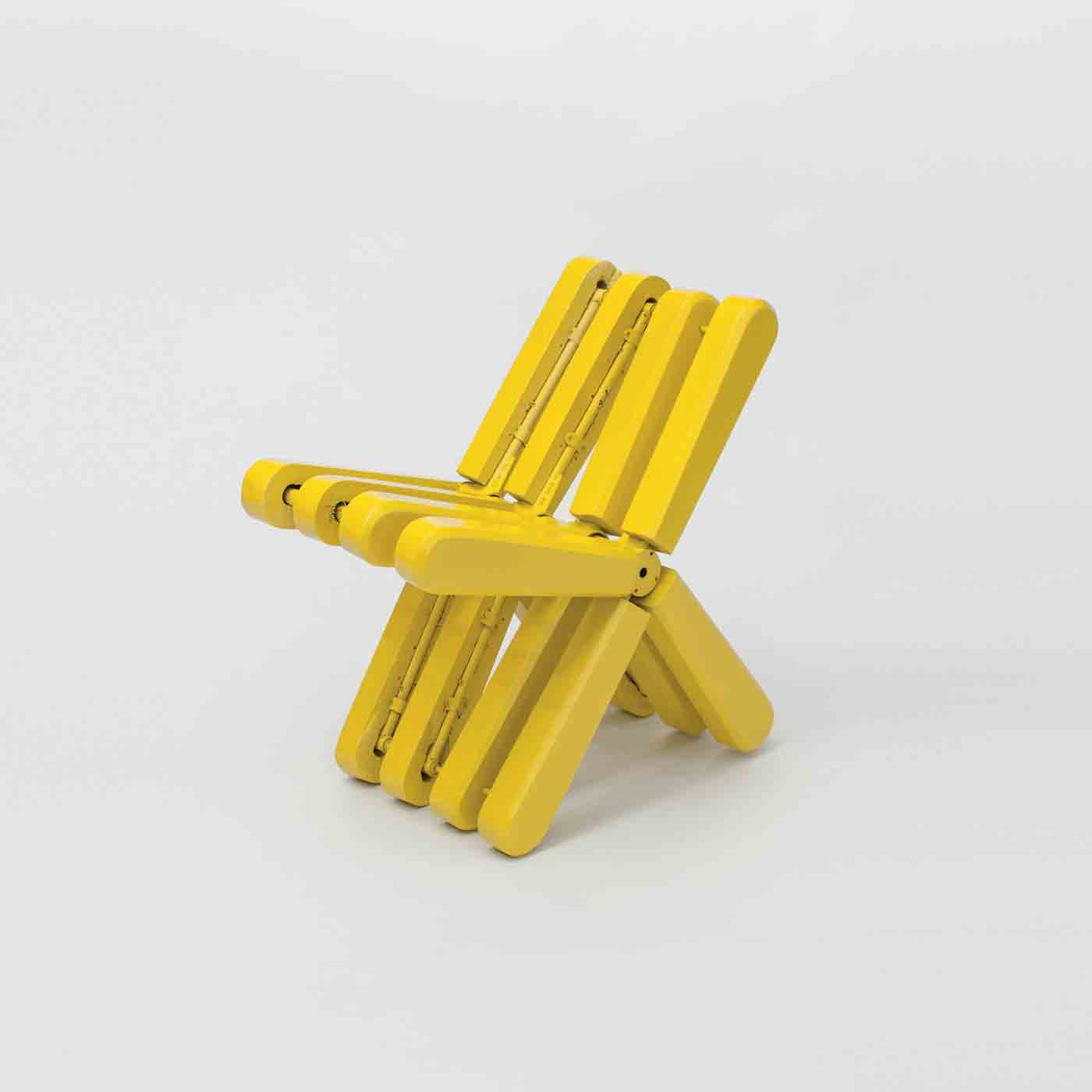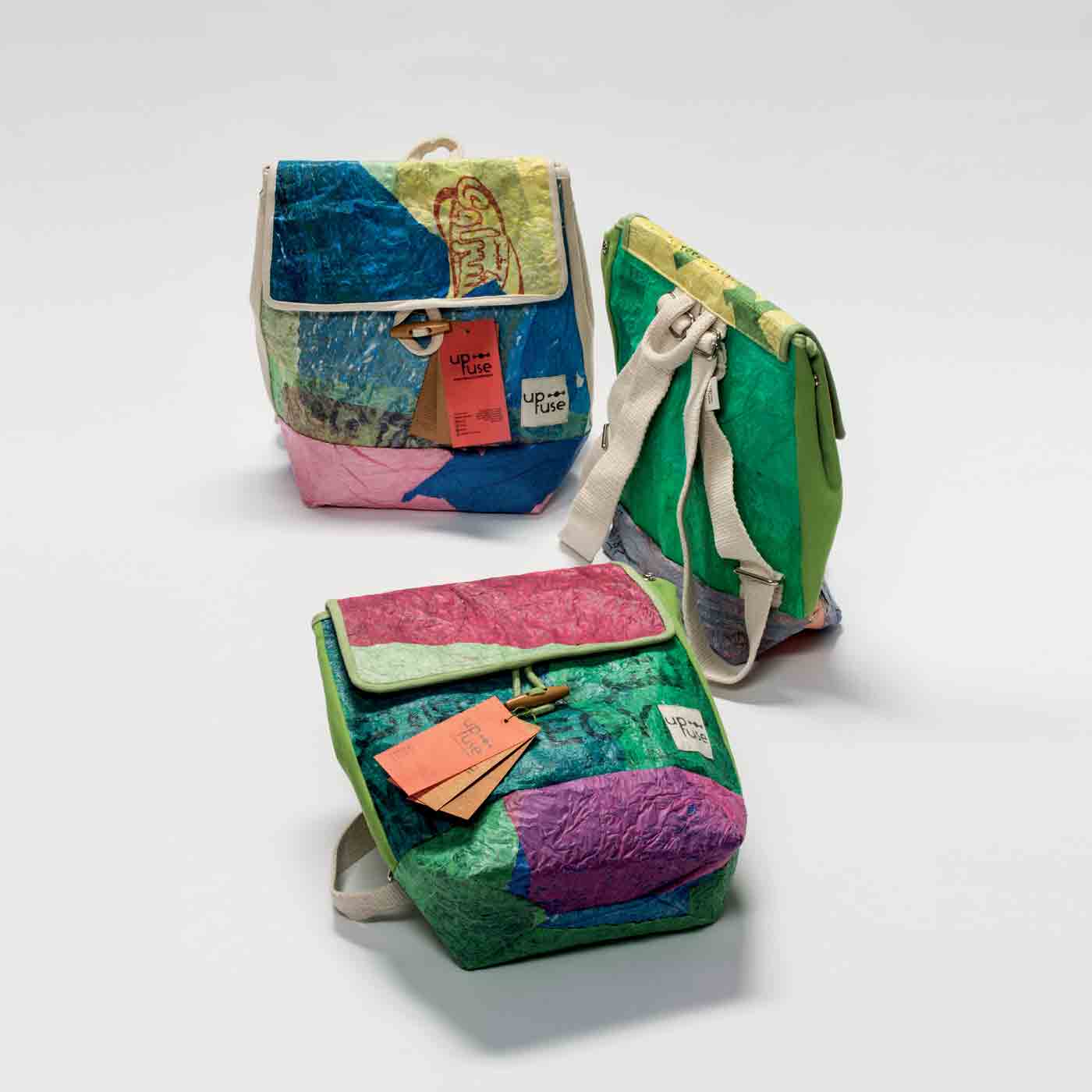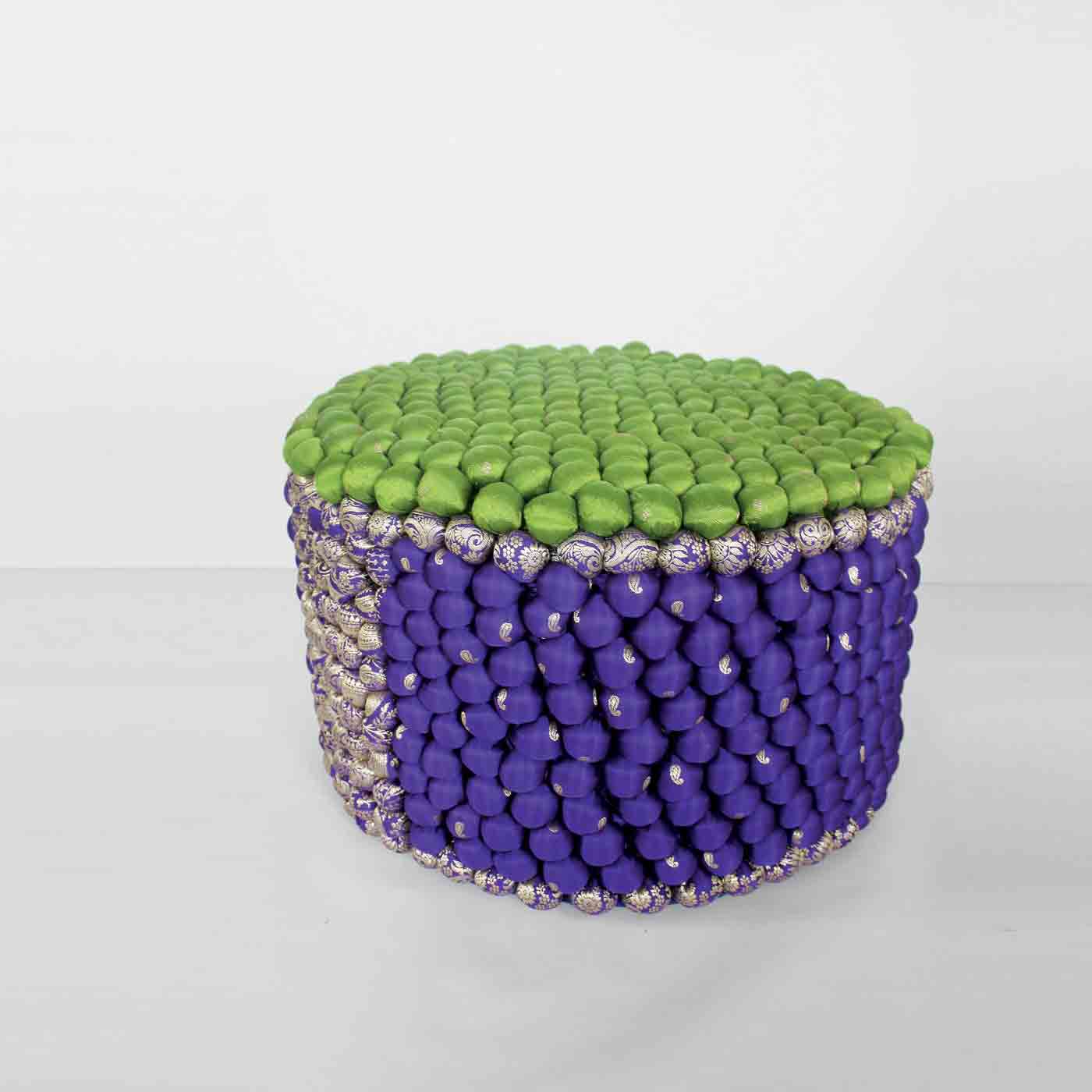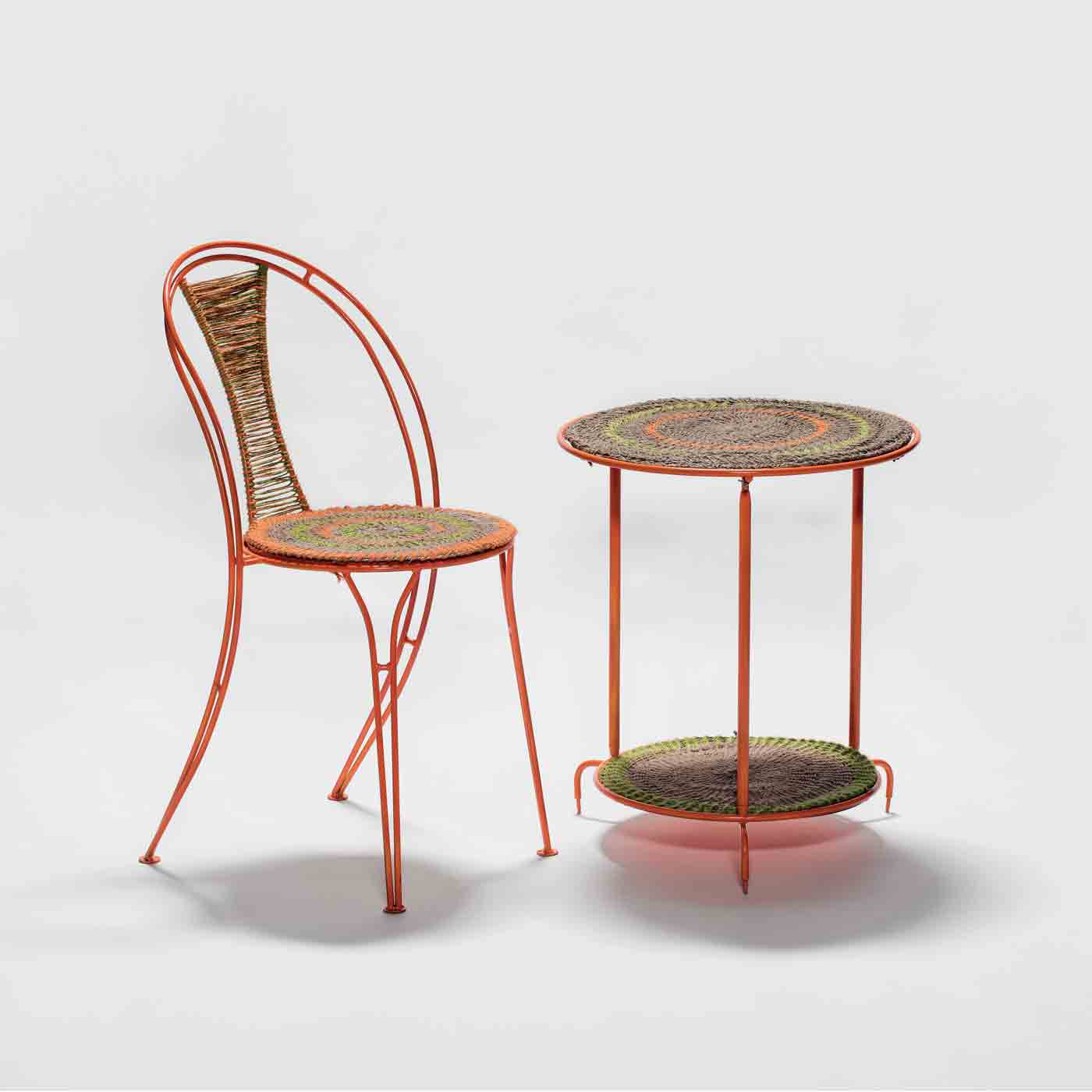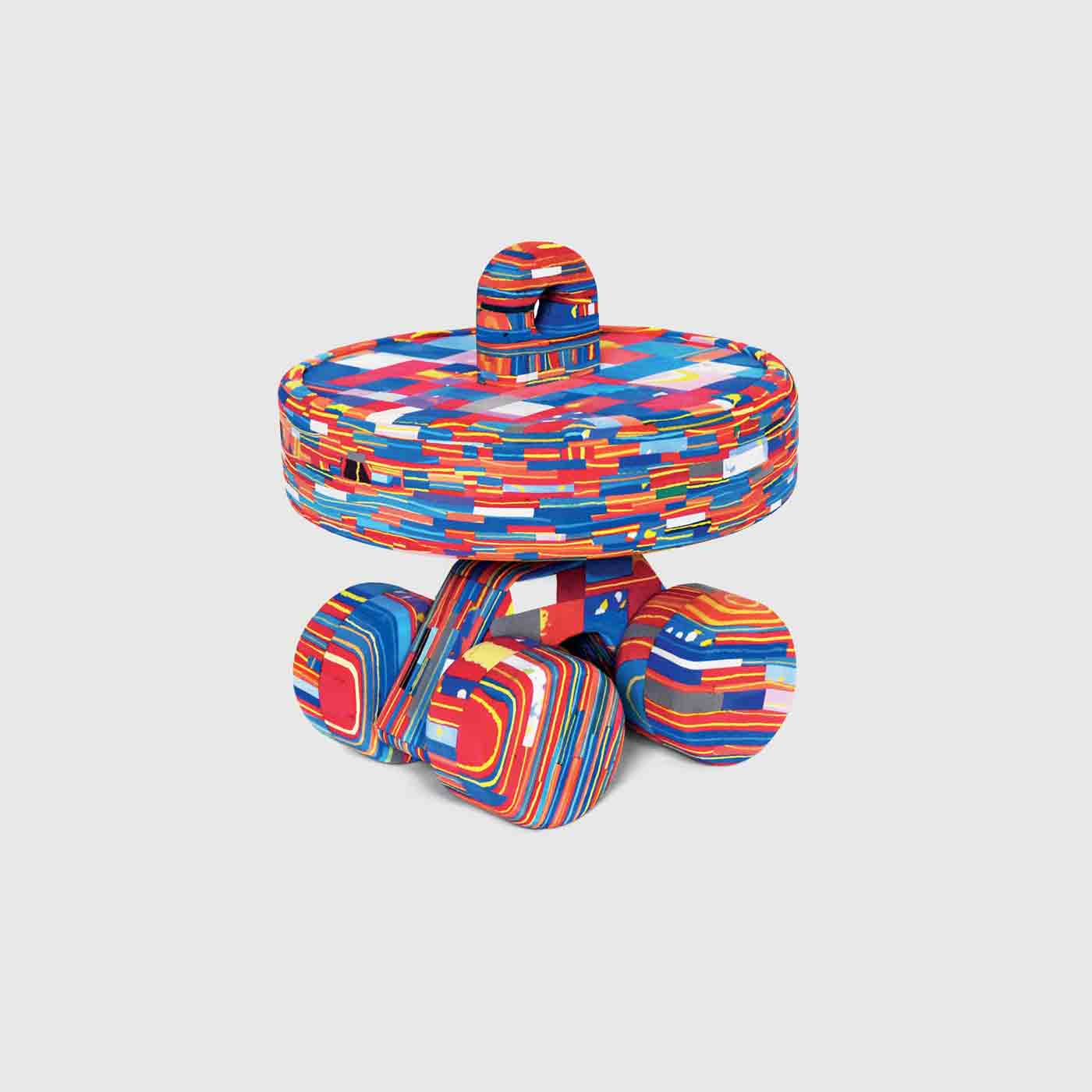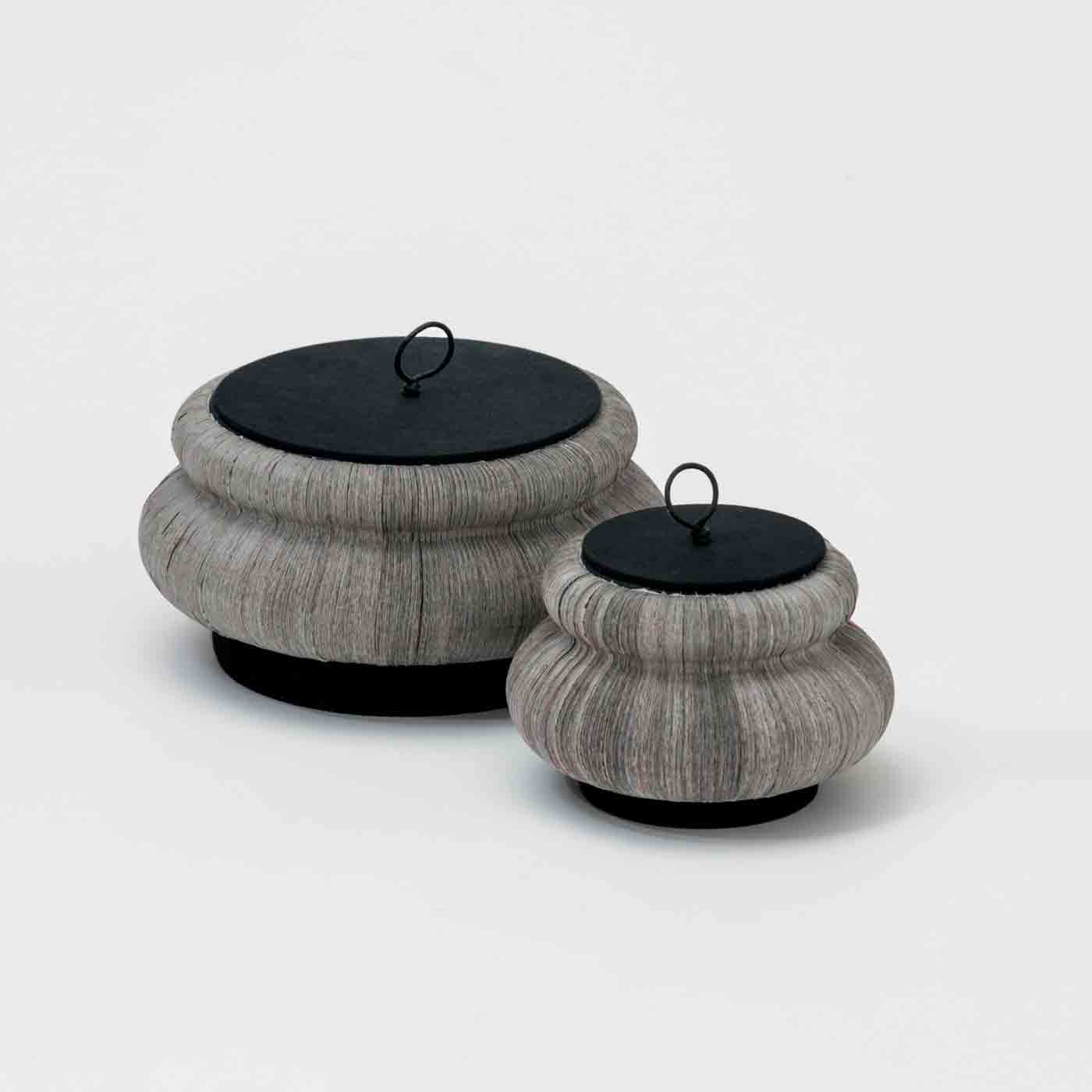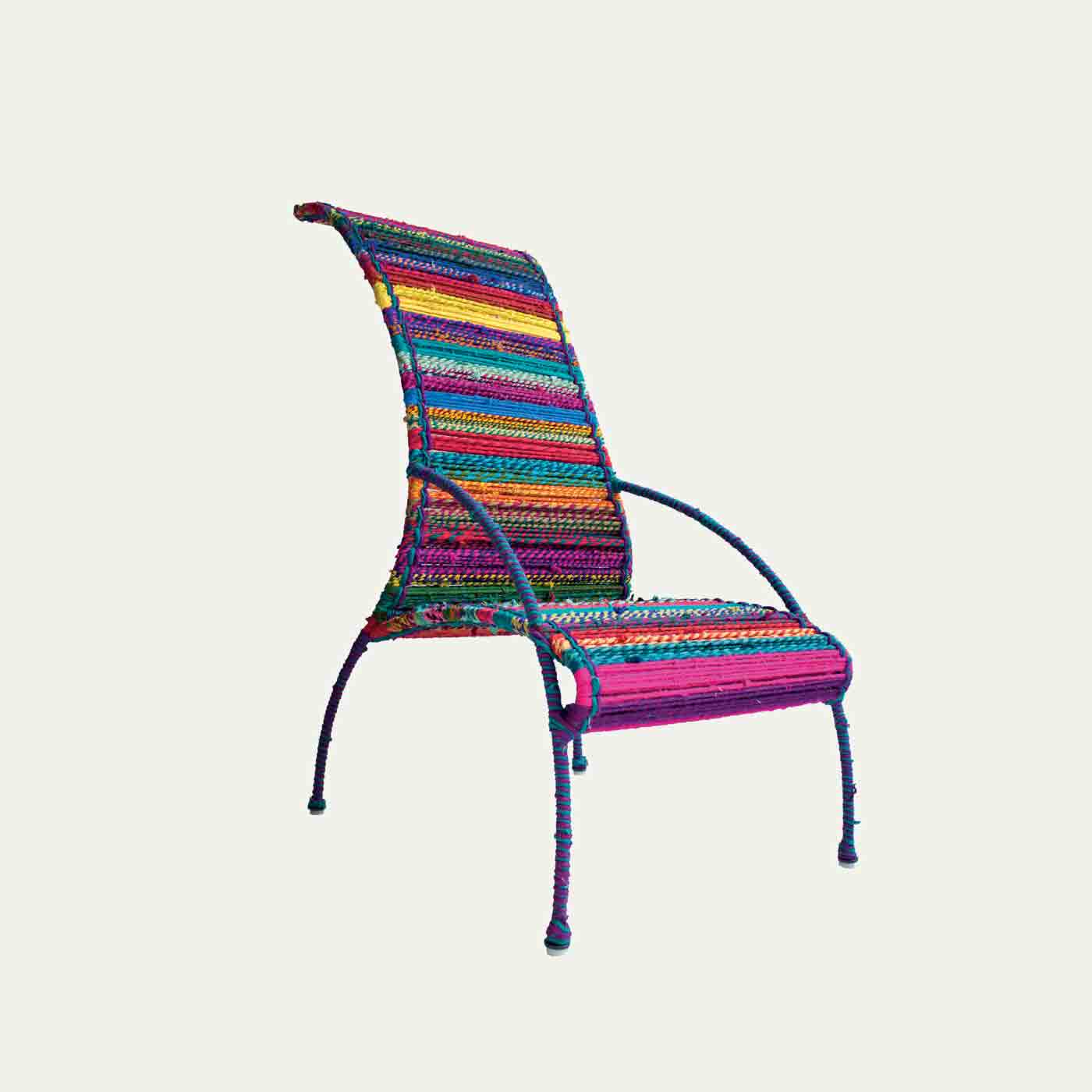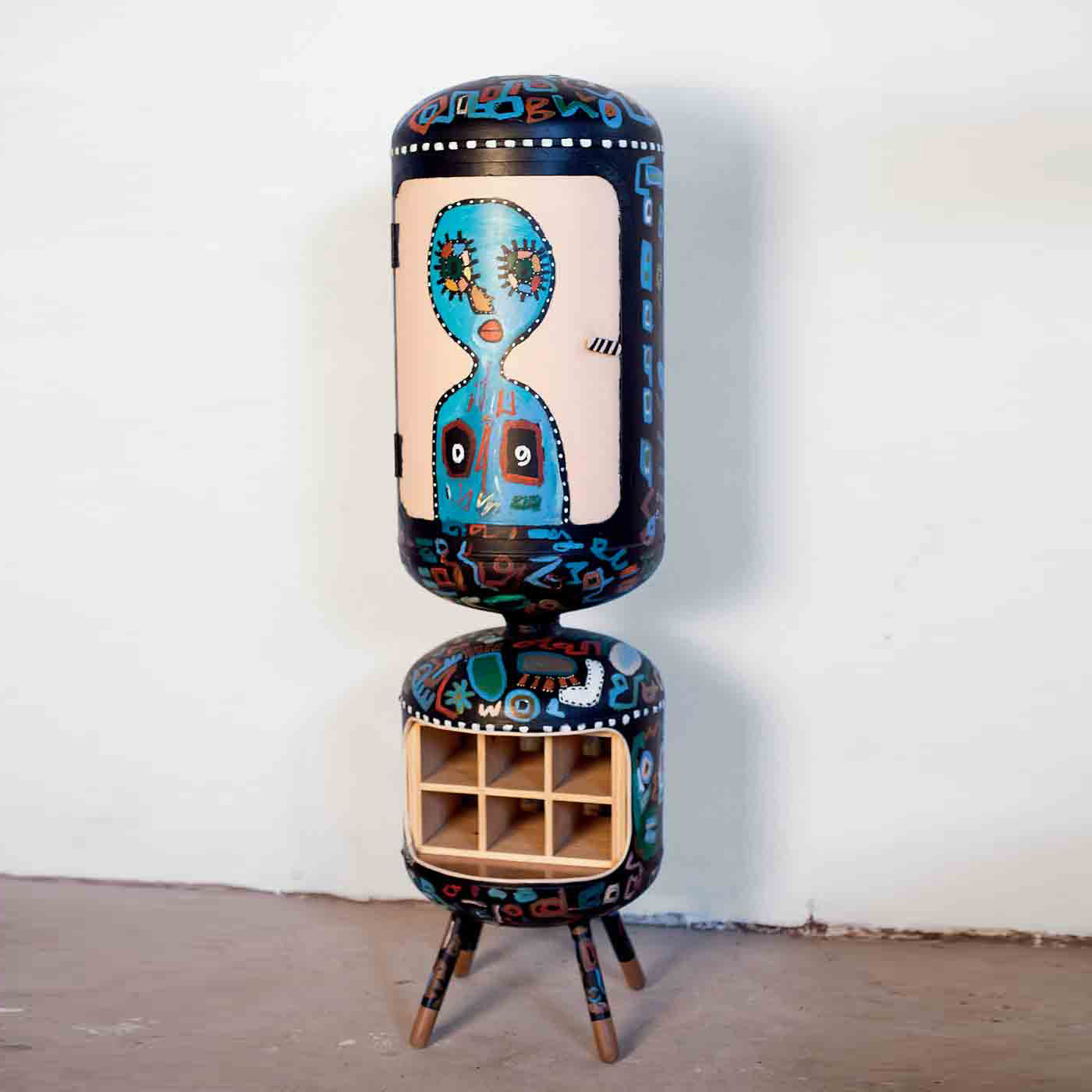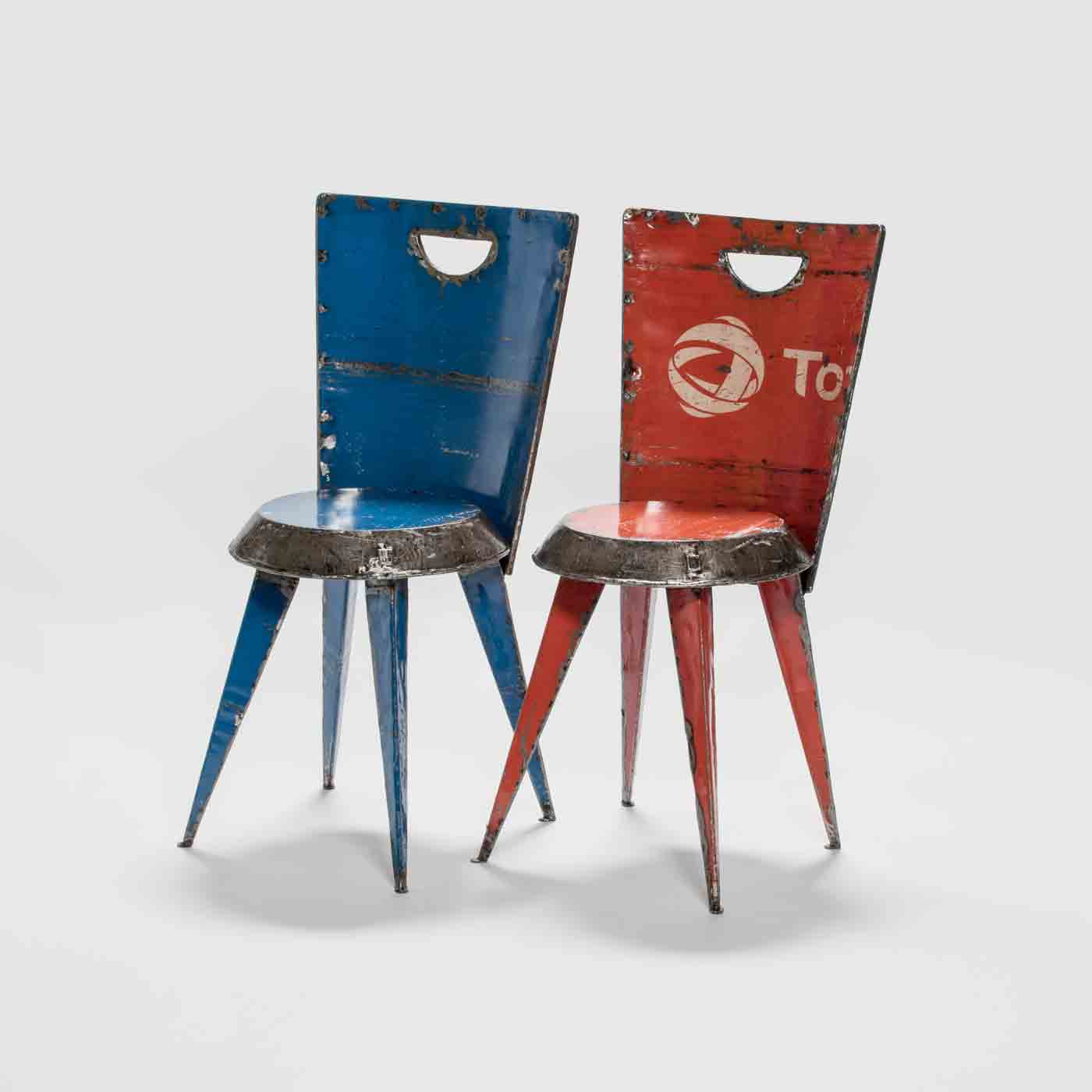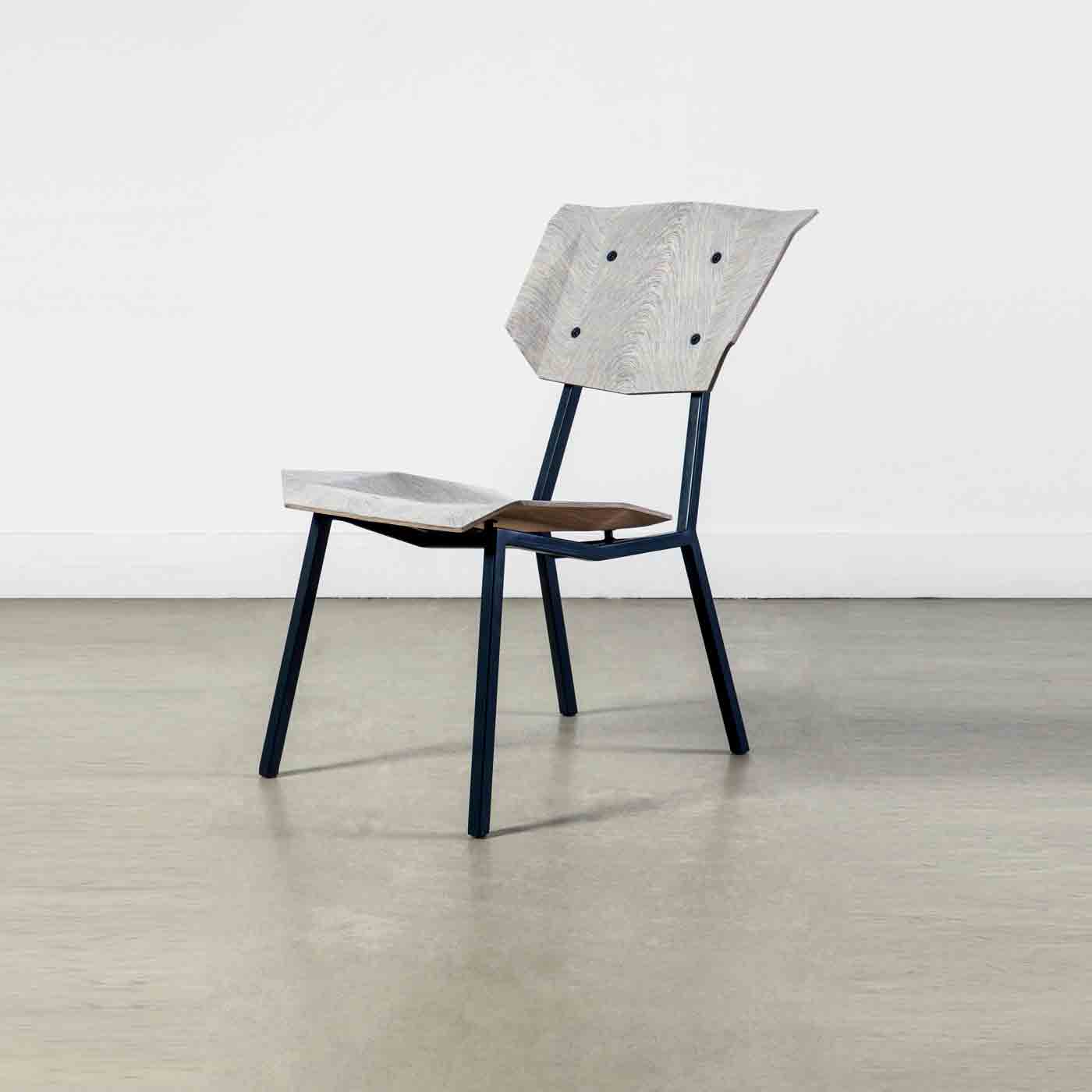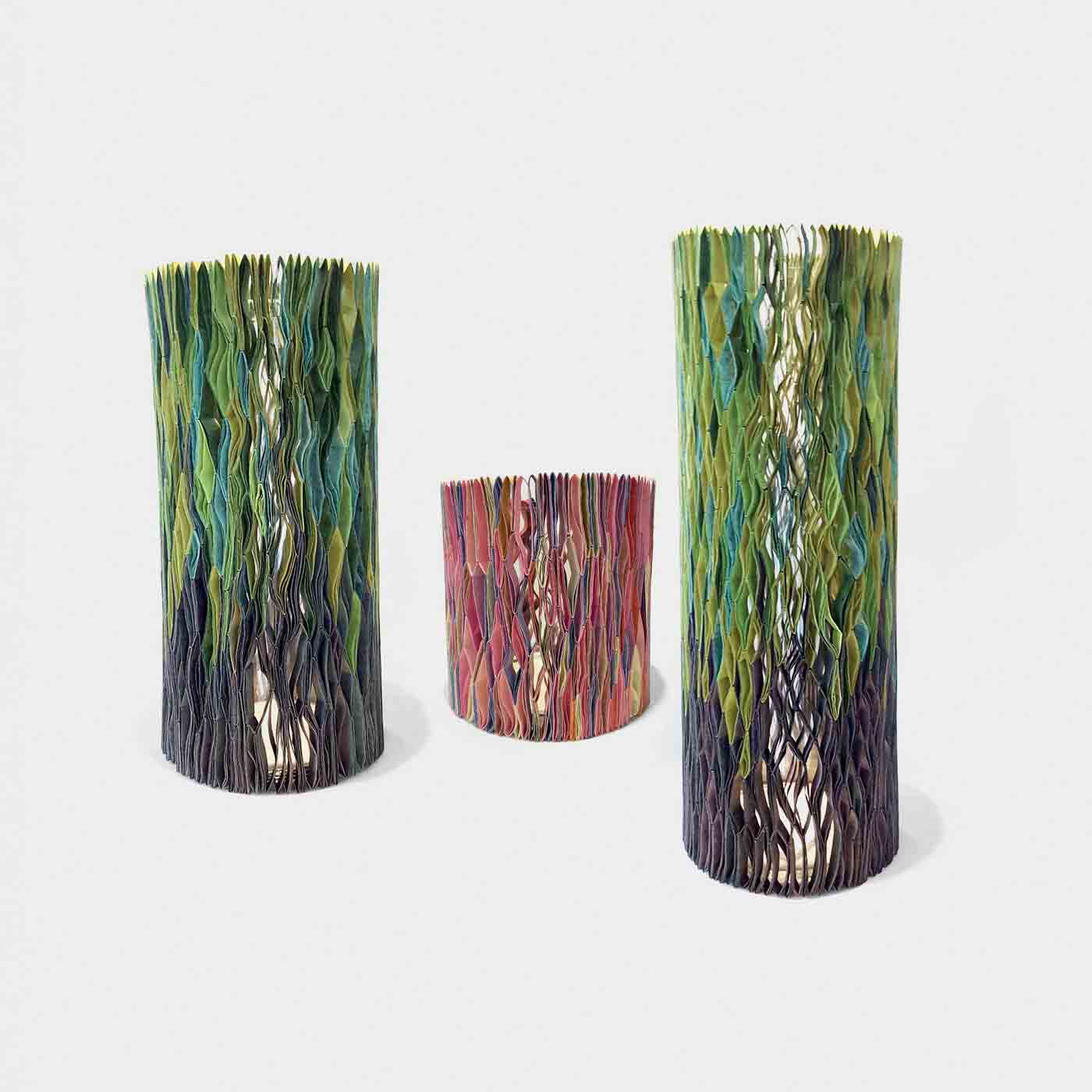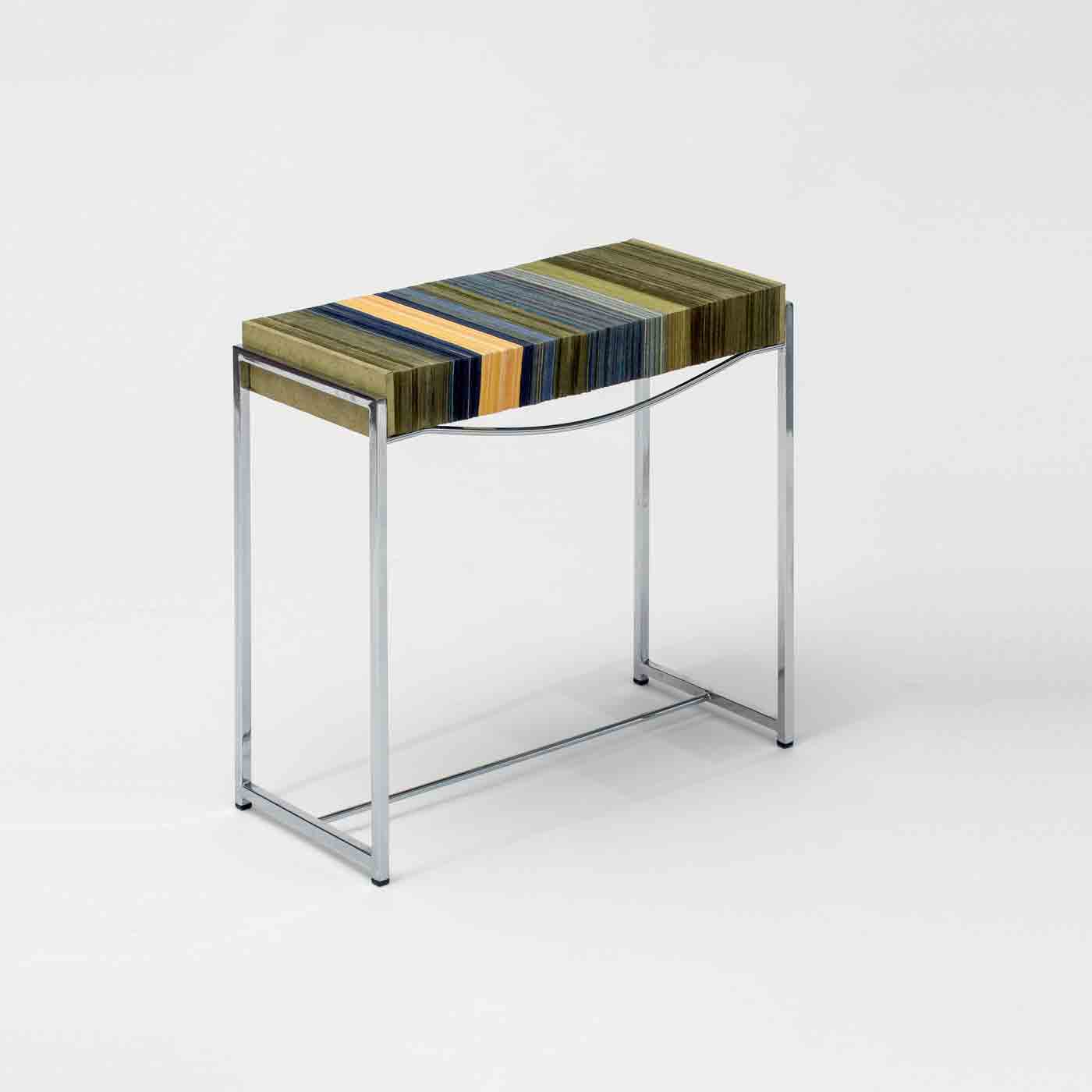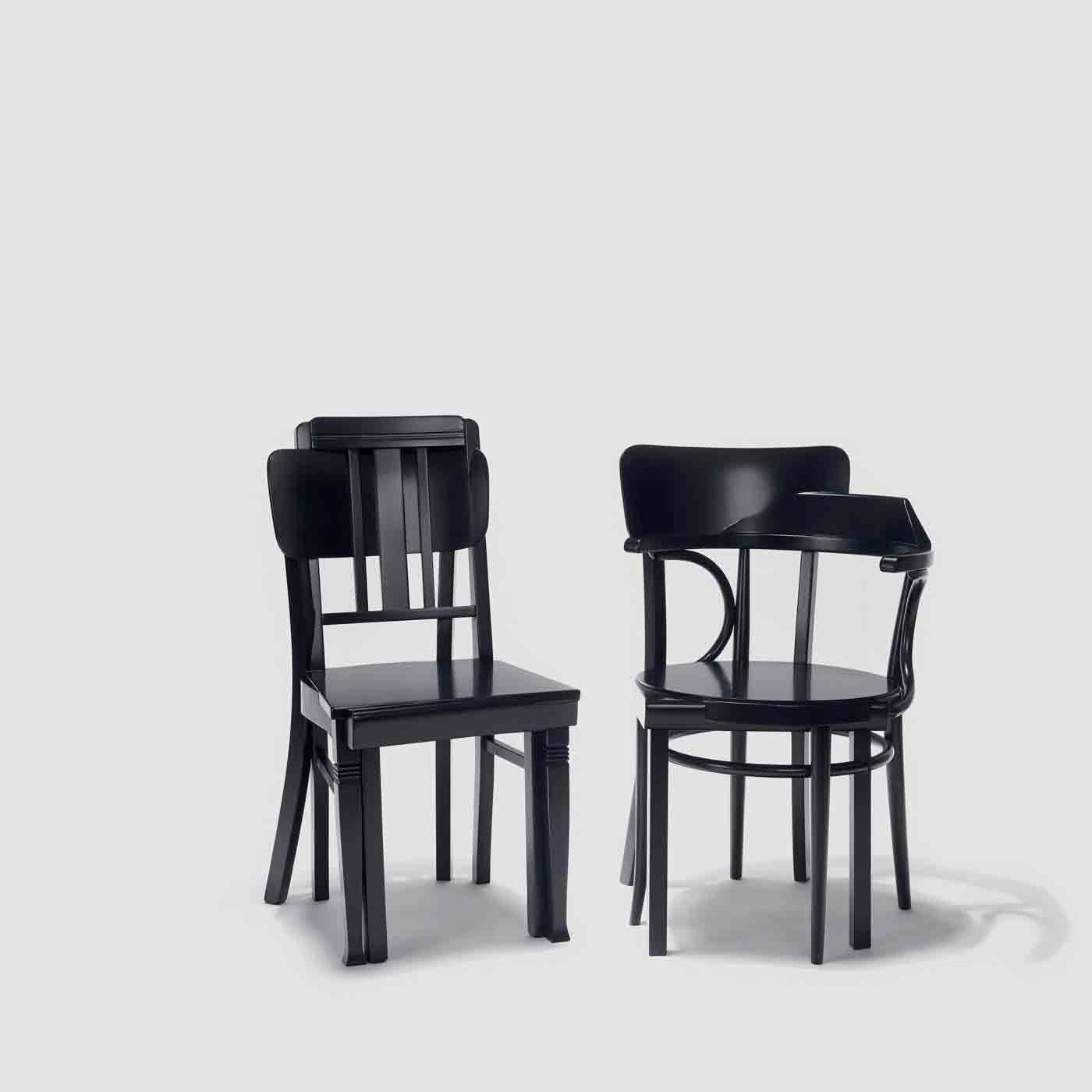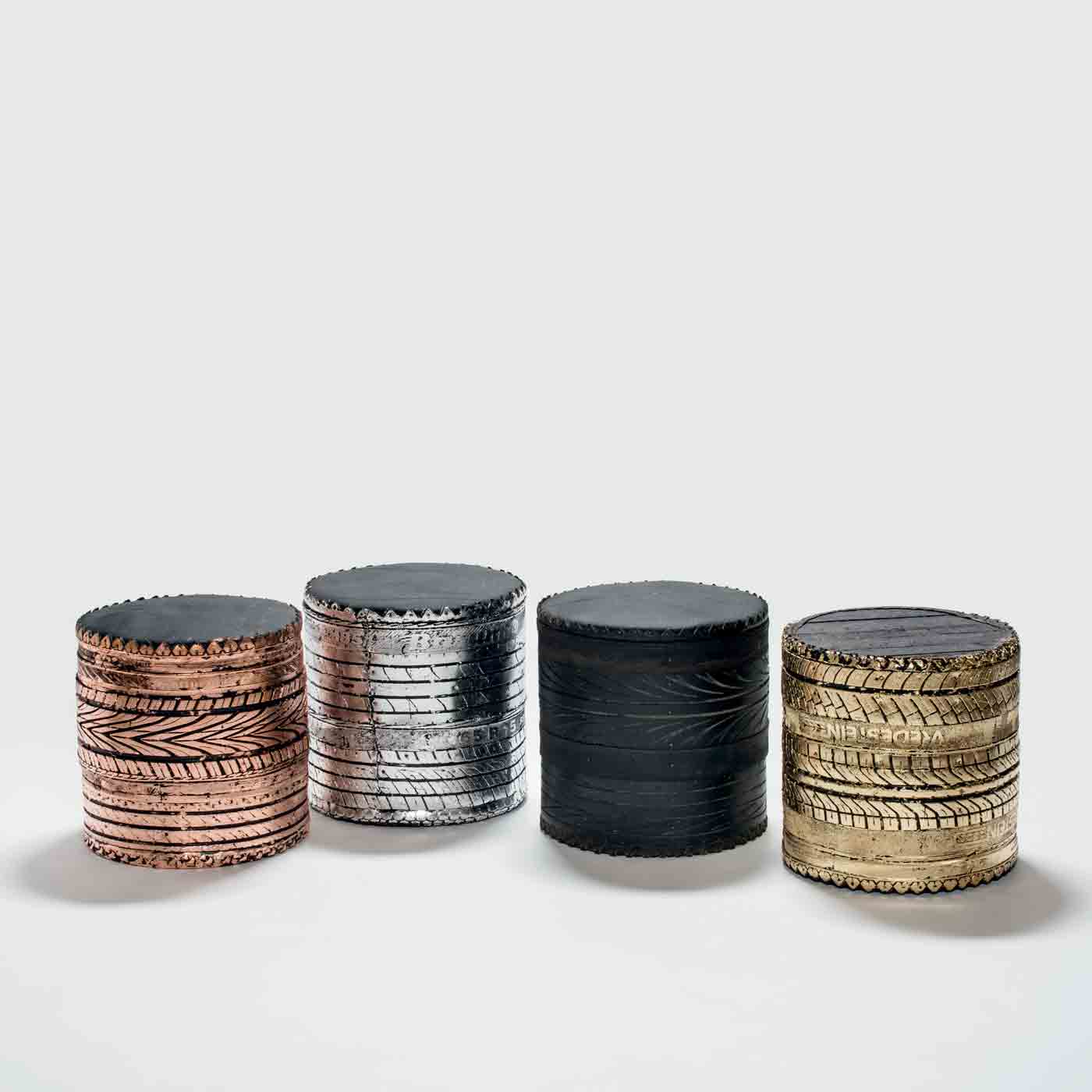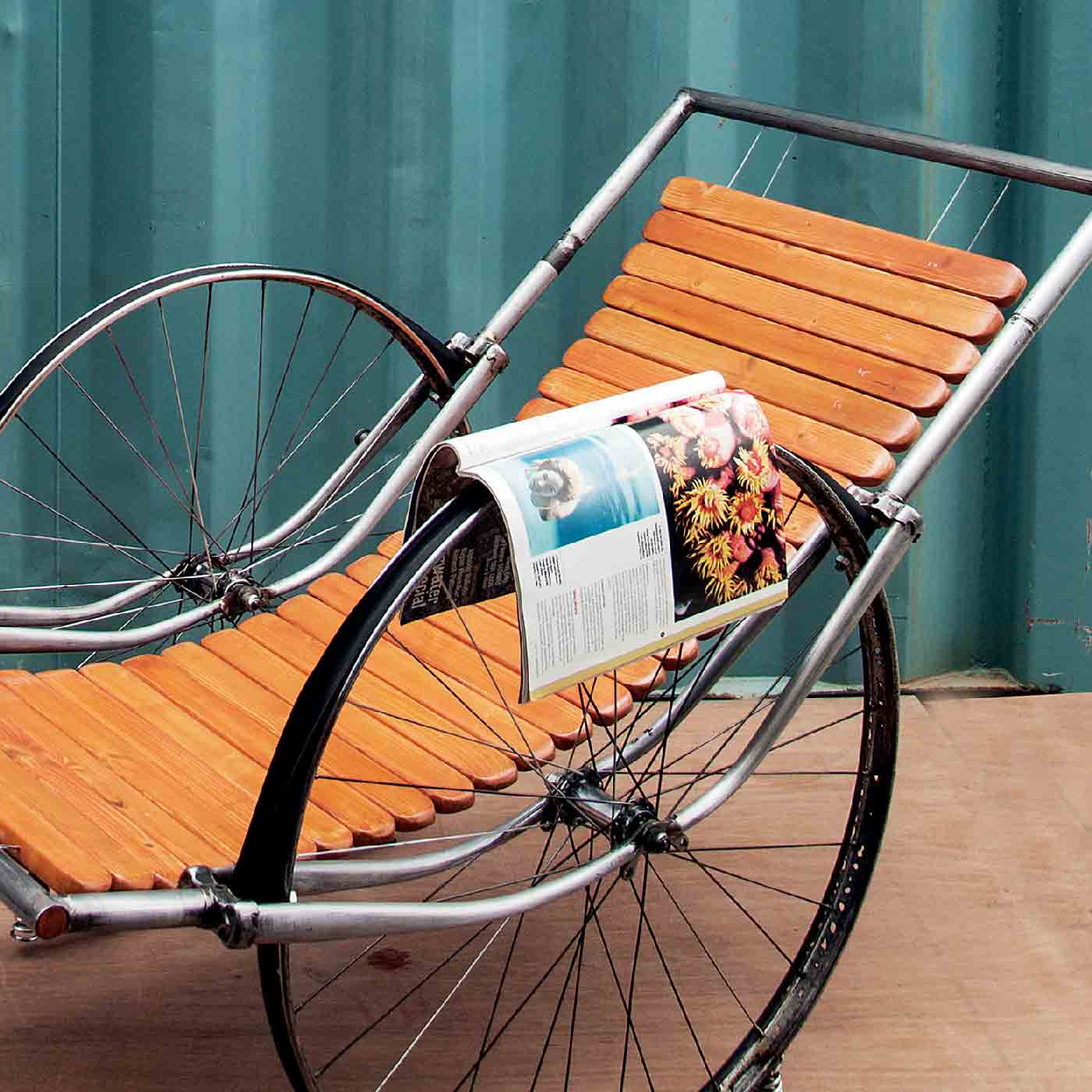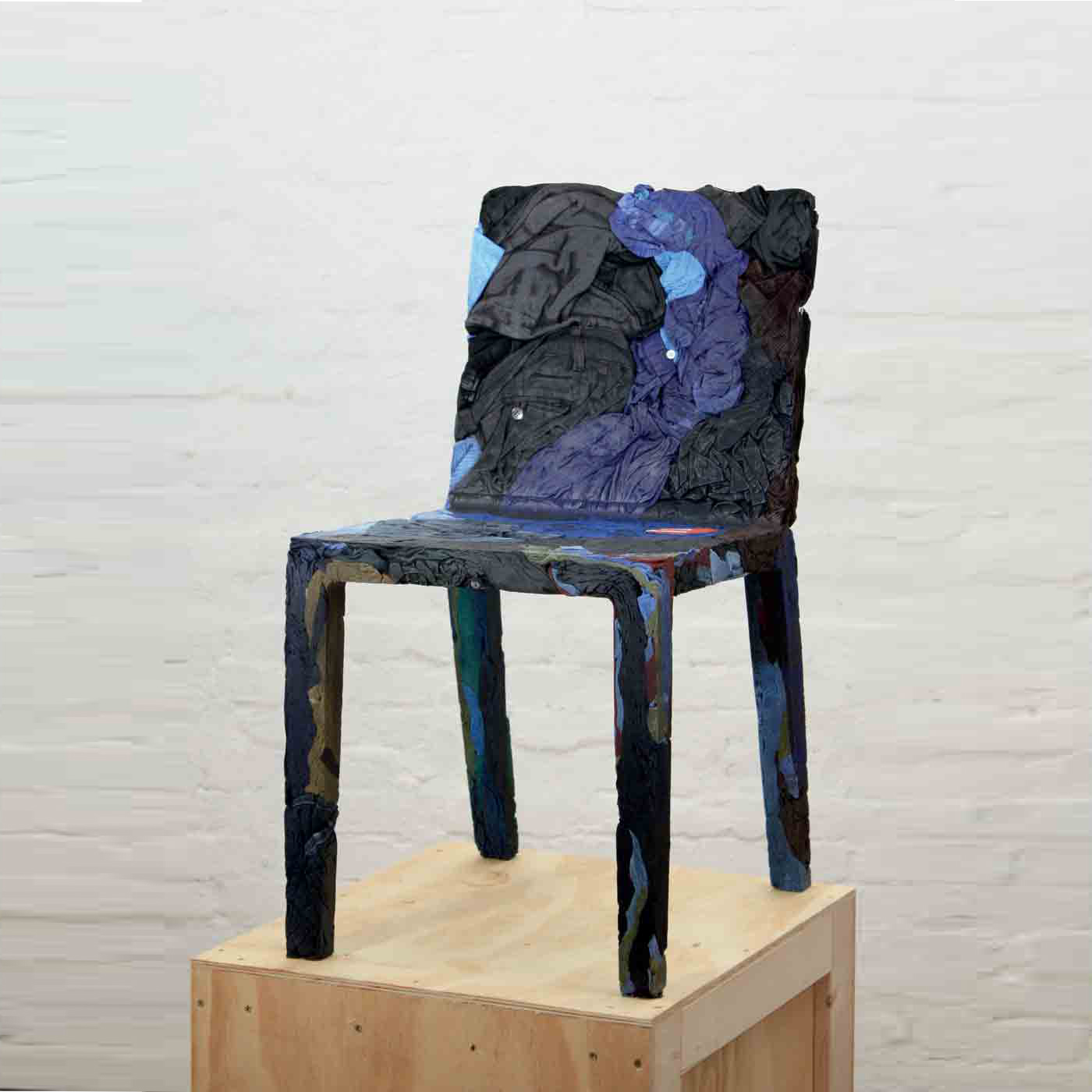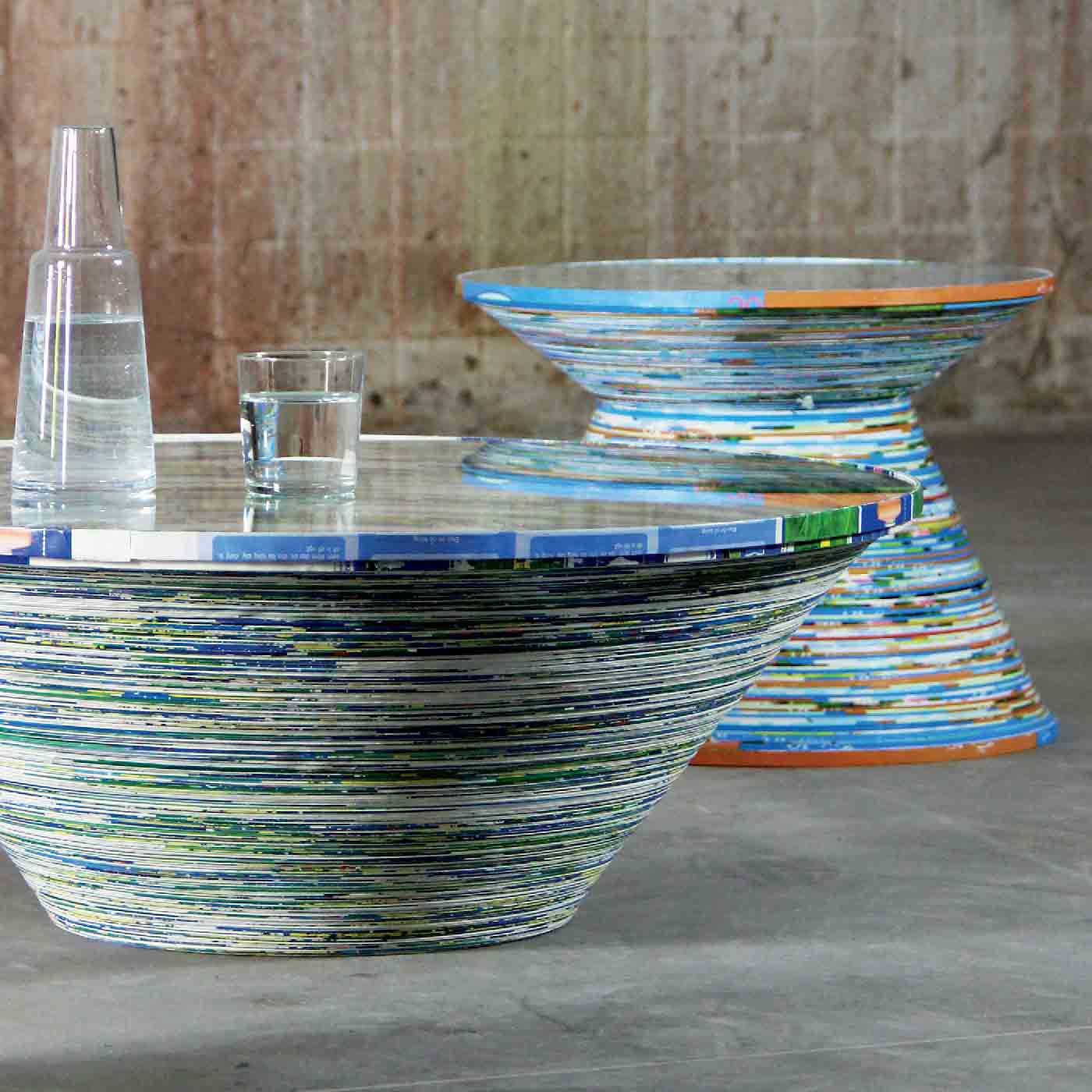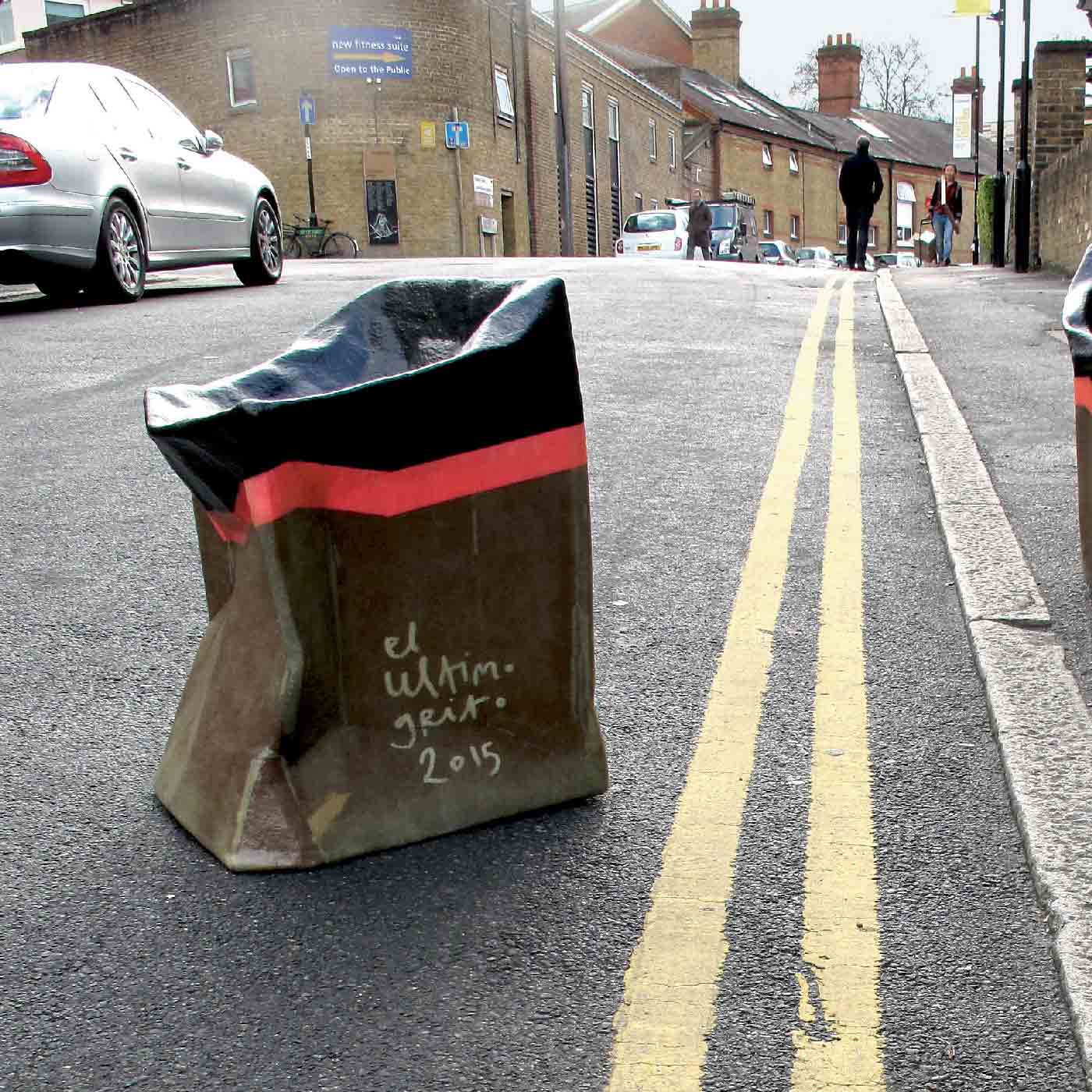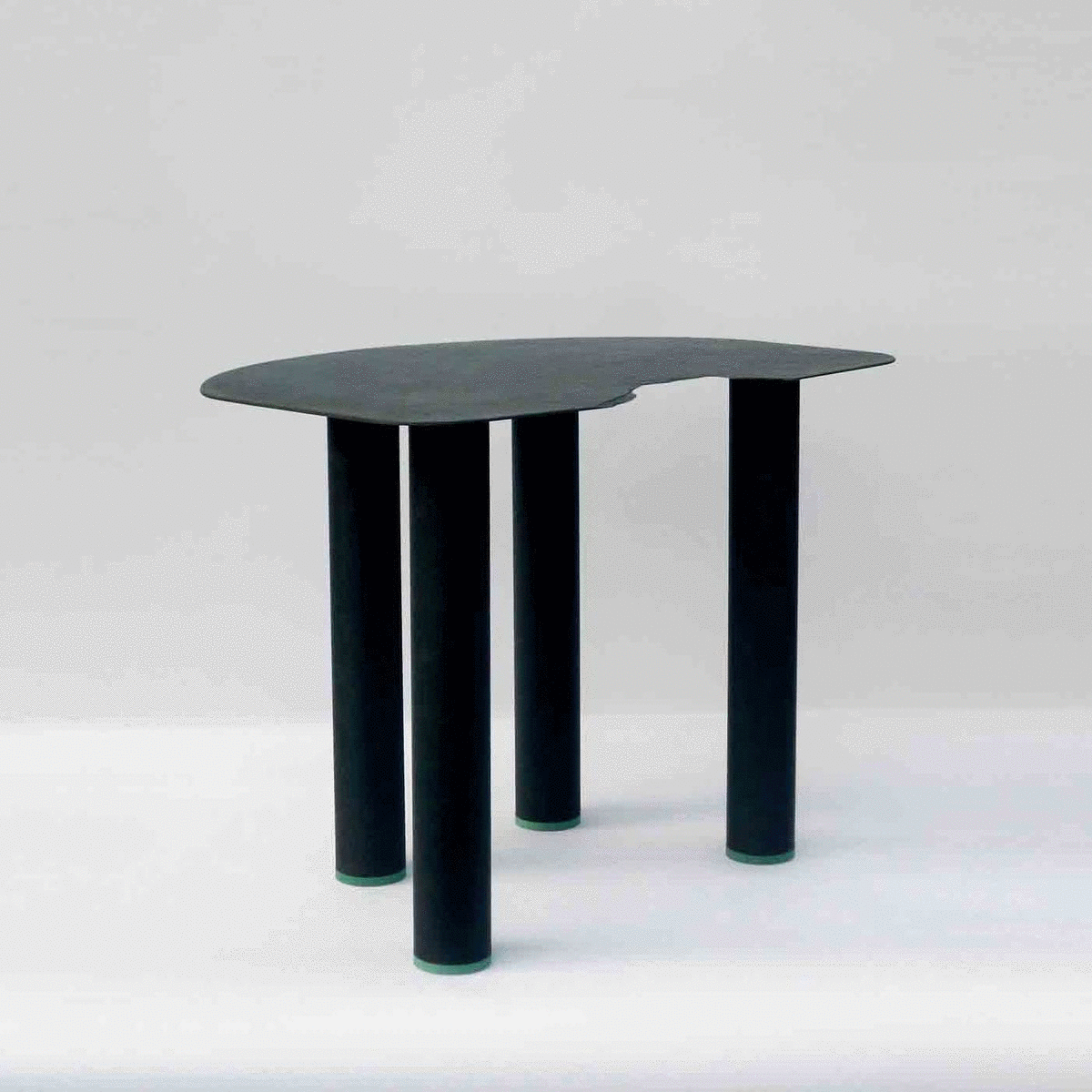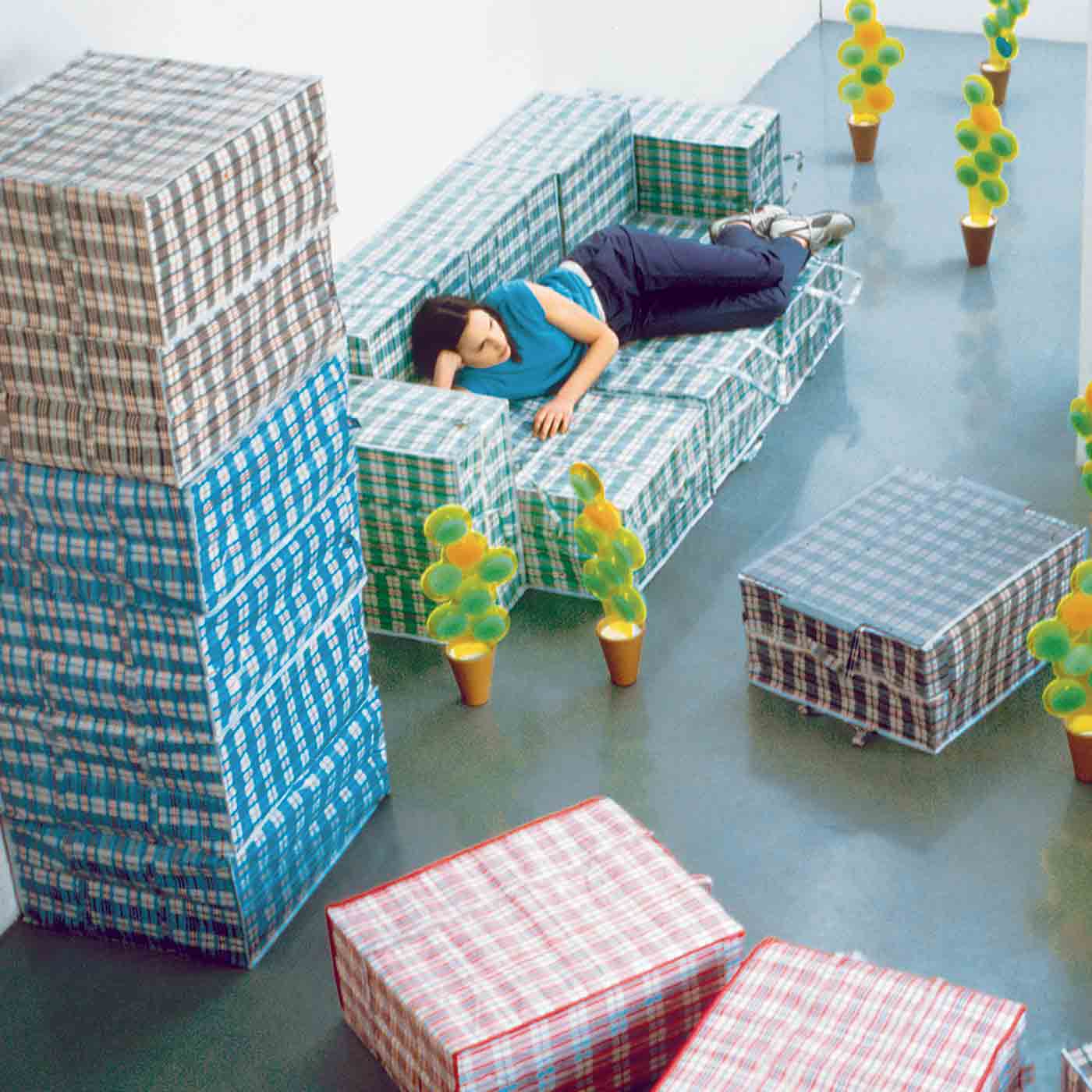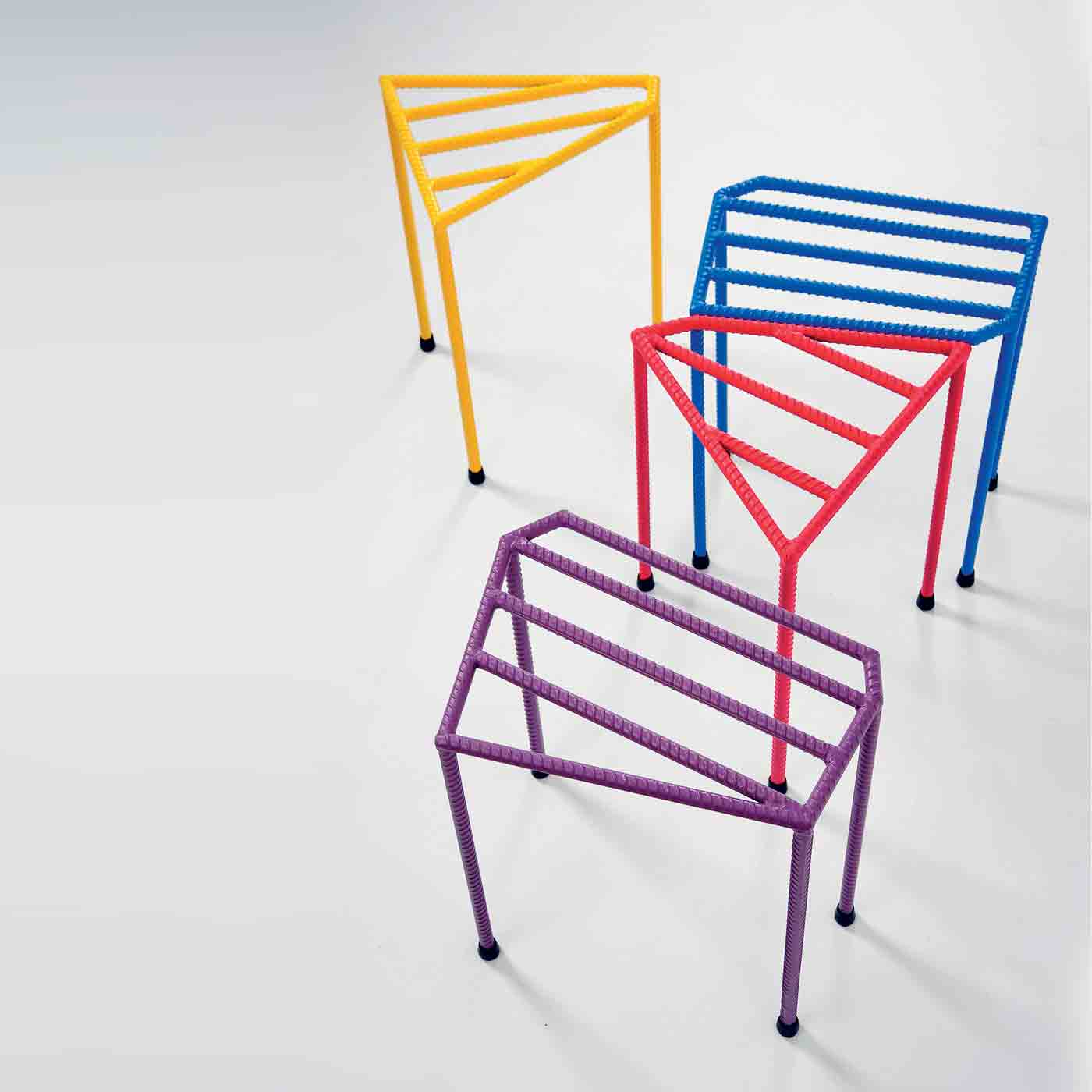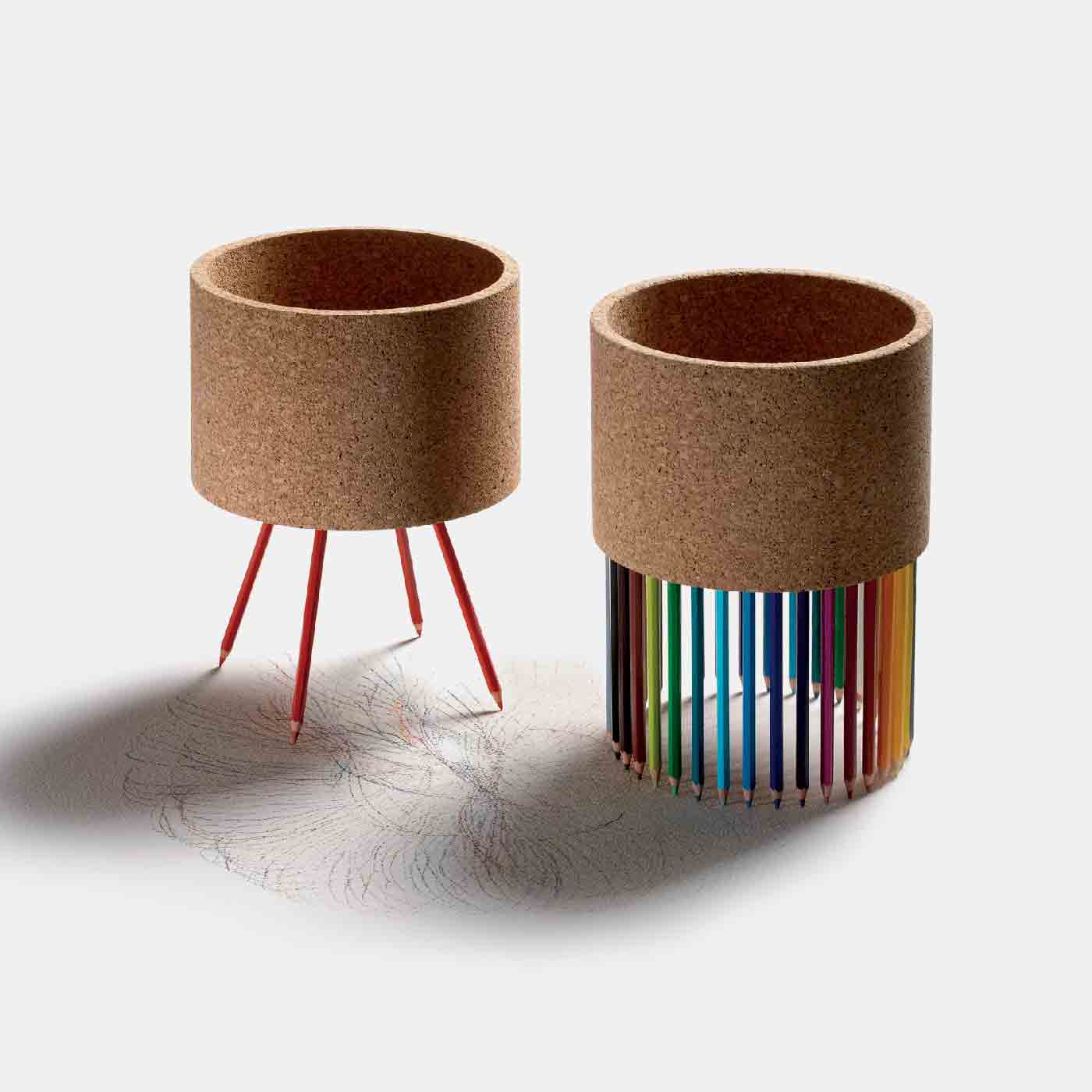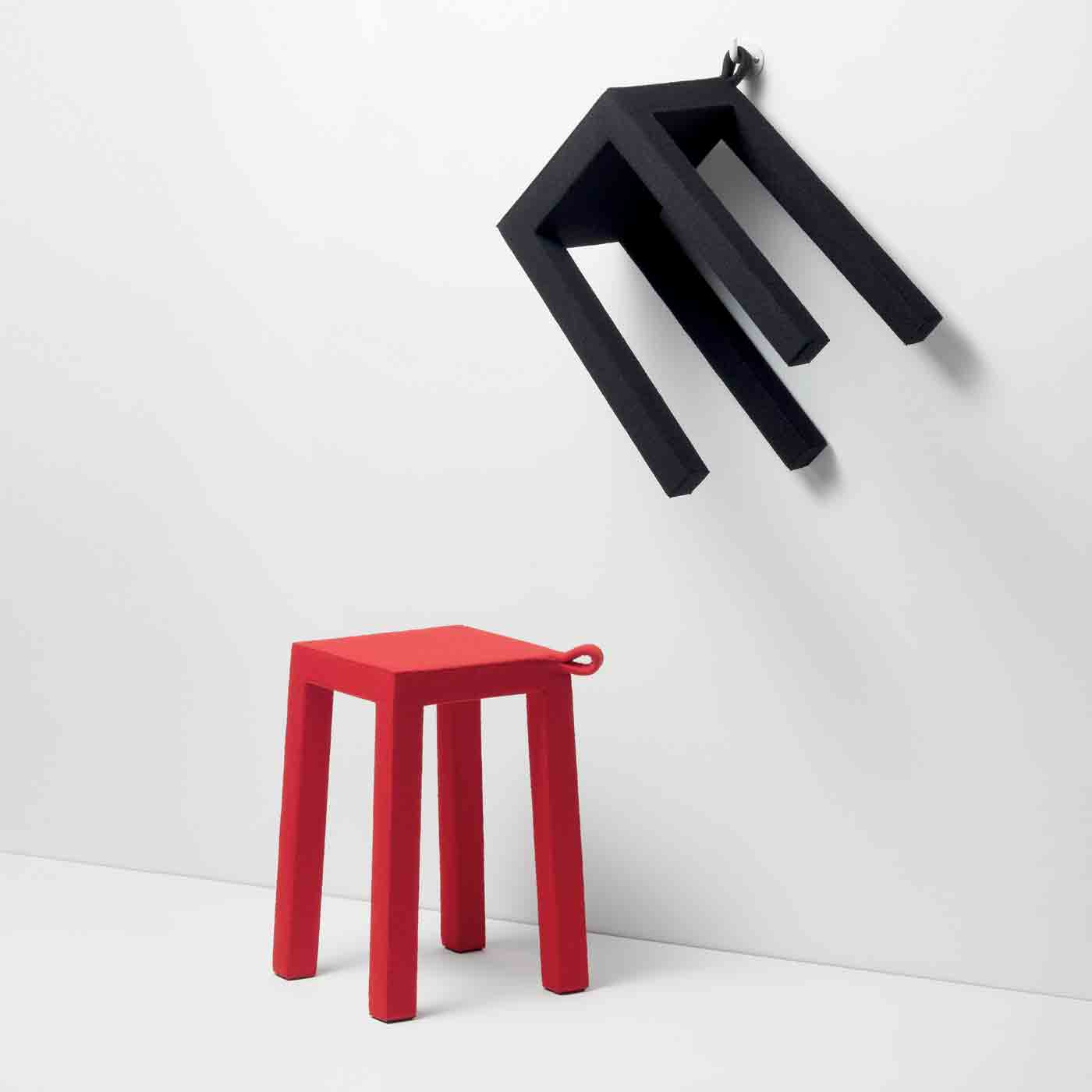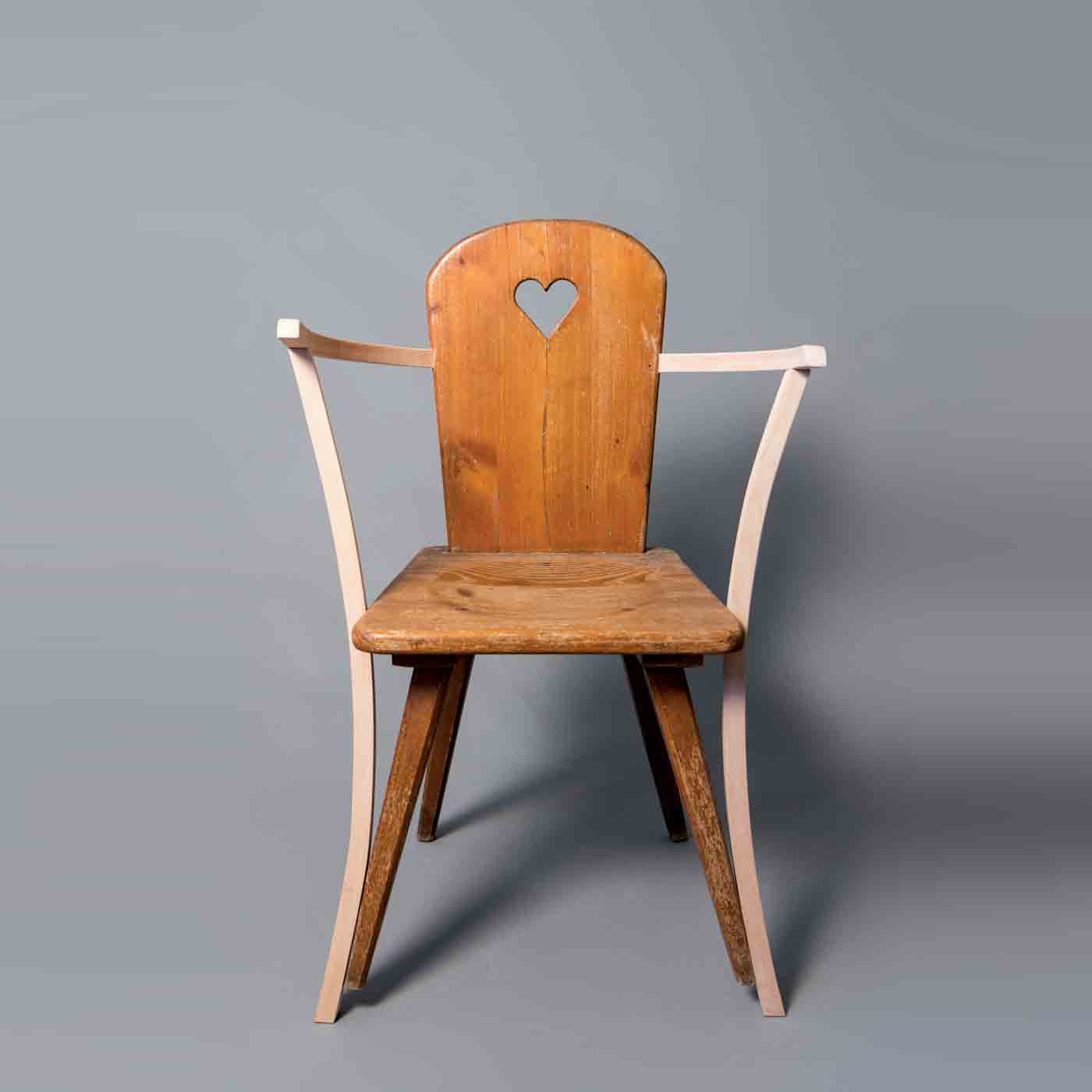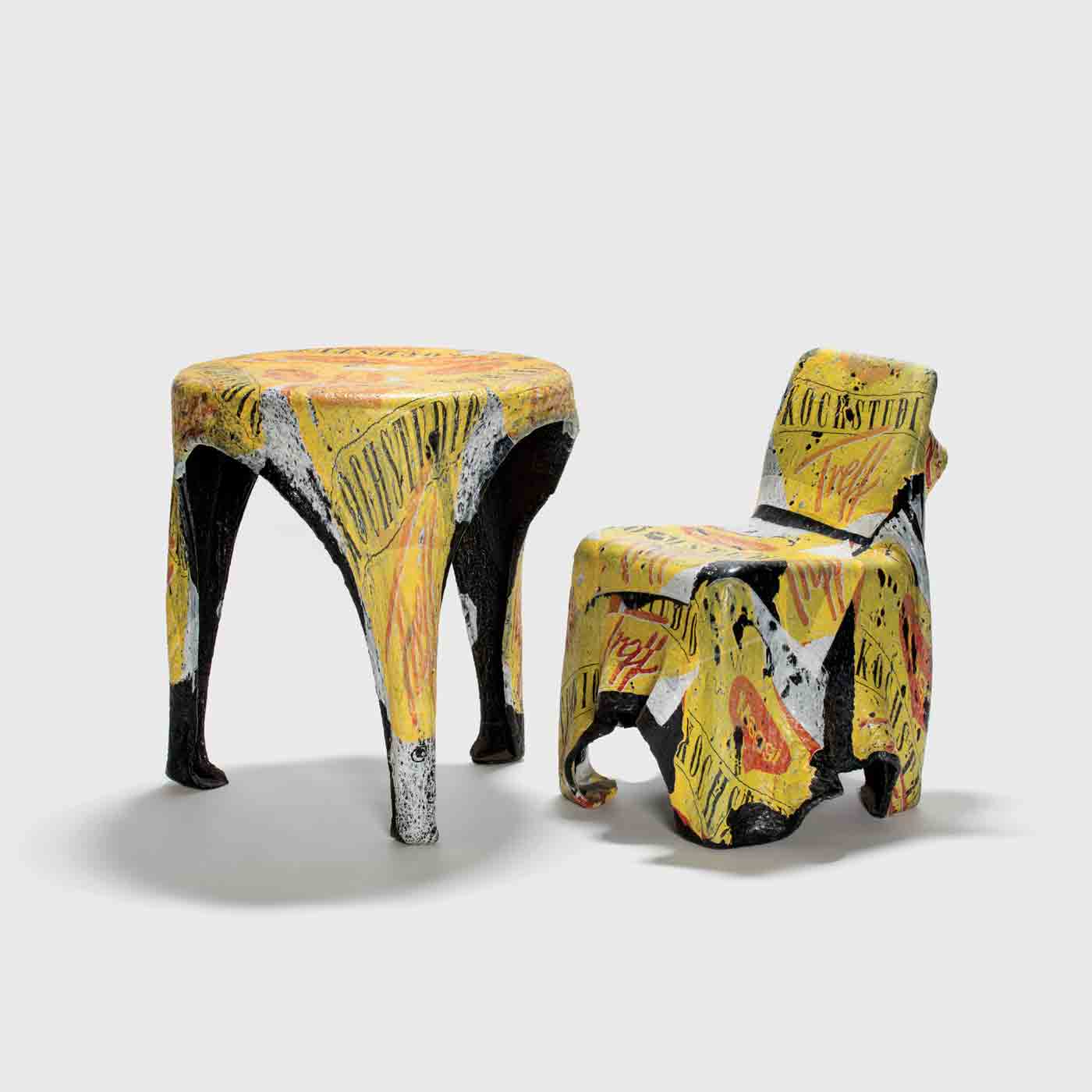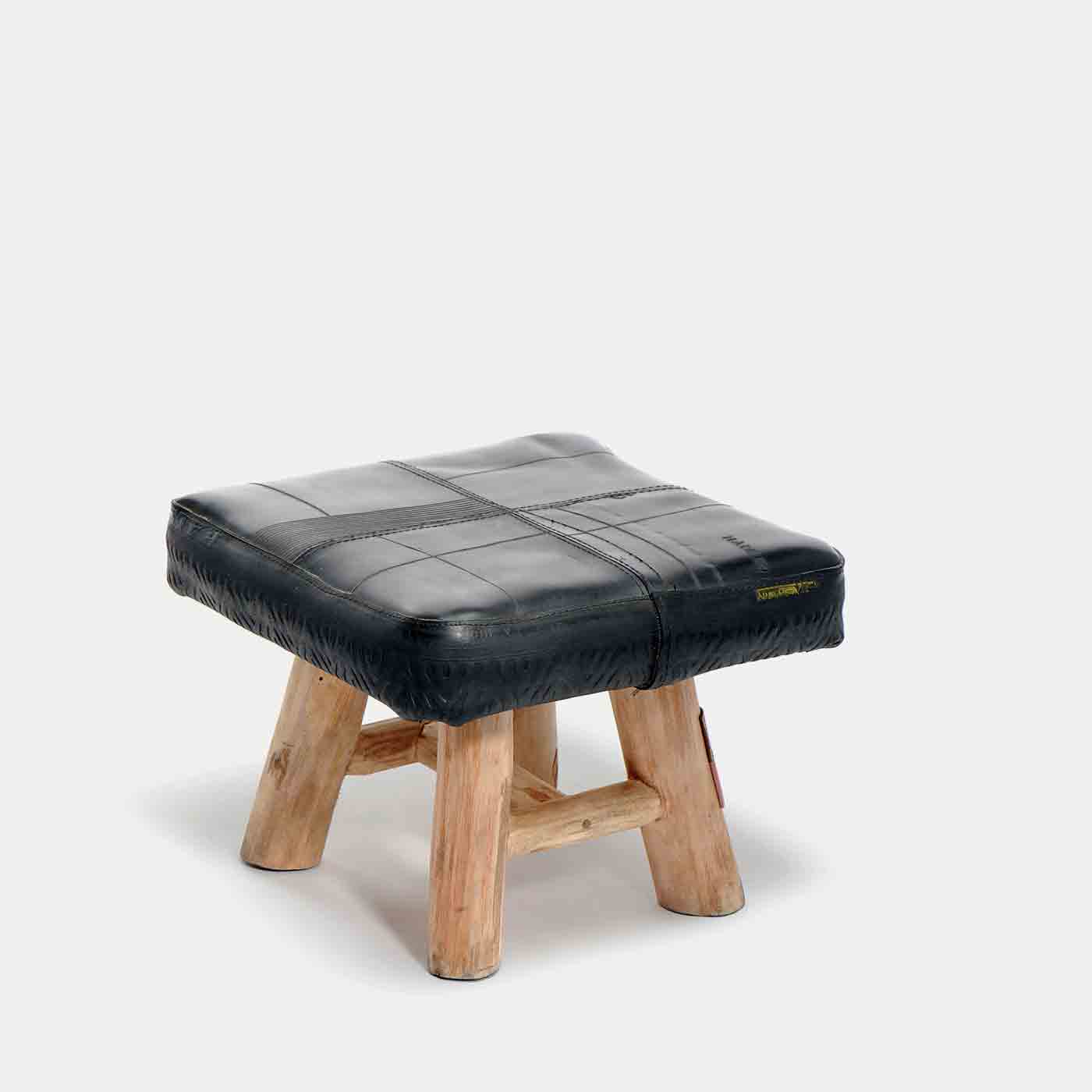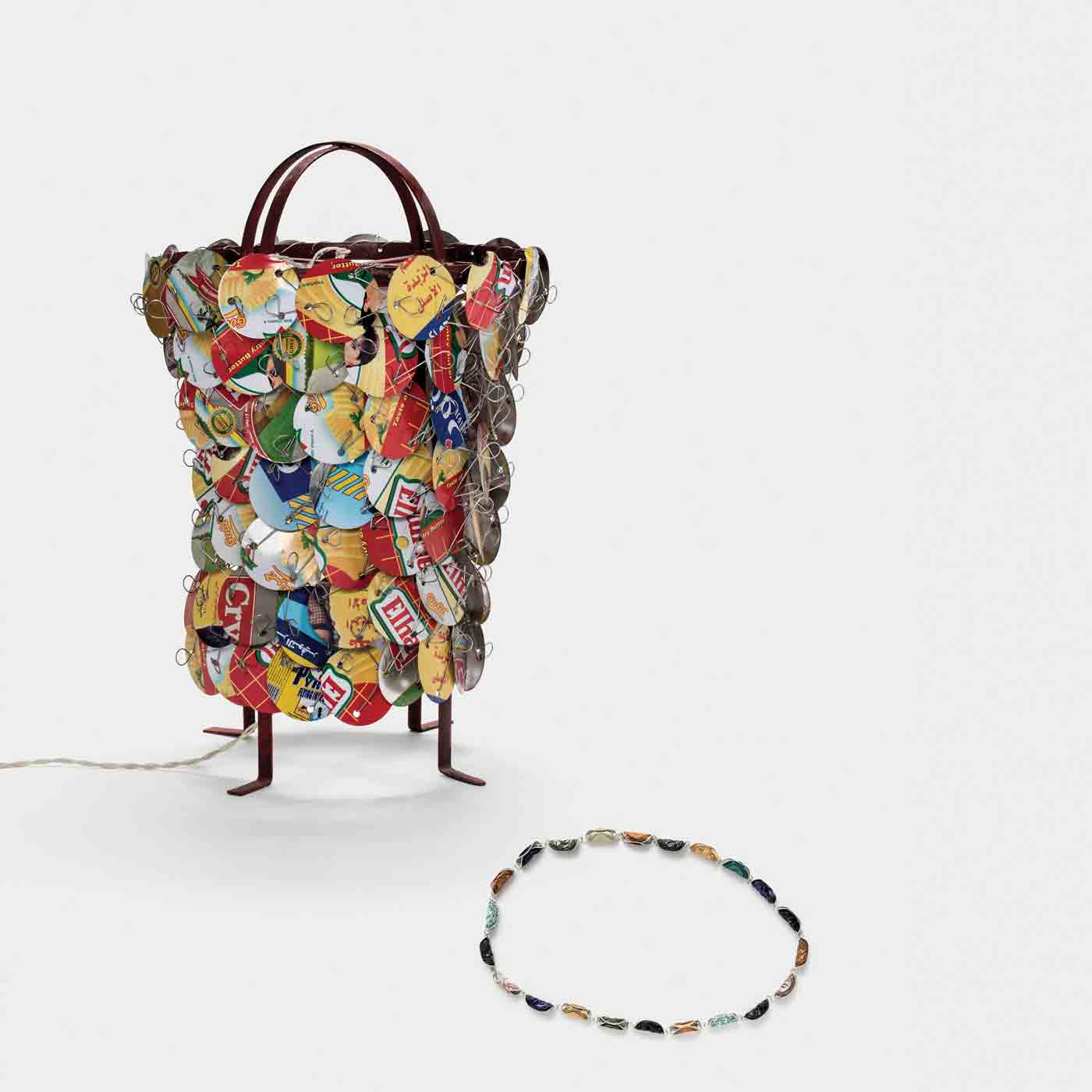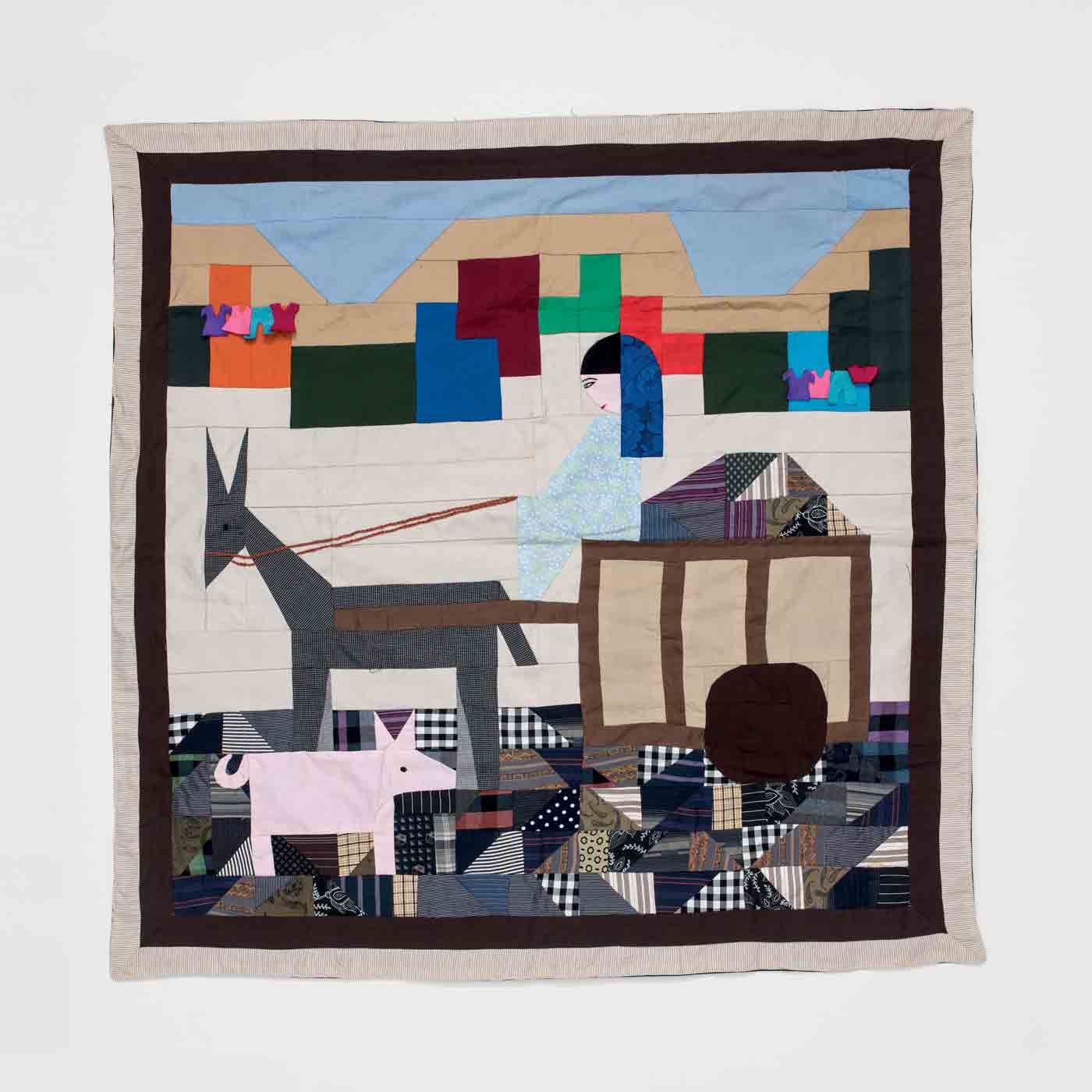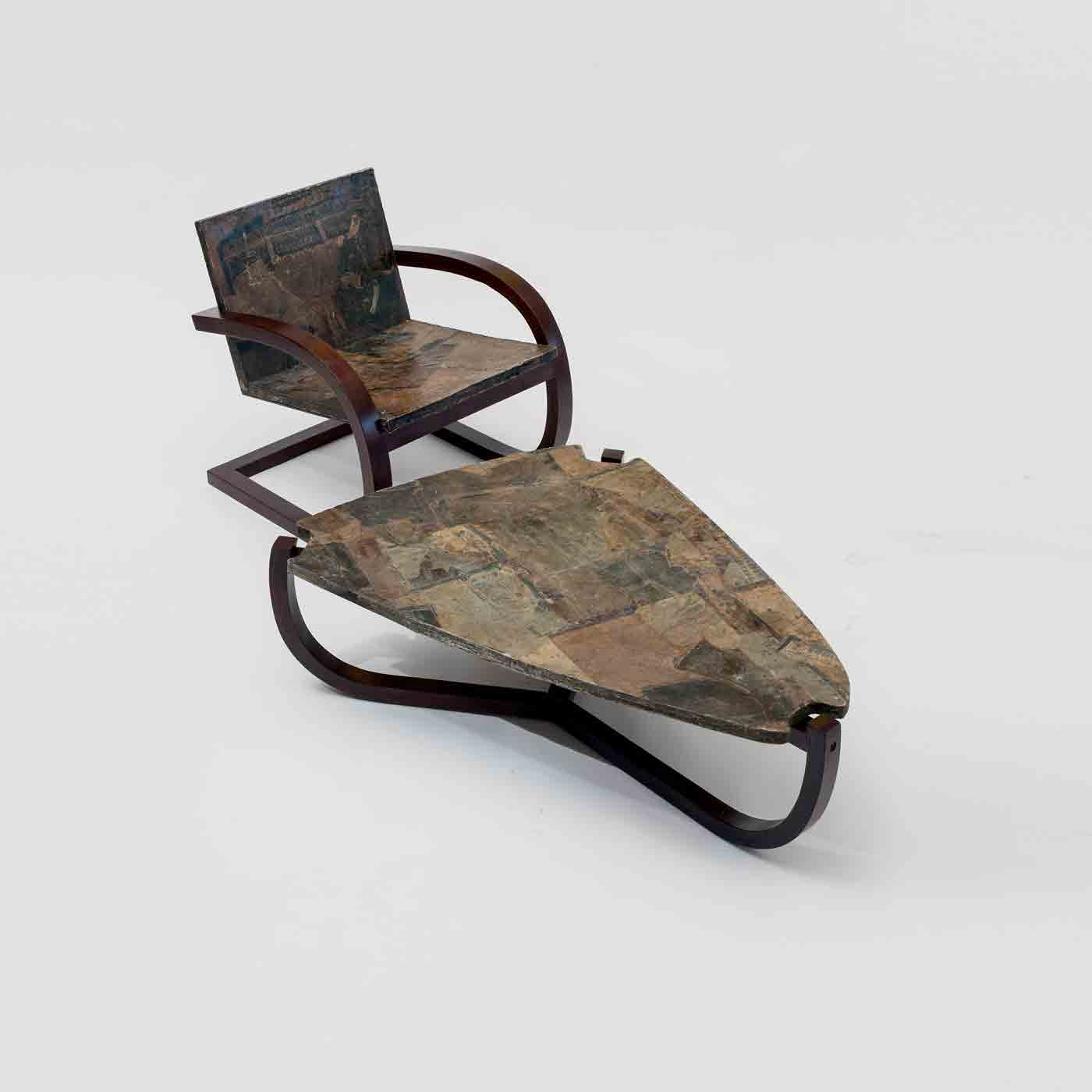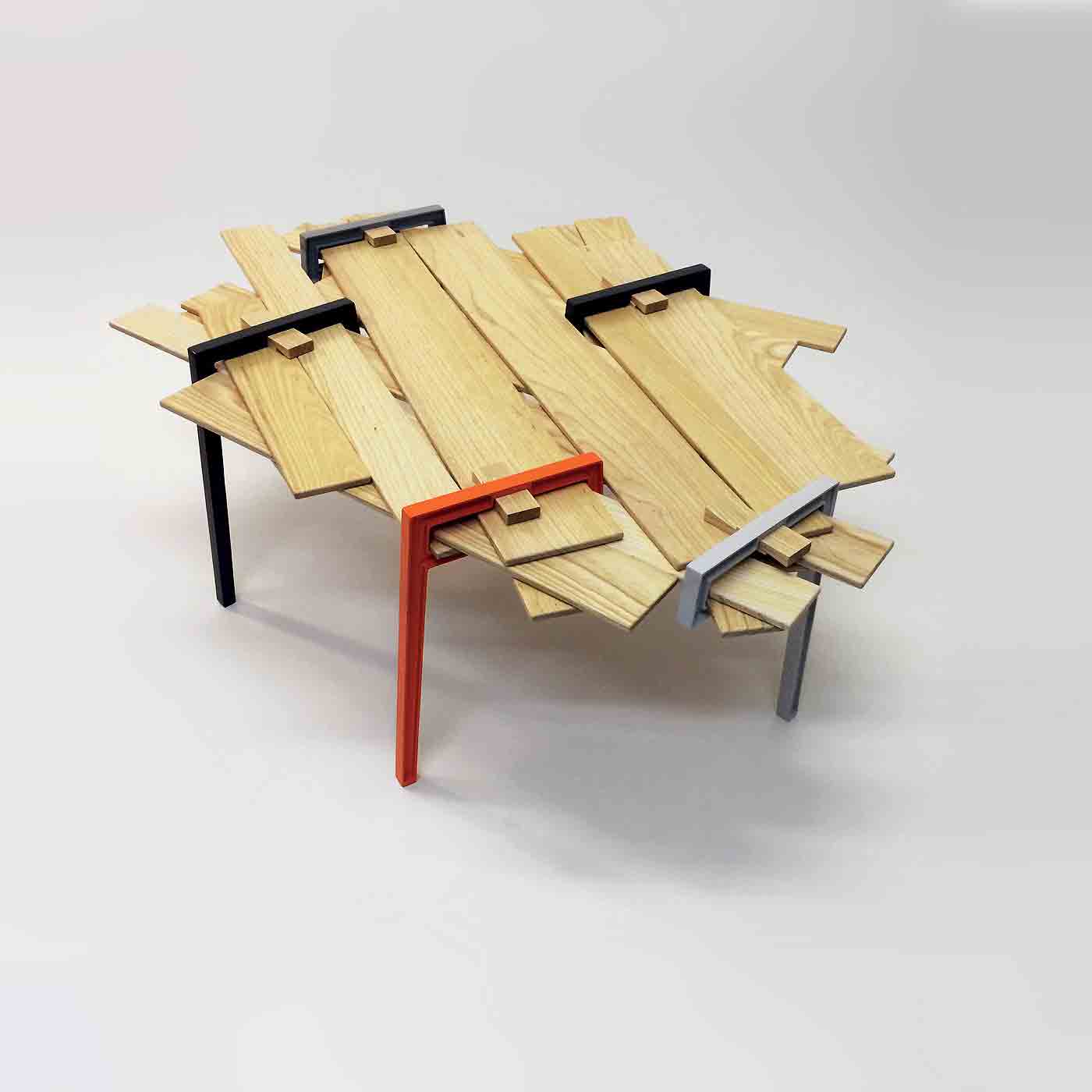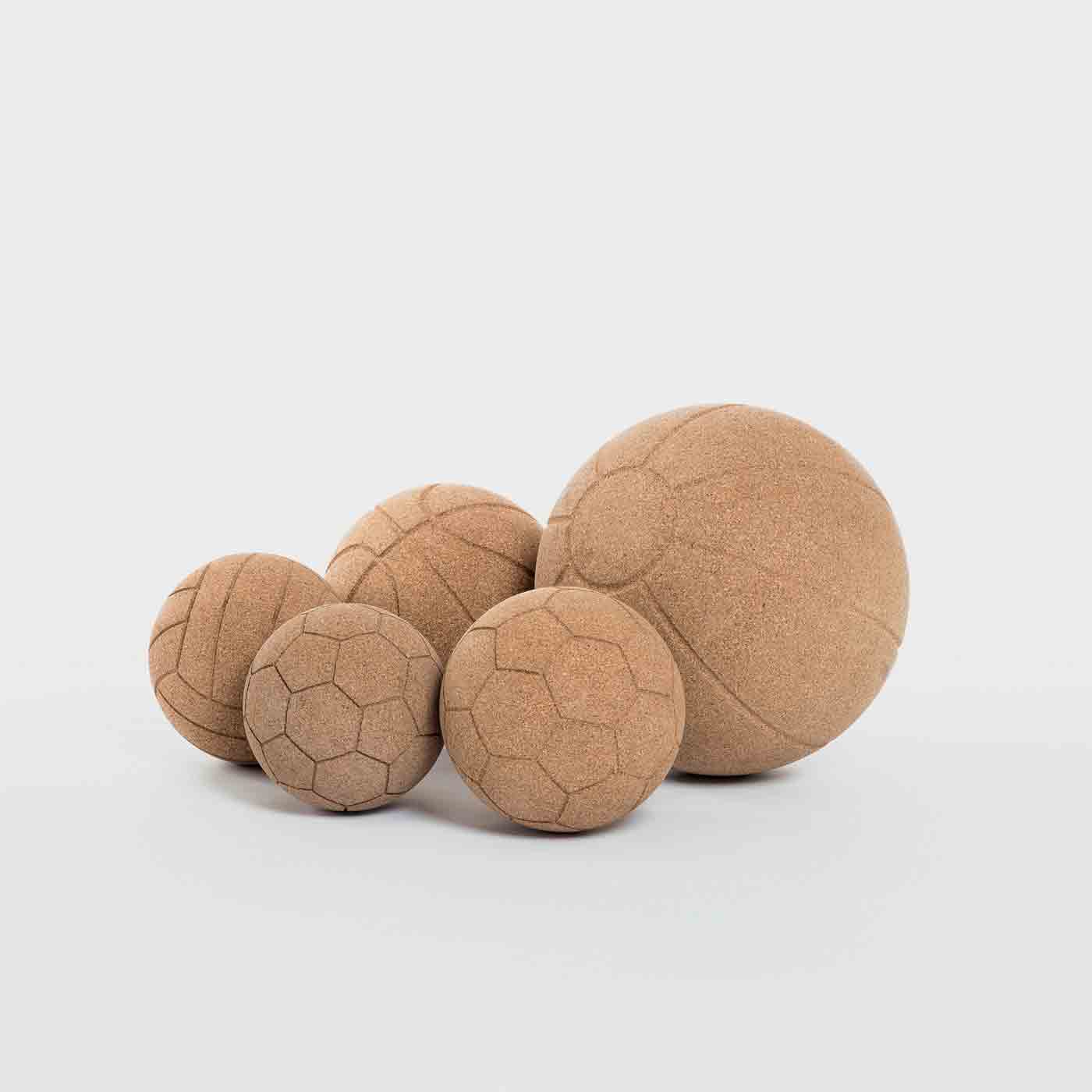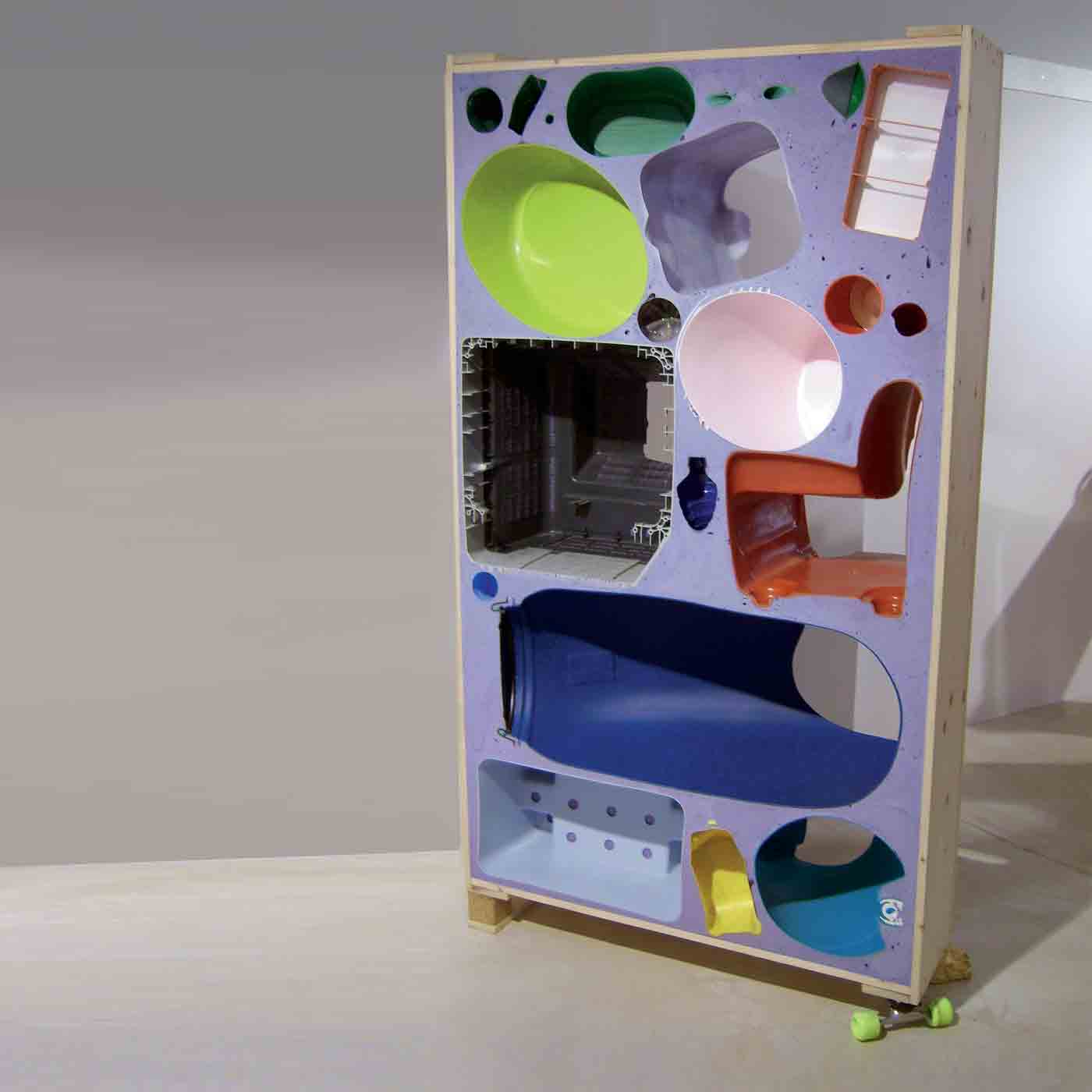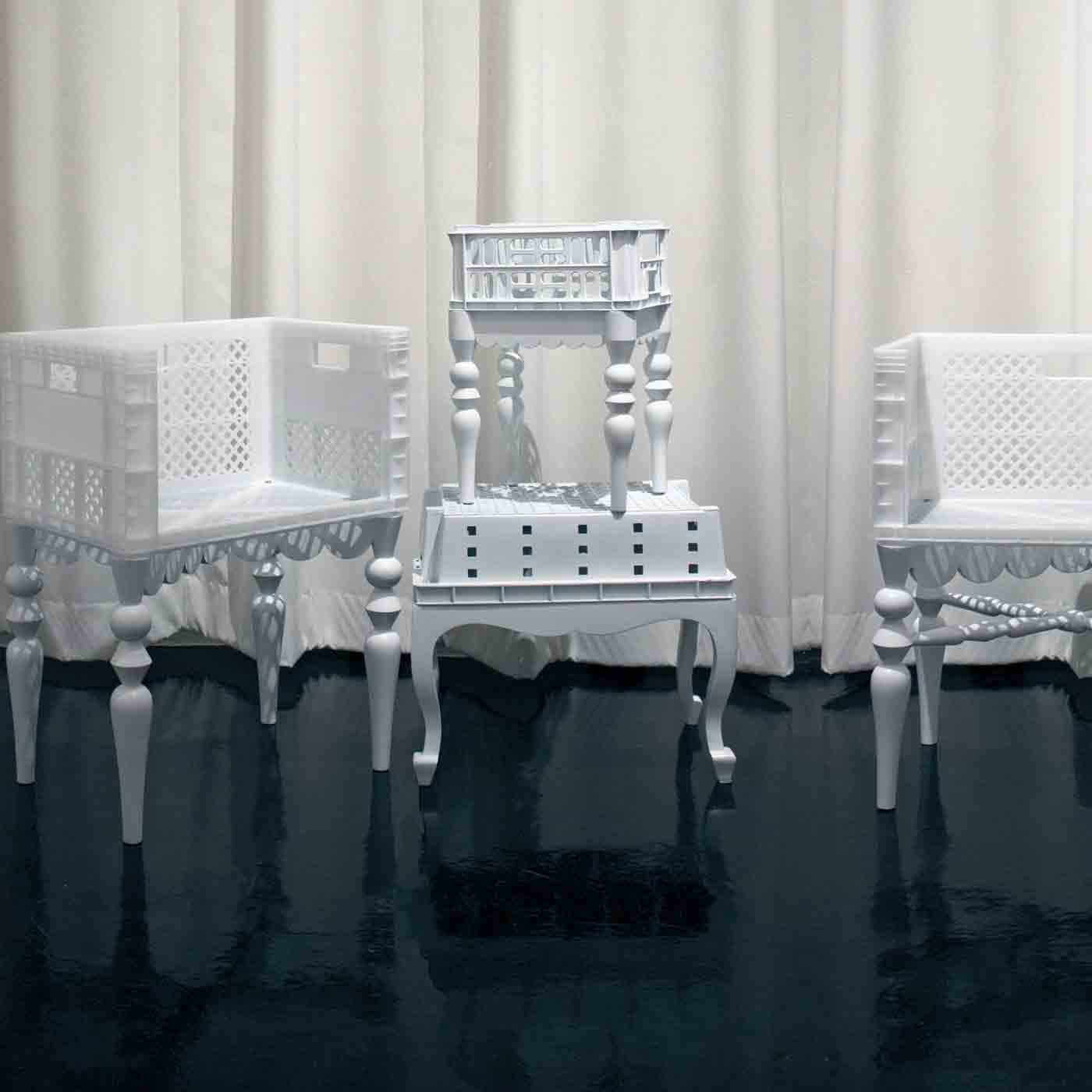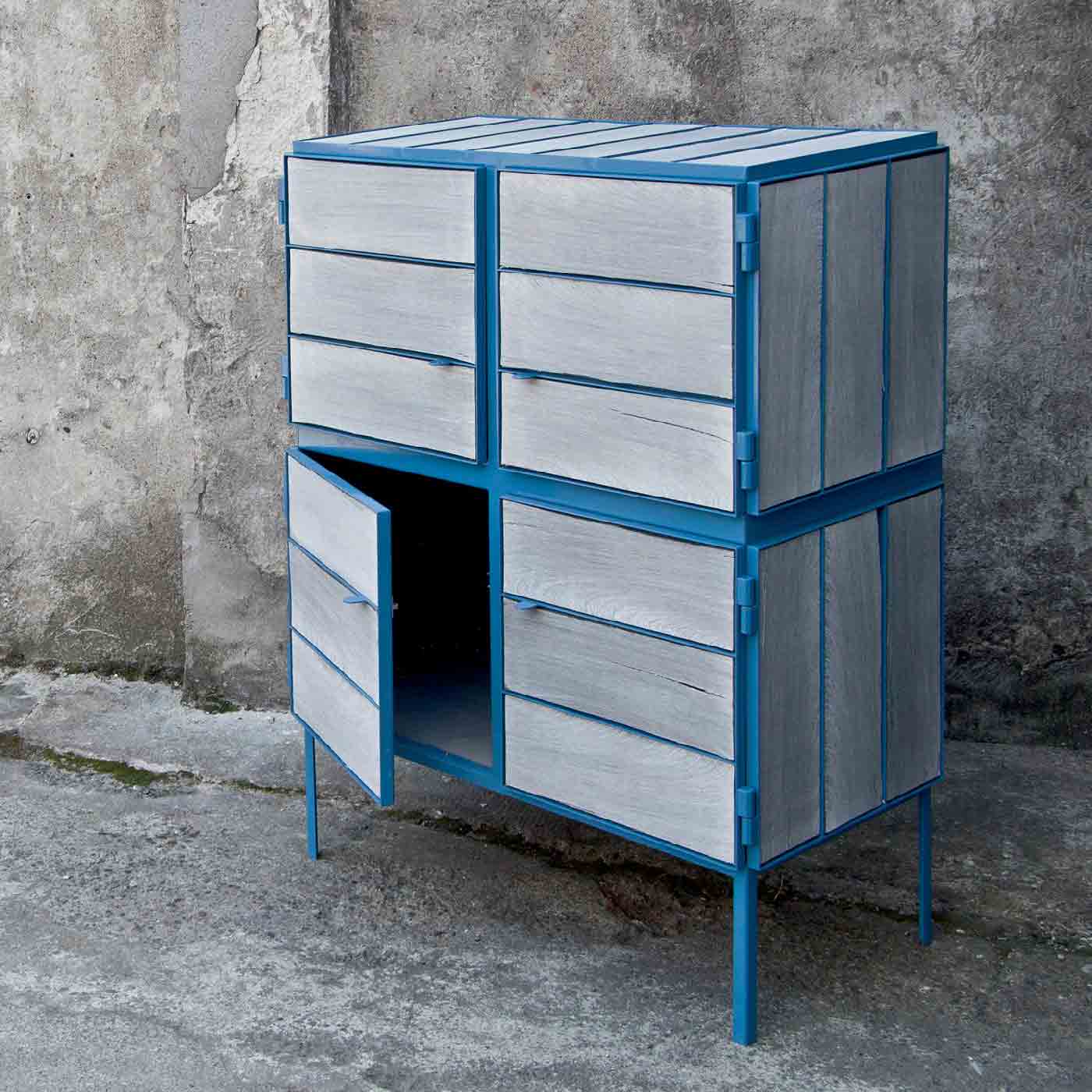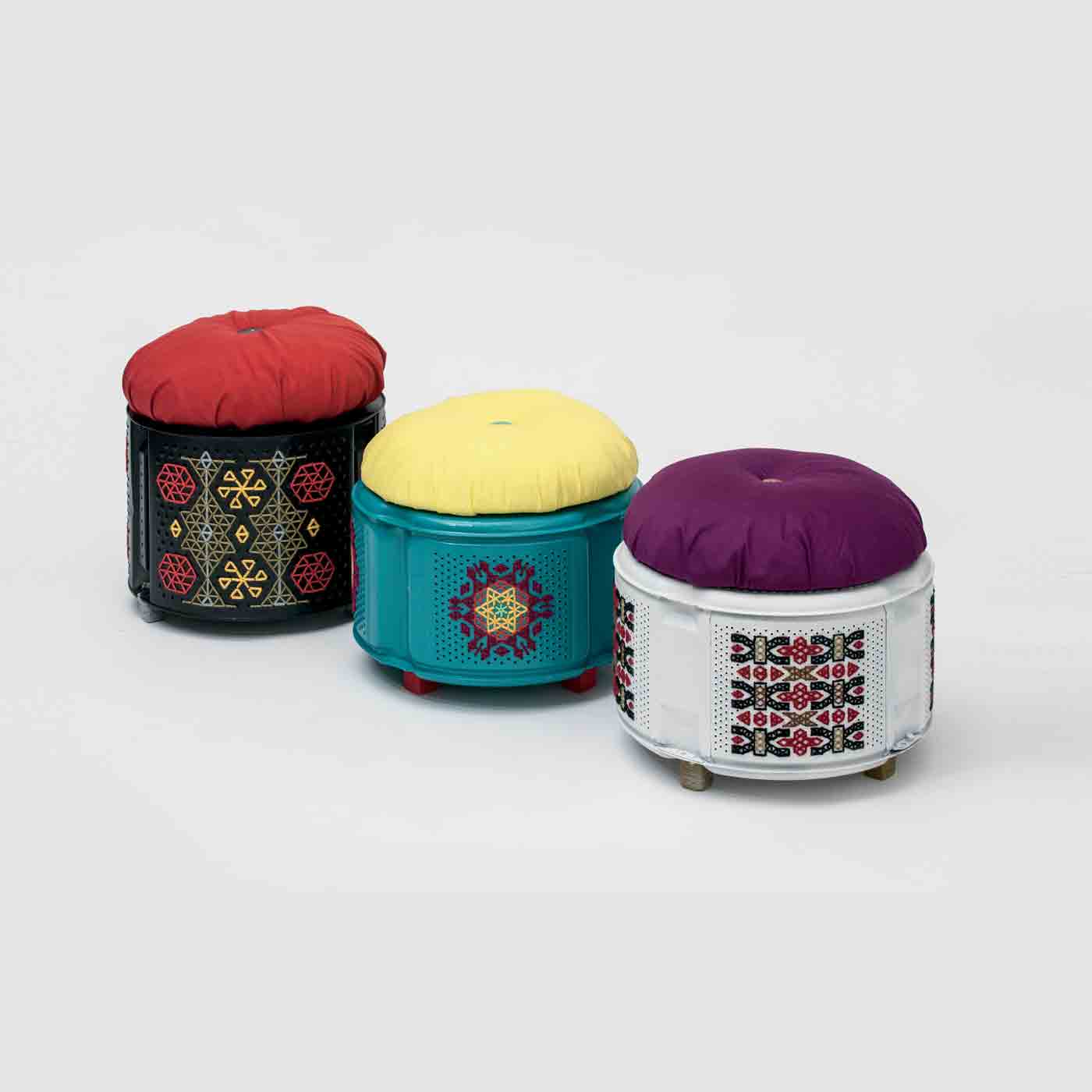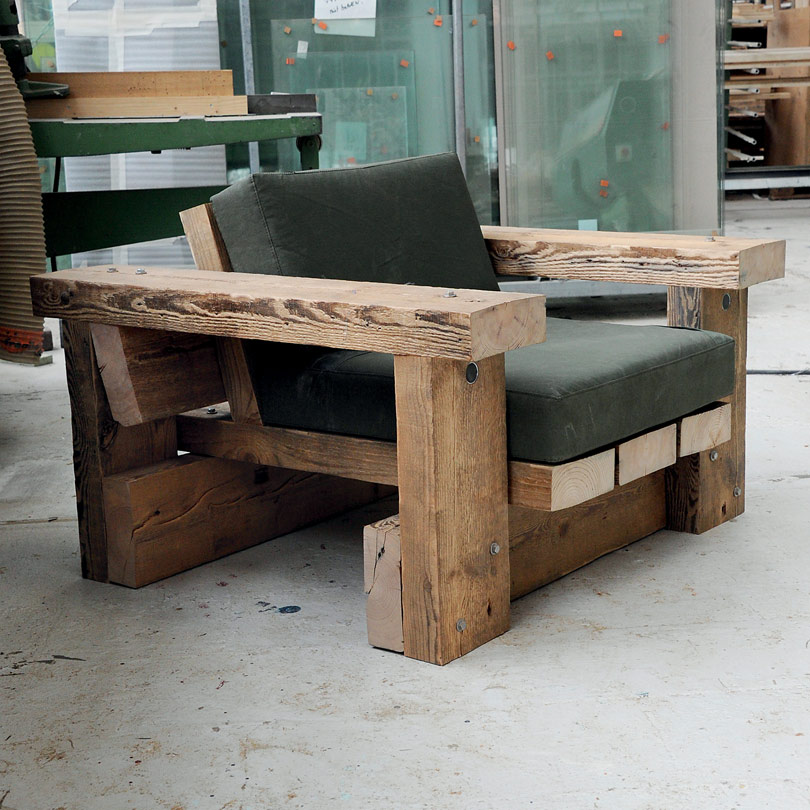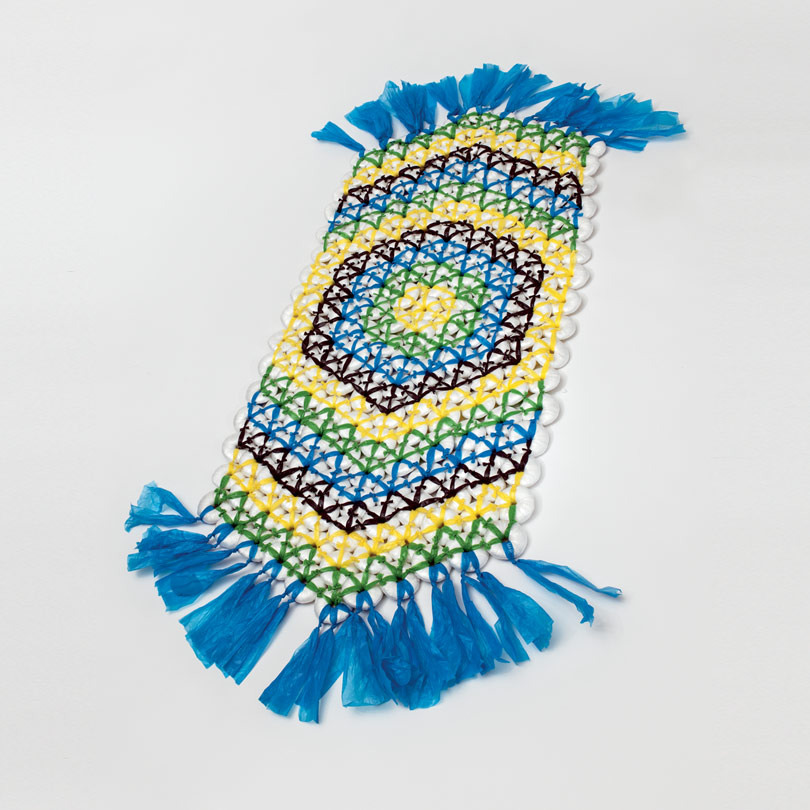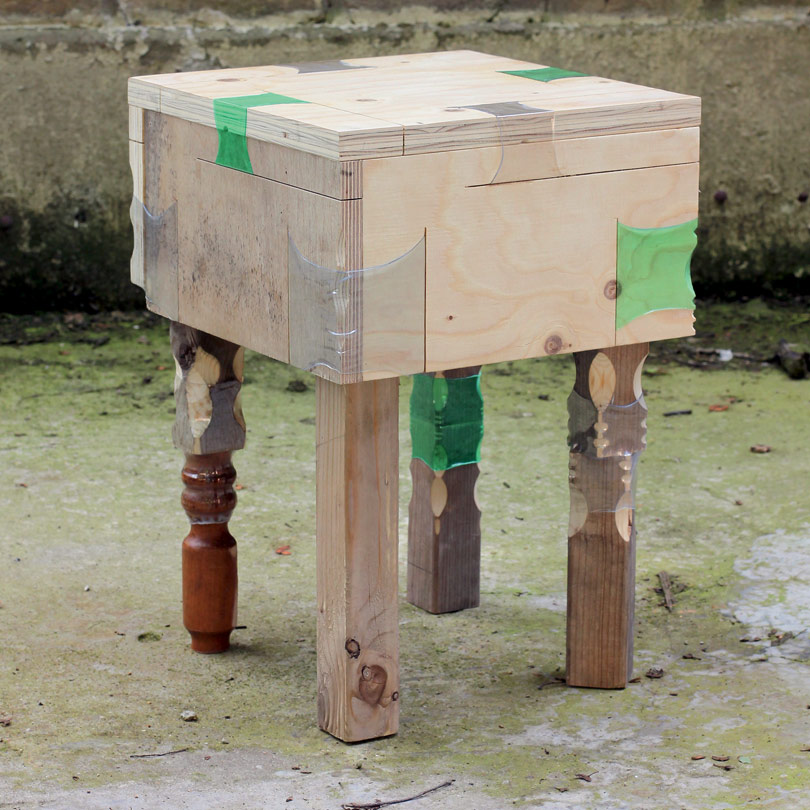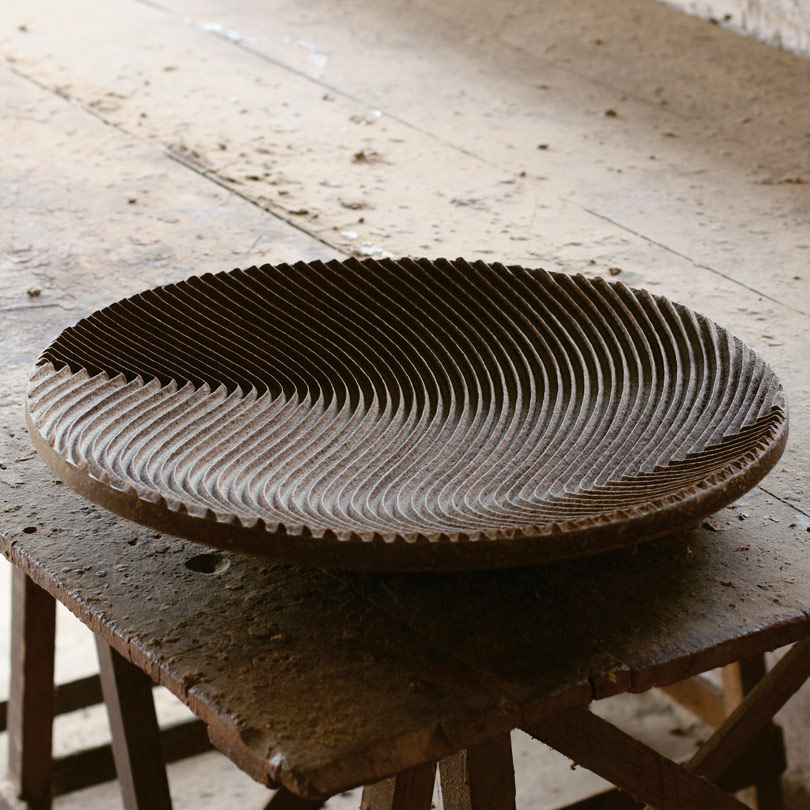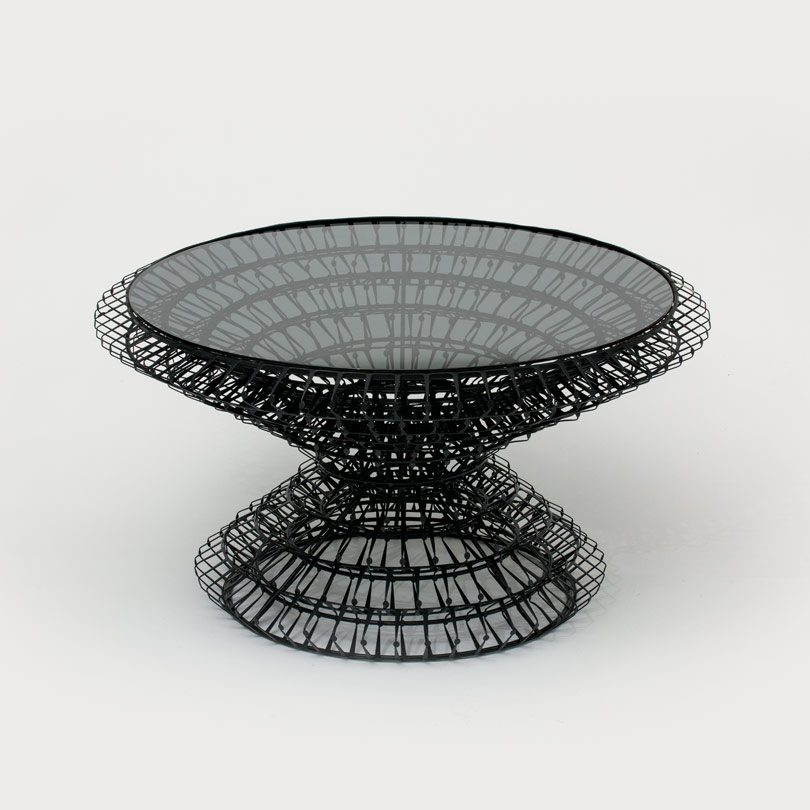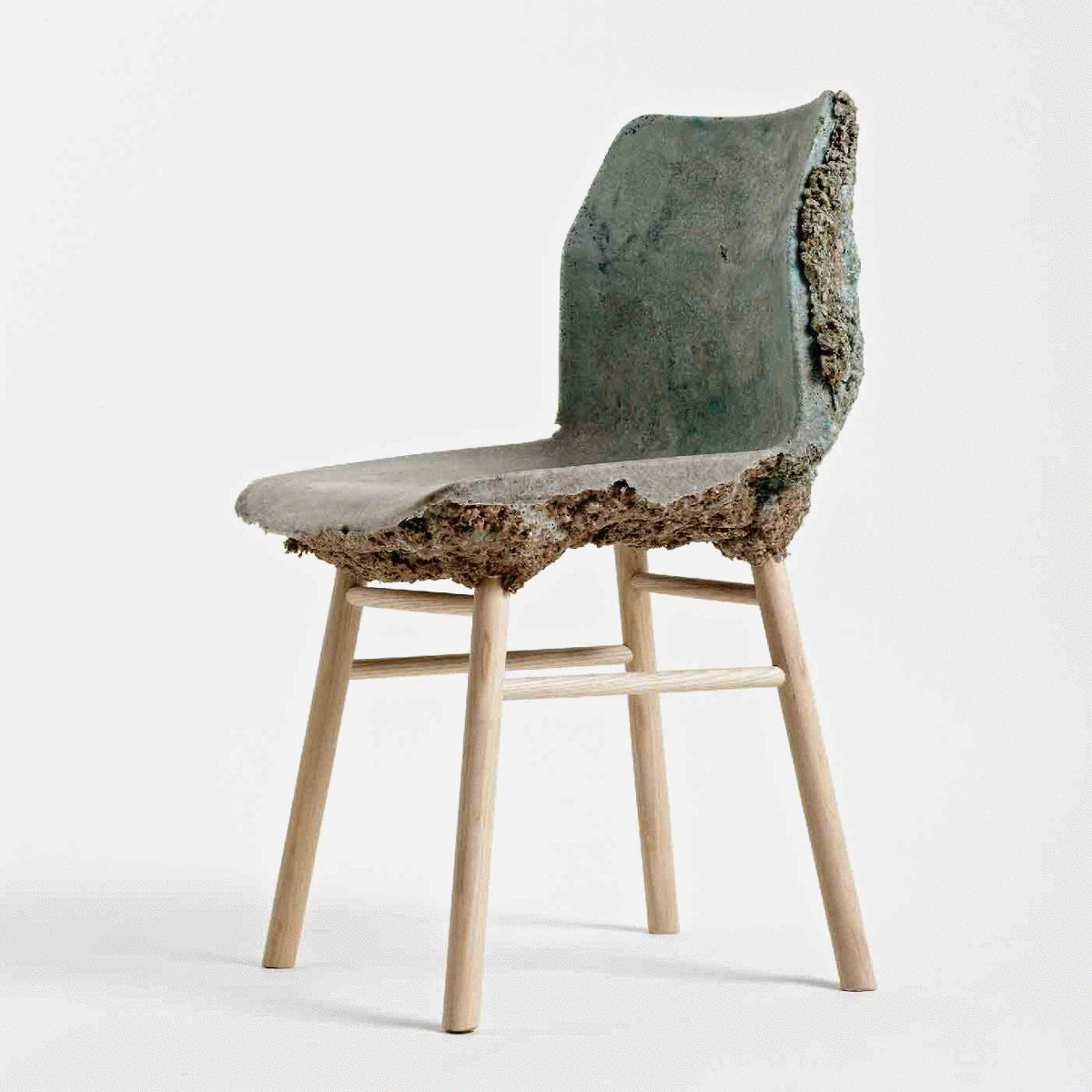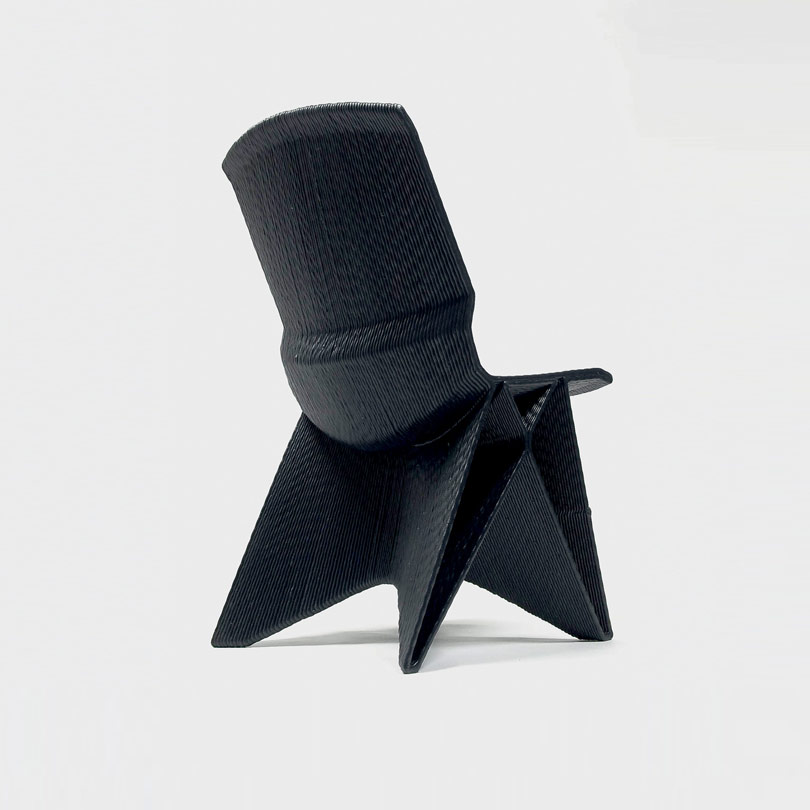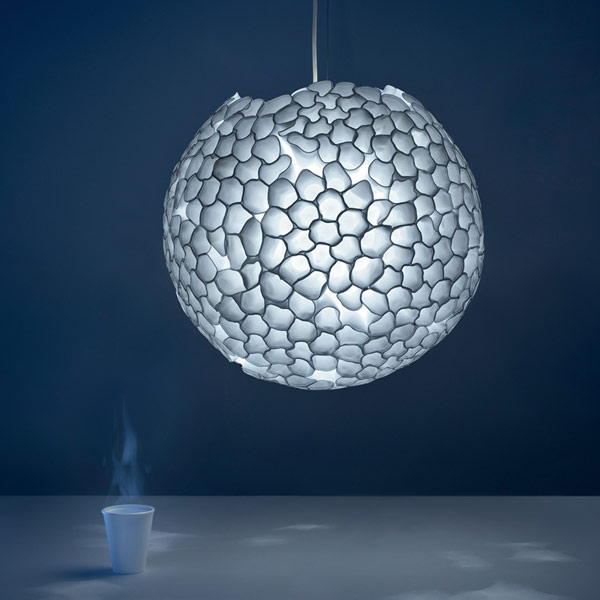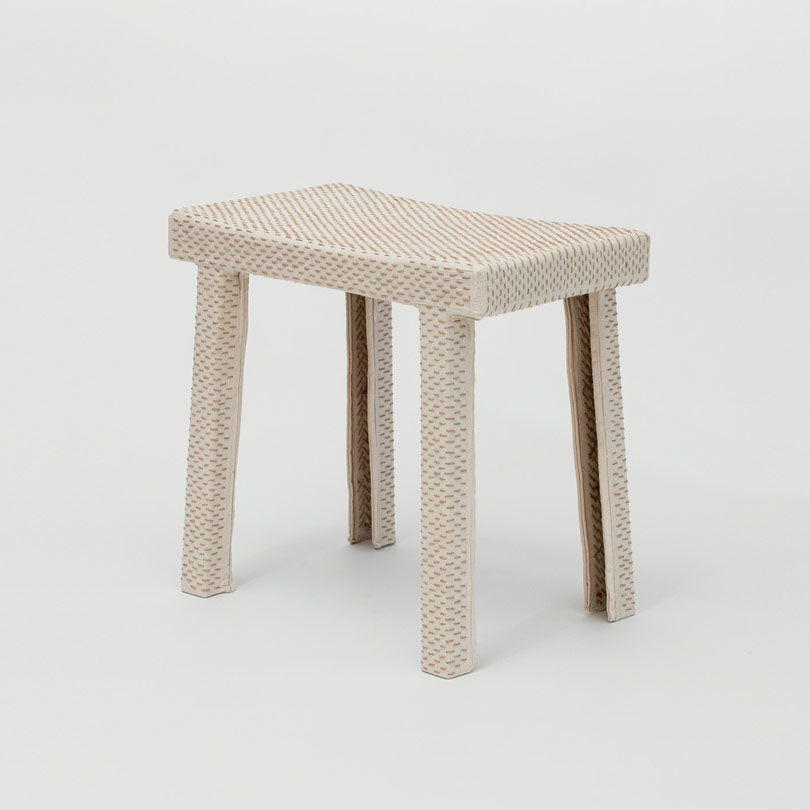CURATORS ESSAY
UPCYCLING IN SOUTHEAST ASIA
by eggarat wongcharit
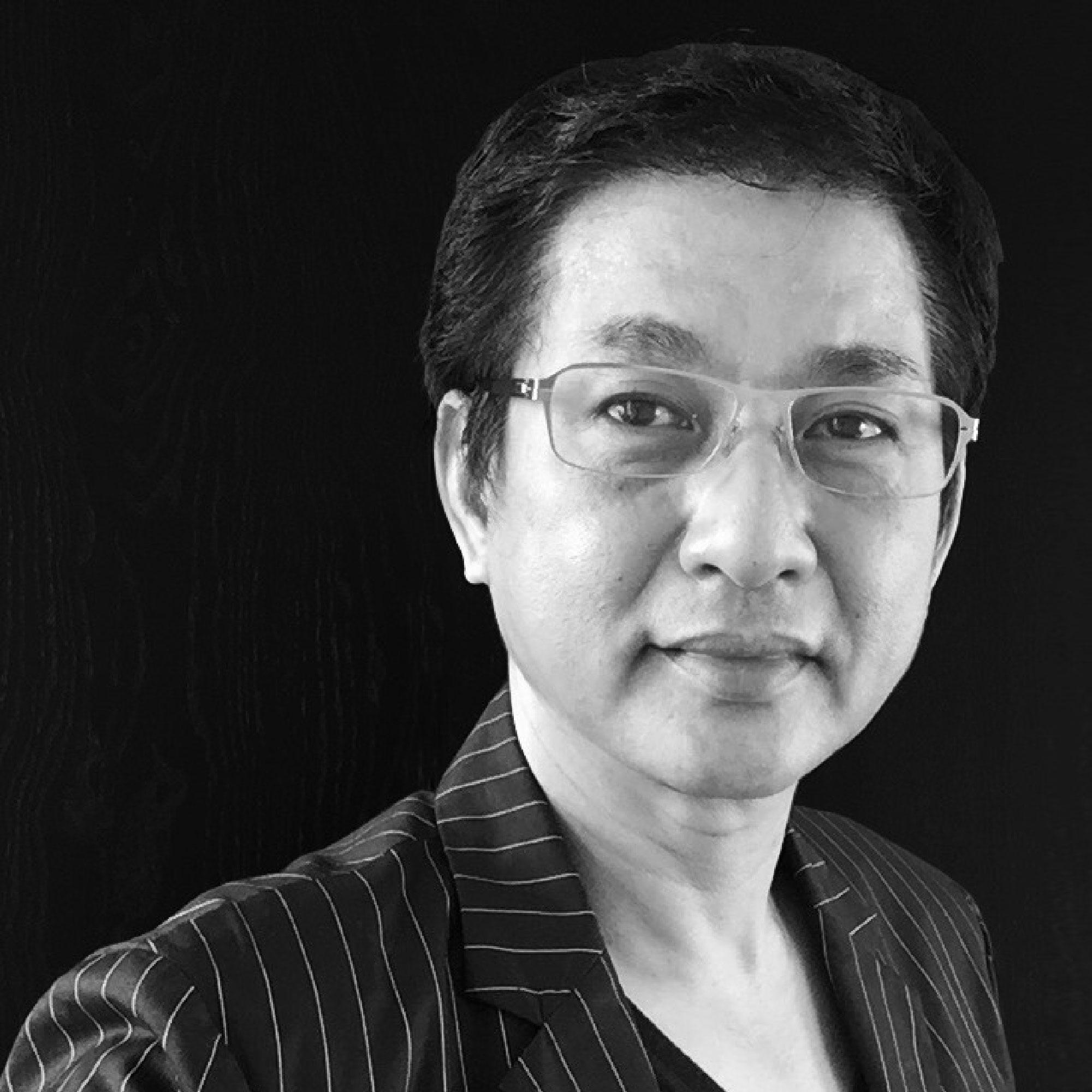

Eggarat Wongcharit
Bangkok, Thailand
Pure Gold Curator for
Southeast Asia
Eggarat Wongcharit studied graphic design at the Pratt In-stitute, New York and trained in advertising for five years before moving into three-dimensional design when he studied at the Domus Academy Milan, Italy, in 1987. He developed his own furniture design in his training at Studio Paolo Nava while also freelancing for local furniture companies in Brianza for five years. He started his own furniture manufacturing process when he returned to Thailand in 1993 and established his Egg-Karat studio, where he merged traditional Thai craft techniques with modern processes of manufacturing and created a range of furniture that expressed Thai design DNA.
In 2003, he has established Crafactor, a local furniture brand that aims to export its furniture products to a global market. At present, the products are sold to many retailers, boutique hotels and residential projects around the globe. Many of his international and local award-winning items of furniture have been featured in the international media. His skills in graphics, furniture, products and interior design are also reflected in various de sign projects, including the Iniala beach hotel project in Phuket, Thailand, where his versatility is particularly reflected in Villa Siam. In 2012, to pursue his vision of promoting Thailand’s brand identity globally, he created the exhibition Slow Hand Design for the Milan Design Week. The exhibition showcased objects produced by local manufacturers that reflect Thai design DNA with global workability. The exhibition was supported by the Royal Thai government Department of International Trade Promotion. He is also in terested in design education. With his experiences in leading and teaching in the master’s of fine arts program in design at Rangsit University (1994–2010), he developed training in practical design skills, production and marketing for professional workshops for his exclusive clients. Today he is still pursuing his own design path to further develop and produce projects for a global market.
UPCYCLING IN SOUTHEAST ASIA by EGGARAT WONGCHARIT
After many years of development, Southeast Asia now has highly advanced economies and industries. The growth of heavy industry has had a drastic impact on the environment and also the population. Some twenty years ago, Southeast Asia’s massive downturn impacted negatively on the region’s economic infrastructure. Many jobs were lost, affecting both locals and international employees. Bankruptcies and unemployment led to many drastic cases of suicide. This was a turning point for Southeast Asia, as the economic crisis took place in the light of new paradigms in globalization. Architects and designers, sacked from design companies, became entre-preneurs starting their own businesses and combining their modern design know-how with local handicraft technologies. This was a step towards a new dimension in product design and manufacturing. Many alternative materials such as water hyacinth, recycled wood and recycled fabrics have been used. This has created a new kind of craft product with sustainable production costs and lower consumption of natural resources, while at the same time expressing innovative design aesthetics.
Recycling via Local Wisdom
Rapid industrialization in Southeast Asia has led to many pollution issues. Reduce, reuse and recycle are the three Rs that many governments in the region have campaigned for. The three Rs are formulated to tackle the waste crisis, but in most cases the strategy has only been implemented in capital and major cities. As waste increases, the degradation of natural resources increases too. To sustain the future of the environment in Southeast Asia, long-term solutions must be developed and implemented soon.
Upcycling in South East Asia
Consumers should want to buy recycled products not only because they are aware of environmental issues. The standard of upcycling production should also reflect product value that can improve lives. Standardized upcycling should use less energy, save labour costs and be friendly to the environment. In Vietnam and Thailand, the process of upcycling plastic waste is still considered unsanitary. Intensive research on environmental management should be furthered in order to better hygiene in village communities. Many Southeast Asian manufacturers have recycled waste materials and launched their products to global markets. In Indonesia, billboard vinyl has been turned into hand-woven bean bag poufs. Reclaimed FSC certified teak wood from the furniture industry is reinvented into indoor and outdoor furniture. Recycled hand-formed glass vessels on driftwood bases are crafted for home decoration, and in Bali and the Philippines wine, beer, liquor and soda bottles are upcycled into a range of glassware catering for restaurants, bars, homes and events. These repurposed tumblers, juice glasses and vases are eco-friendly products.
Crafting Waste: From Natural Materials to Industrial Waste
To better serve the practical functions of domestic living, Southeast Asian artisans have created craft objects made of available materials found in their local neighbourhoods. The wisdom of village crafts has been passed on in families from generation to generation. Craft techniques have always been developed both for function and aesthetics. Materials are wisely adapted for different purposes. Craft artisans learn how to cope with living environments. As suburban and urban lifestyles have become predominant, waste has become more and more of an issue. Crafts are modified to fit in with new living contexts. The adaptation of techniques has been tried and tested on many types of industrial wastes. Craft objects are made to serve the demands of consumers, not only in local communities but also bigger urban markets. This is the turning point when alternative waste materials are transformed into commercial value.
Recycled Materials from Industrial Waste
The recycled materials mentioned below illustrate the present situation of upcycling in Southeast Asia. Such cases of recycled product innovation are well established and manufacturing processes are being continually developed.
Water-Hyacinth Furniture and Home Accessories
The export of water-hyacinth furniture and home accessories from Thailand, Indonesia and Vietnam has brought considerable income to these countries. For many years now, water-hyacinth products have been exported to Australia, the United States, Europe and Asia. Water hyacinth is a floating plant that grows very fast in rivers and canals. It clogs waterways, making boating, fishing and other water activities impossible. Millions of dollars are spent each year for the elimination of water hyacinth due to its rapid growth. After artisans in Thailand and Indonesia discovered the craft techniques of interweaving water hyacinth for furniture and home accessories production, water-hyacinth waste became a valuable material with high market demand. The large number of exports is evidence of the demand from consumers from around the world wanting water-hyacinth products for their home interior decoration.
Plastic Crafts Village
Vietnam is home to an astonishing 2,800 craft villages that include not just those that make handicrafts for tourists, but some that specialize in recycling all sorts of discarded plastic. Residents of these villages buy plastic from junk buyers or directly from waste pickers and process it into plastic pellets or film that can then be used to make new plastic products. In the Naa Poh district of Buriram province, Thailand, many plastic recycling factories produce mats made from recycled plastic straws. Farmers in these areas spend most of their free time producing bags and baskets made from the wasted mat pieces and make extra income for the families. The recycled plastic straw mats are widely used in Southeast Asian countries as floor covering. Production often begins at a time when the farmers and villagers are not busy planting or harvesting crops. Over time, artisans in different villages develop their expertise in weaving, woodwork, lacquering and metalworking. As industrialization has increased, many villagers have moved to live in the big cities. They retain their craft skills and craft production networks, but are now more focused on functional products for the city market.
Recycled Woodcrafts
Wood consumption in Southeast Asia is accompanied by environmental issues, as forestry preservation in these regions is still considered underdeveloped. Policing illegal forest destruction and wood smuggling is not very efficient, and corruption is widespread. This is an ongoing problem that seems to have remained unresolved for many generations. At present, exporting wood to international markets requires certification according to the standards of each market. The process of certification has slowed demand for natural grown wood and has helped to gradually reduce illegal deforestation, while sustainable forestry has been enhanced to serve the demands of architects and interior and furniture designers. Excess industrial wood that is left behind after construction of wooden houses, boats, etc., is often sold to many smaller craft enterprises as raw material. Thanks to the global demand for recycled wood crafts, carpentry skills and the techniques of wood-carving have been further developed, while the traditional wisdom of wood crafting is still retained.
Bio-degradable Waste
Apart from recycling industrial wastes, non-industrial wastes are also used as innovative craft materials. Different types of wood from fallen trees, abandoned forest driftwood, root wood and mango wood from fruit plantation resources are transformed into decorative objects that are sold to European, American and the Middle Eastern markets. Different types of bio-degradable wastes are also used in smaller craft industries. Banana fibre textiles, pineapple pulp paper, elephant dung paper, sugar cane bagasse, newspaper and magazine coiling paper and rubber sheet from used inner tube tires are used in craft-making. These waste materials still require a further step in design development to help to distribute the end products into different market channels. Market expansion will help increase the demand for recycled products while also facilitating waste reduction.
Turning Waste into Taste
Many designers from Thailand, Indonesia, the Philippines and Vietnam have created product ranges for export made from recycled industrial waste. Decorative home accessories are designed by local designers who use both organic and industrial waste to express their design ideas, which have gained international renown. They use materials, ranging from water hyacinth, recycled wood, oyster shells, egg shells and plastic bottles, all reinvented and produced as home decorative products. Each country’s production has its own expertise in treating the materials with their own design solutions and techniques. When the products are made with good design and sensible marketability in mind, the upcycling of industrial waste reinvention will be gradually enhanced and expanded to serve the demand of global consumers.
EXHIBITS FROM SOUTHEAST ASIA
WORLD TOUR STATIONS
WORLD TOUR STATIONS
